Winter is here! Check out the winter wonderlands at these 5 amazing winter destinations in Montana
- Travel Destinations

10 MOST Breathtaking Austrian Alps You Won’t Regret Visiting
Published: September 14, 2020
Modified: December 27, 2023
by David Jefferson
- Plan Your Trip
- Travel Guide
- Travel Tips
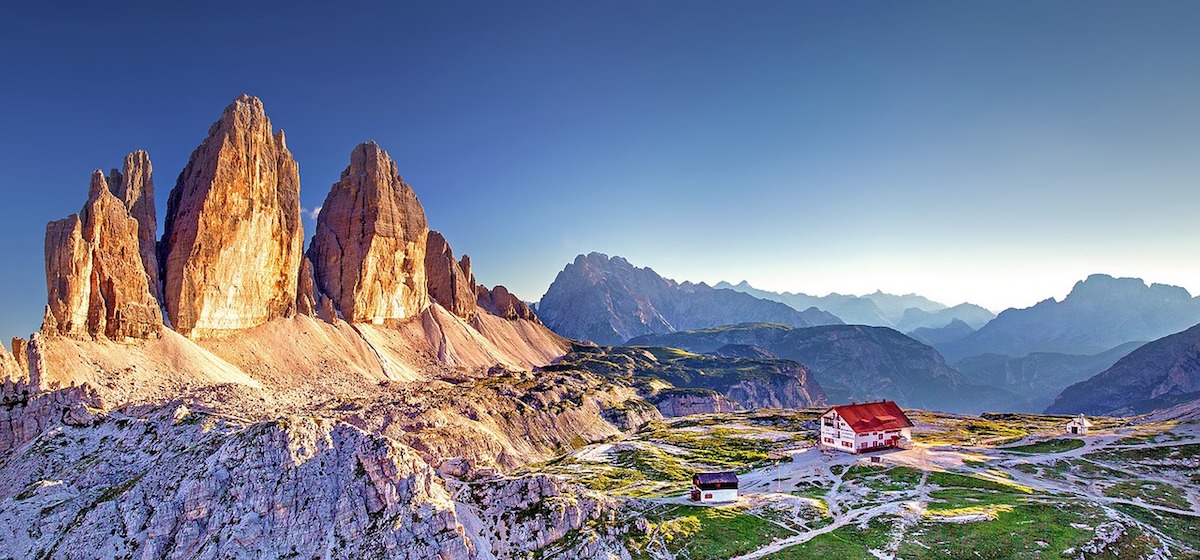
When you think of the Austrian Alps, you’ll most likely imagine Alpine mountains and sweeping landscapes. Aside from that, add to the picture its gorgeous cities, natural attractions, and fine Austrian cuisine.
If it’s your first time visiting the Austrian Alps, we rounded up the 10 best spots you shouldn’t miss! From towering mountains, fairytale-like towns in Austria to stunning architecture, a visit here is an experience of a lifetime.
Where Are These Austria Alps?
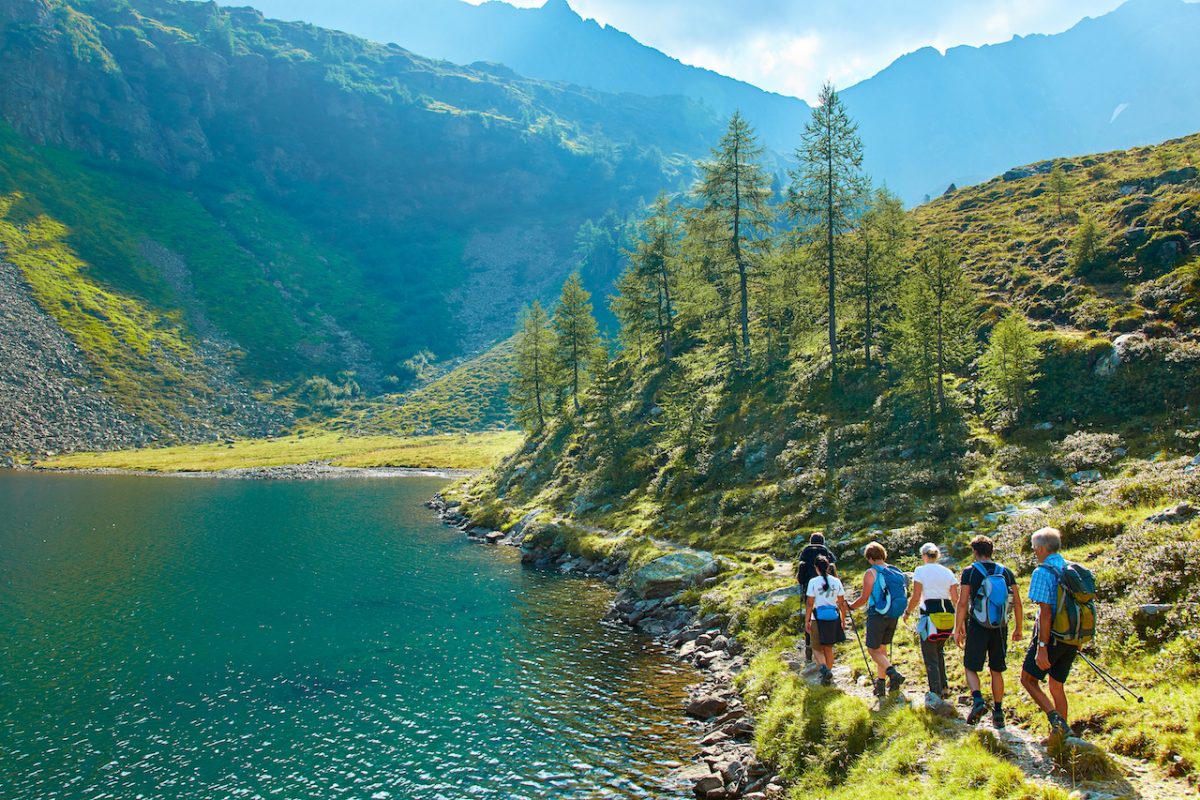
Photo by Adobe Stock
The Alps is a natural wonder that stretches roughly 700 miles across southern and central Europe. Beginning near Monaco, the Alps run across Switzerland, Italy, Germany, and Austria, among other countries in Europe. The stretch ends on the coastline of the Adriatic Sea in Albania. The eastern Alps cover most of Austria.
The Alps cover about 80,000 square miles and feed most of the major rivers in Europe. These snow-capped mountains can reach heights between 6,000-8,000 feet. The tallest alps include Grossglockner, Wildspitze, and Palla Bianca.
Swiss Alps vs. Austrian Alps
If you’re after the best alps mountains experience, you’ll be torn between the Swiss and the Austrian Alps. There’s always the intriguing question: Which is nicer, the Bavarian Alps or the Austrian Alps? You’ll be relieved to know that both destinations have amazing offers. It all depends on your preference.
For a true Alpine high, head to the Swiss Alps. Switzerland is home to some of the tallest mountains in the world. Matterhorn, for one, is one of the most famous peaks that professional mountaineers won’t skip.
Meanwhile, if you’re in for the scenery, the Austrian Alps are perfect for you. In fact, some of the iconic scenes in the movie “The Sound of Music” are filmed in Obersalzberg, on the Austrian border. Riding the cable car is one of the best ways to enjoy the stunning scenery.
How To Get Around Austria
Austria may be small, but it has six airports strategically located in the biggest cities and tourist regions. Utilizing a VPN for cheaper flights can help travelers find the best deals across the various airports in Austria, maximizing their options for convenient and budget-friendly travel.
Aside from taking the plane, you can visit Austria from nearby cities via trains and buses. With many convenient travel options, it’s easy to enjoy the best day trips from Vienna.
From Germany to Austria, you can either board the bus, train, or plane. Most travelers say train travel is the best as you get to zip around Austria and enjoy its scenic views.
Let’s jump to the 10 breathtaking Austrian Alps you shouldn’t miss!
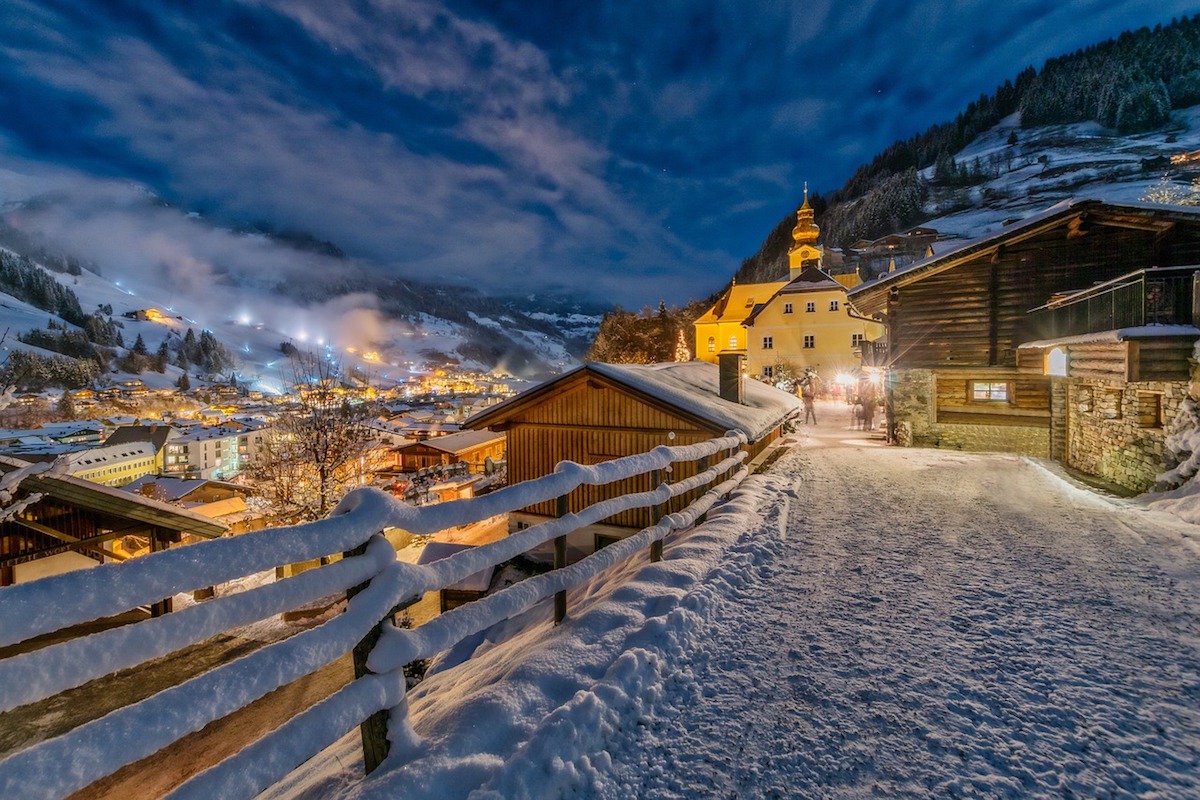
©Photo by josefgadermaier from Pixabay
Many agree that Salzburg is one of the most beautiful cities in central Europe — and for many reasons. Boasting 12 centuries of rich history, this old town is home to stunning views and Baroque architecture. Among the beautiful towns in Austria, Salzburg became popular when it provided the setting for “The Sound of Music” film. Aside from that, the gorgeous town in Eastern Alps made its way to the UNESCO World Heritage list. A day isn’t enough as there are plenty of amazing things to do in Salzburg .
Top Attractions In Salzburg
Fortress Hohensalzburg Castle: Visit this 11th-century castle and travel back in time. Sitting on top of a hill, Fortress Hohensalzburg offers breathtaking views of Salzburg. Today, the castle is among the favorite landmarks in Salzburg .
Salzburger Altstadt: Enjoy leisure walks on this Baroque Old Town’s cobbled squares and narrow lanes. Salzburger Altstadt is a perfect blend of classic architecture and modern shopping emporiums. Aside from that, it is home to Mozart’s birthplace, Dom Cathedral, Salzburg City Museum, and a number of churches. Don’t forget to put on sunblock and wear quality sunglasses while walking around.
The Original Sound of Music Tour: What’s a trip to Salzburg without visiting the spots where “The Sound of Music” was filmed. This tour not only shares the highlights of the film but also the architectural and historical landmarks in the city. There are English-speaking guides throughout the tour for your convenience.
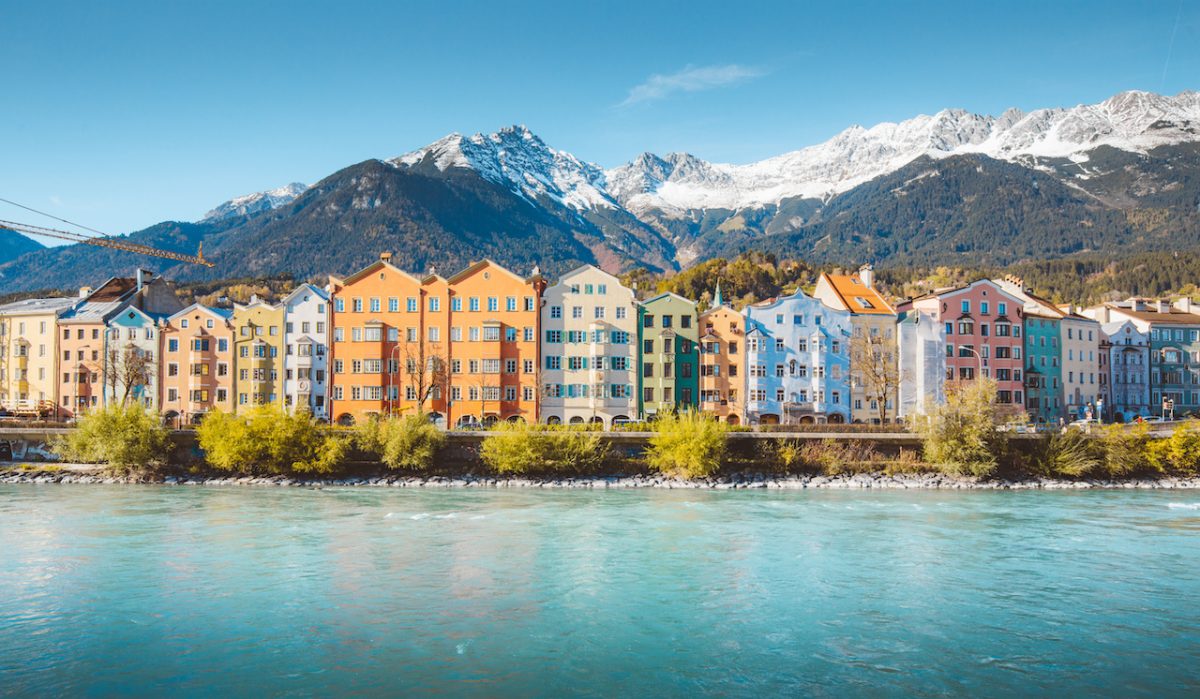
With its perfect position high in the Austrian Alps, Innsbruck has a lot to offer. From stunning views to winter sports, a visit here is worth anyone’s time. In fact, Innsbruck hosted the Winter Olympics in 1964 and 1976. Aside from that, the capital of Tyrol has majestic buildings worth marveling at.
Top Attractions In Innsbruck
Innsbrucker Nordkettenbahnen: Also called the North Chain or the Northern Range, the Nordkette is a mountain in the city. This range of mountains not only offers stunning landscapes but also a host of activities year-round. In the summer, this part of the Austrian Alps is a play area for active people. Meanwhile, it’s an excellent ski area during winter. Pack comfortable and sturdy snow boots to enjoy the experience.
Altstadt von Innsbruck: Altstadt (Old Town) is said to be the heart of Innsbruck. Touring around this town lets you enjoy medieval buildings, historic hotels, and modern restaurants and cafes. There are also interesting side alleys worth exploring. What tourists love about Altstadt is how it’s historical yet not intimidating and very safe. In winter, Christmas markets are alive and busy.
Hungerburg Funicular: Designed by star architect Zaha Hadid, the Hungerburg Funicular takes you from Innsbruck city center to the Hungerburg station. The hybrid funicular boasts state-of-the-art architecture that is loved by tourists of all ages.
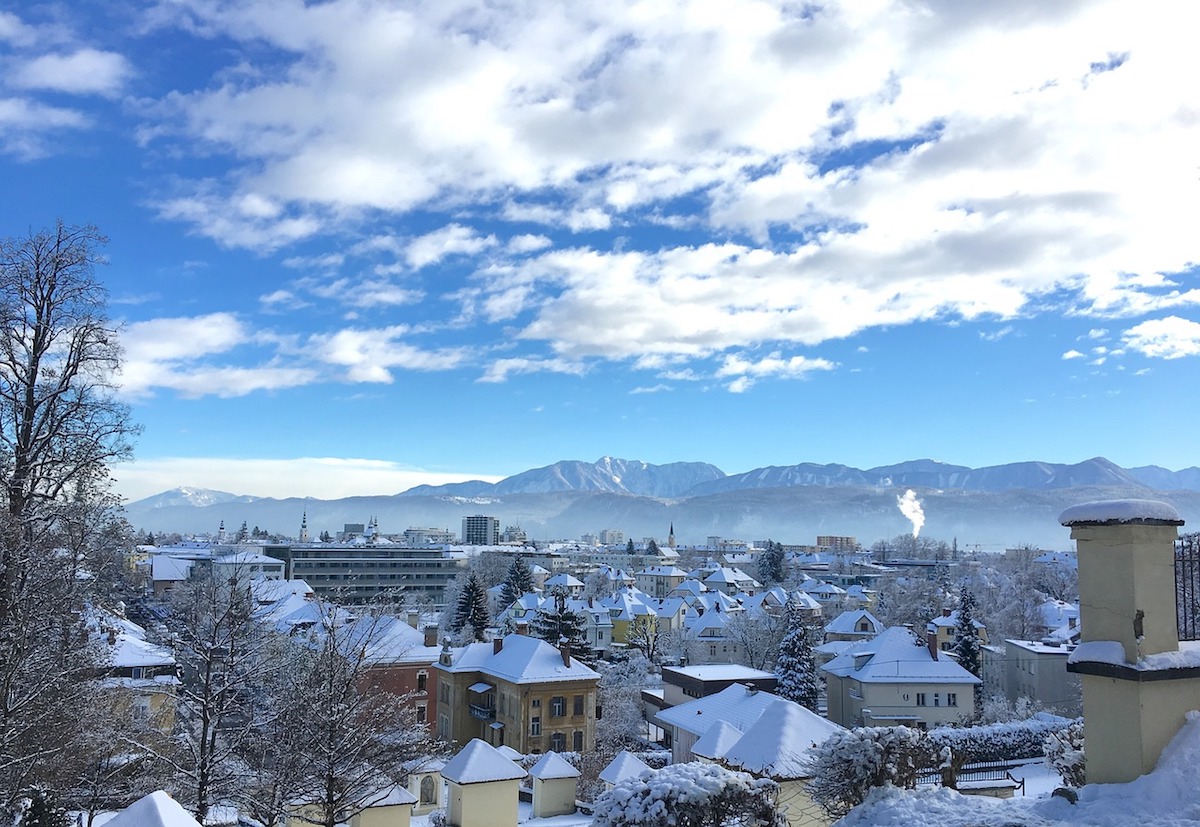
©Photo by saal from Pixabay
Among the Austrian Alps worth visiting is Klagenfurt. It’s ideally situated on the famous Lake Worthersee, one of the warmest and largest Alpine lakes in Europe. Due to its southerly location, Klagenfurt offers pleasant summer days and sunny winters.
There are plenty of exciting activities to enjoy in Klagenfurt. You just need to choose the best months to engage in your activities. Aside from that, it’s among the towns in Austria that have gorgeous mountain scenery.
Top Attractions In Klagenfurt
Lake Worthersee: This lake is a popular spot in Klagenfurt. Tourists flock here to take in the beauty of Lake Worthersee. If you’re visiting the Austrian Alps in winter, you can enjoy a host of winter sports on this lake. For a more relaxing option, fancy dinners by the lake are always a great idea.
Hochosterwitz Castle : Perched 600m above sea level, Hochosterwitz is a stunning piece of architecture. Aside from taking snaps, there’s a host of events you can take part in, including knight festivals, full moon walks, and others.
Rauschelesee: Klagenfurt is home to many beautiful lakes and Rauschelesee is one of them. It’s smaller than Lake Worthersee but offers amazing swimming and fishing opportunities. Only 15-20 minutes southwest of Klagenfurt, this lake lets you enjoy the scenic views and friendly walking paths.
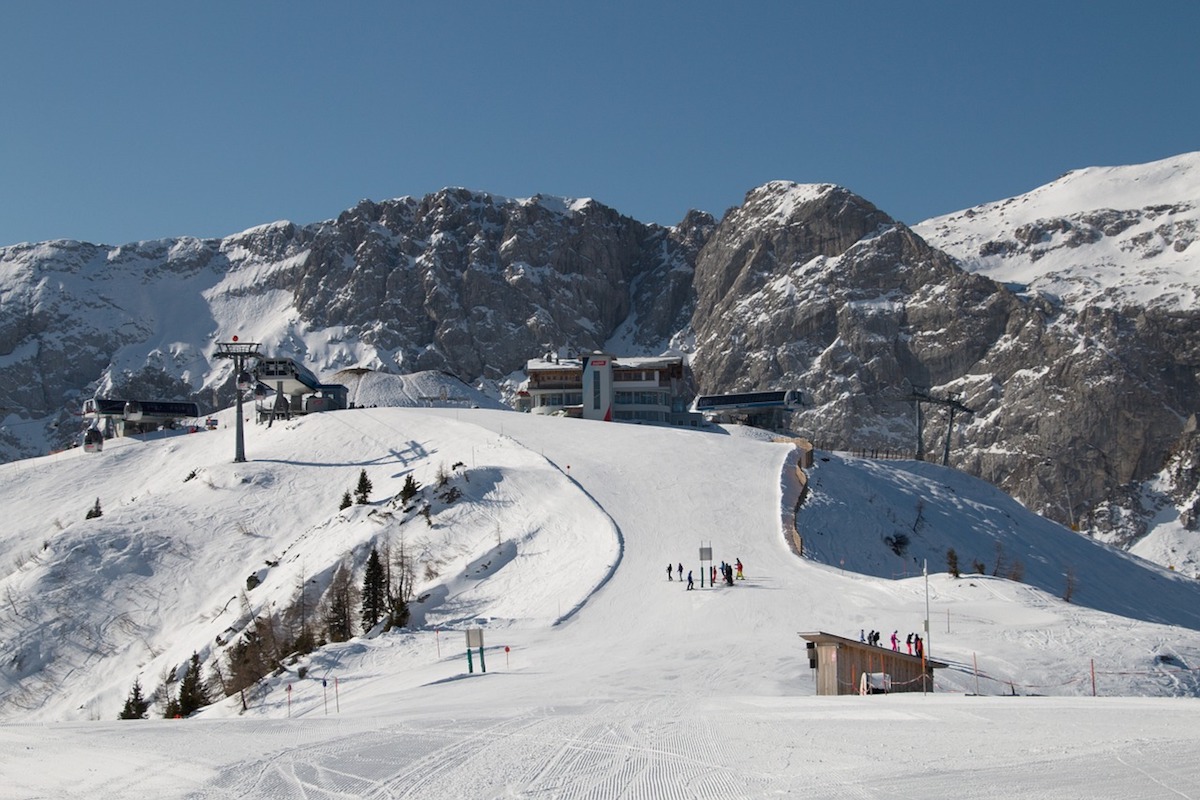
©Photo by Walkerssk from Pixabay
If you’re visiting the Austrian Alps to enjoy skiing, then you shouldn’t skip Nassfeld . Sitting near the Italian border, Nassfeld town is well-known as a ski resort. Boasting 110km of ski tracks, 1000km of hiking trails, and 950km of cycling trails, any adventurer is in for a treat when in this side of town.
Top Attractions In Nassfeld
Sommerrodelbahn: If you’re searching for an adrenaline high on the Austrian Alps, you need to try the Sommerrodelbahn. Famous among the adventurous souls, this 2-km mountain roller coaster is a fun way to view Nassfeld. It is perfectly safe and is loved even by kids. Enjoy the speed and stunning views, such as lakes, mountains, villages, and animals.
Garnitzenbach Stream: A trip to the Austrian Alps promises to take you closer to nature. When in Nassfeld, head on to Garnitzenbach Stream. Home to plenty of waterfalls and is very accessible via climbing facilities, this stream is an ideal family destination.
Aqua Trail: Another great family activity in this part of the Austrian Alps is the Aqua Trail. This 1.5km adventure walkway showcases visitors with different types of water in the mountains. There are helpful information boards to guide visitors along the way. The walkway is wide enough to accommodate strollers and wheelchairs. Aside from that, there are many rest areas and a big picnic area to relax and for children to play.
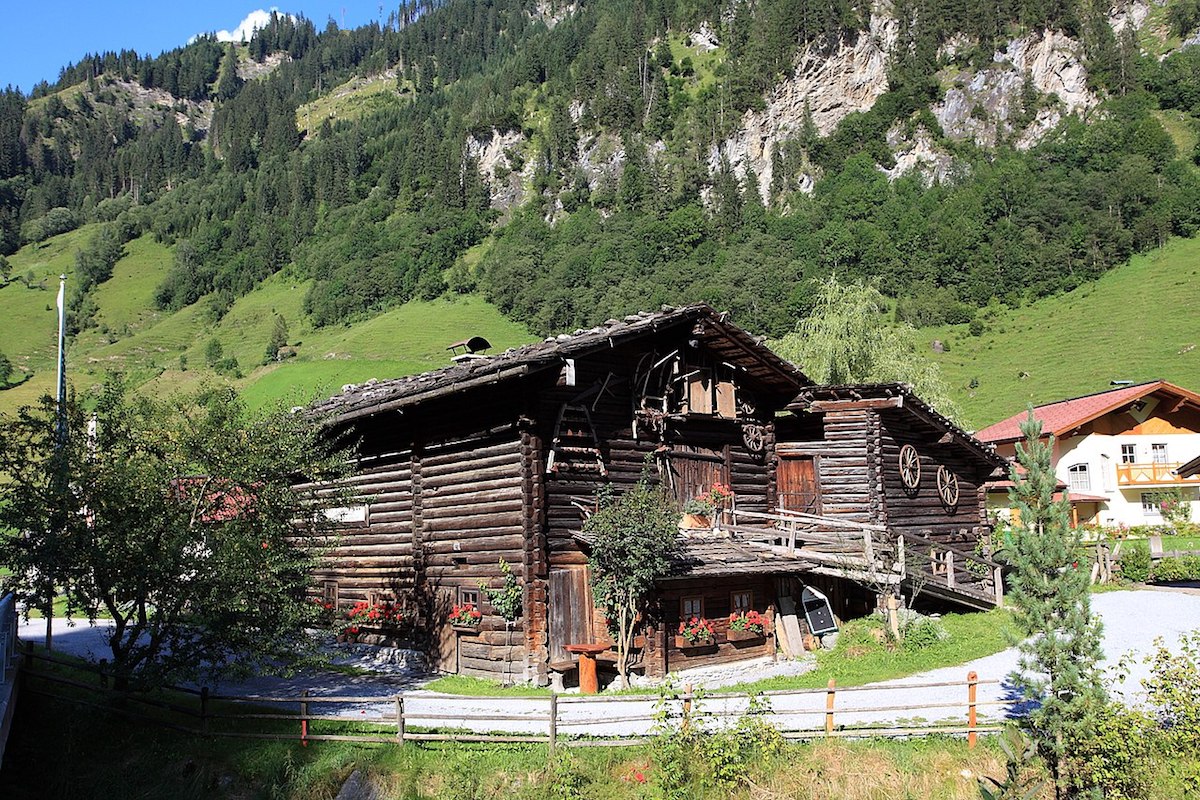
©Photo by Grossarltal from Wikimedia Commons
If you have hiking near Vienna in mind, Grossarl is a perfect getaway for hiking and other activities. Grossarl may not be as popular as other towns in Austria, but it has a host of exciting things to enjoy. From hiking, taking the beauty of the alps mountains to relaxing spas, this town won’t disappoint. For the ultimate hiking experience, pick comfortable hiking shoes and durable backpacks.
Top Attractions In Grossarl
Fulseck: For best hikes in Austria, Fulseck is an ideal mountain for travelers of all ages and skill levels. Fulseck has many themed walks and trails perfect for hiking and biking. To make transporting convenient, you can take advantage of the Fulseck Summit Lift. This lift easily brings you to your chosen destination on the mountain.
Skigebiet Grossarltal-Dorfgastein: This famous ski resort offers a range of great slopes for beginners and advanced skiers. Boasting plenty of space, Skigebiet Grossarltal-Dorfgastein is a paradise for winter activities. Just don your best winter boots and jacket, and you’re all set to enjoy this paradise. Take advantage of the pistes, modern lifts, and not to forget the stunning views.
Sk ischule Lackner : If you’re visiting the Austrian Alps to learn a thing or two about skiing, head on to Skischule Lackner. This popular ski school offers various ski courses, services, and winter sports and products.
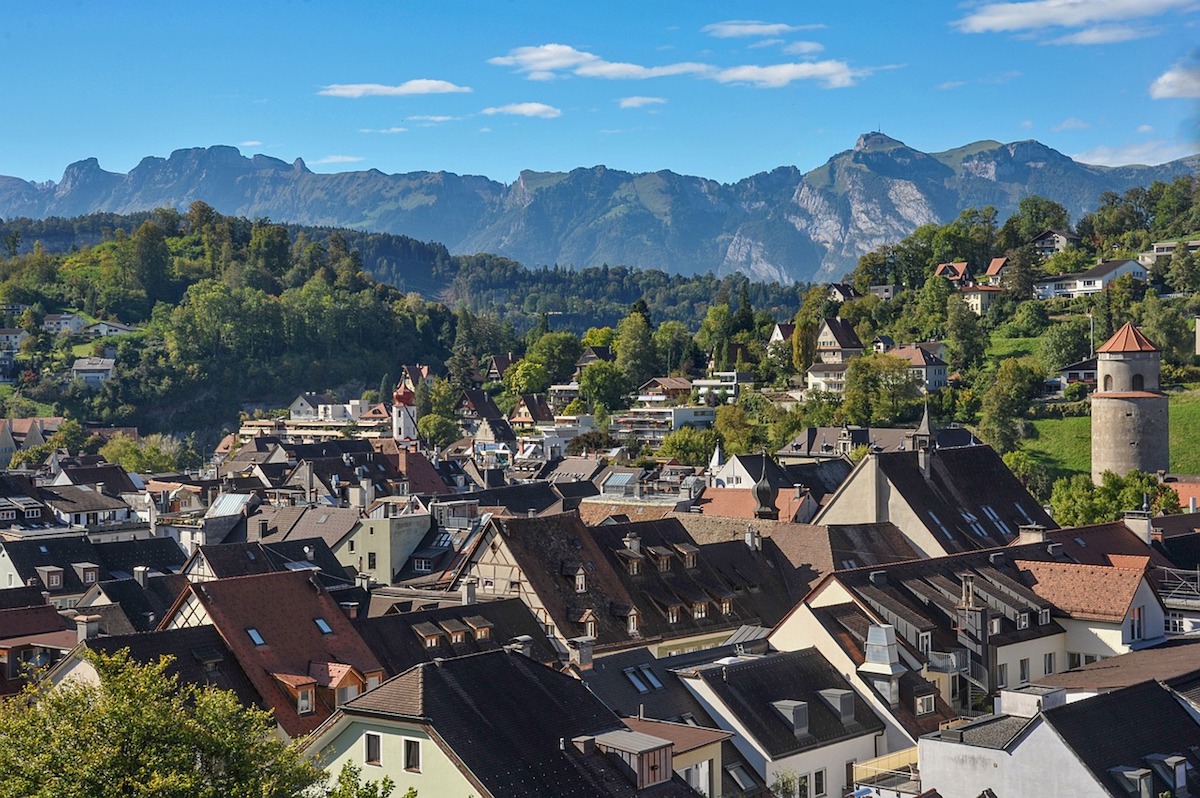
©Photo by Walter46 from Pixabay
Tucked in the westernmost corner of Austria is the large town of Feldkirch. Aside from the surrounding mountains of the Austrian Alps, Feldkirch is famous for its medieval charm. Take leisure walks around town and enjoy the breathtaking views of the alps mountains.
Top Attractions In Feldkirch
Feldkirch Wildpark: This animal park is perfect for those traveling with kids. Home to over 140 different animals, the park also houses an adventure park for guests to enjoy.
Drei Schwestern Mountain: This beautiful mountain range not only offers scenic views of alpine mountains but also outdoor activities. Enjoy hiking and climbing opportunities on well-developed paths and trails.
Marktgasse: The Marktgasse in Feldkirch is an excellent place to buy local produce. A trip here lets you discover various fruit and vegetable growers from Feldkirch. The market is also alive with different kinds of flowers. Add to that is a section for used toys and books for children.
Hallstatt
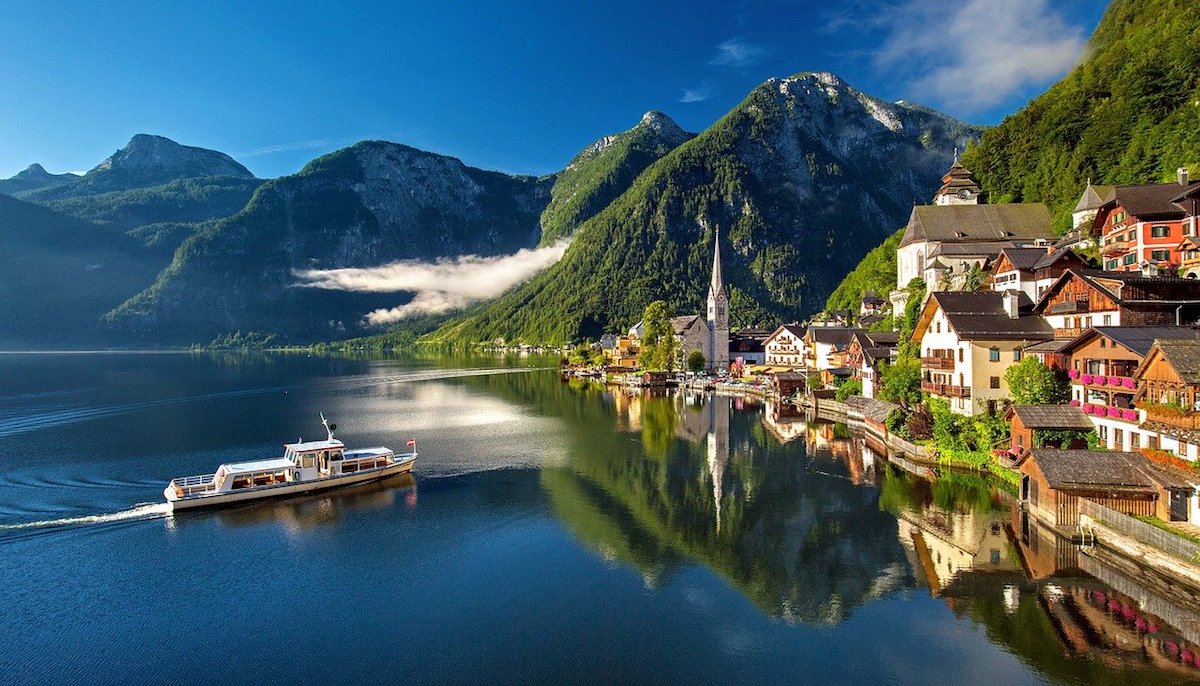
©Photo by Julius_Silver from Pixabay
Another breathtaking Austrian Alps is Hallstatt . This gorgeous village sits on the western shore of Lake Hallstatt. Visiting here lets you marvel at 16th-century Alpine houses as well as alleyways dotted with cafes and shops. Overlooking Lake Hallstatt, Hallstatt offers picturesque views and charm. No wonder many refer to it as one of the most beautiful lakeside towns in the world.
Top Attractions In Hallstatt
Salt mine: Visiting this side of the Austrian Alps, make sure to explore Salzwelten. This is one of the world’s oldest salt mines and is UNESCO-recognized. Dating back to 4000 BC, this mountain has gained its wealth of salt mines through the years. Salzwelten has guided tours to educate visitors more about its rich history.
Lake Hallstatt: What’s a visit to Hallstatt without touring its stunning lake? Every angle of the lake is beautiful, but they say some of the best views are from the water. Indulge in Lake Halstatt’s boat rentals that include rowboats, pedal boats, and electric options. Cruise around the lake and take in the beauty of Hallstatt and the alpine mountains at a relaxing pace.
Dachstein Caves: Another famous attraction on this side of the Austrian Alps is the Dachstein Caves. This network of caverns is among the most impressive in the Eastern Alps. Visiting these caves lets you enter an underground world of gigantic ice sculptures and icicles. Among the highlights include the Giant Ice Cave (Rieseneishöhle) that features stunning caverns. There’s also the magnificent Mammoth Cave (Mammuthöhle) where you can marvel at the huge pipe-shaped galleries and ice structures.
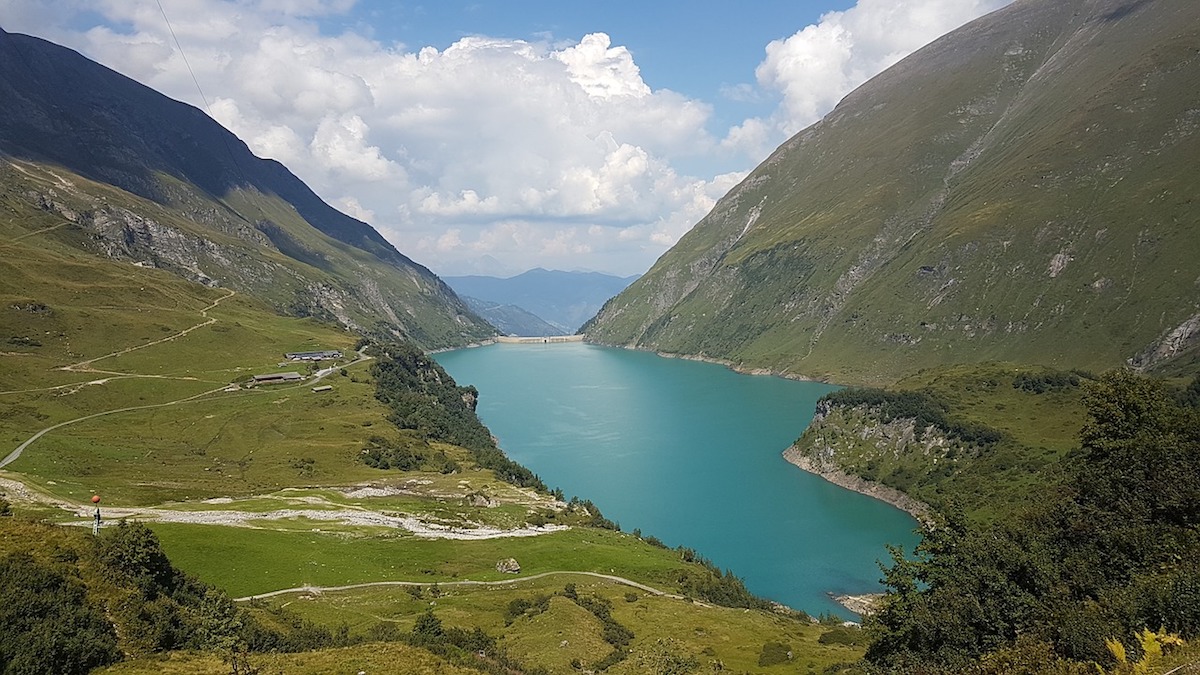
©Photo by MarioHaar from Pixabay
Nestled southwest of Salzburg in the Austrian Alps is the beautiful town of Kaprun. Not only do you get to enjoy the best alps mountains views here but also a host of outdoor activities. This holiday destination is perfect for the entire family. In Kaprun, you can either be very active or relaxed depending on your preference.
Top Attractions In Kaprun
Kitzsteinhorn: The Kitzsteinhorn is a famous skiing mountain in the Eastern Alps. From modern mountain railways to world-class infrastructure, Kitzsteinhorn gives holidaymakers unparalleled Alpine experience year-round. Add to that is the top snow quality from October to early summer.
Oldtimer Museum: If you’ve had too much hiking in Austria, take a break in the Oldtimer Museum. This small yet funky museum showcases over 200 vintage vehicles and motorbikes. With various vehicles from the 1950s to 1970s, this is the right spot for car and bike enthusiasts. Feast your eyes on vintage motorbikes, rollers, and tractors, among others.
Maiskogel Family Mountain: Another excellent family destination is Maiskogel Family Mountain. This ski area is also perfect if you want to experience some of the best hikes in Austria. The resort is ideal for groups or families who want to engage in winter sports. The gentle terrain and comfortable traditional huts also add to the fun experience. For the best winter sports experience, bundle up well! Don’t forget to bring those heated gloves and winter boots for maximum comfort.
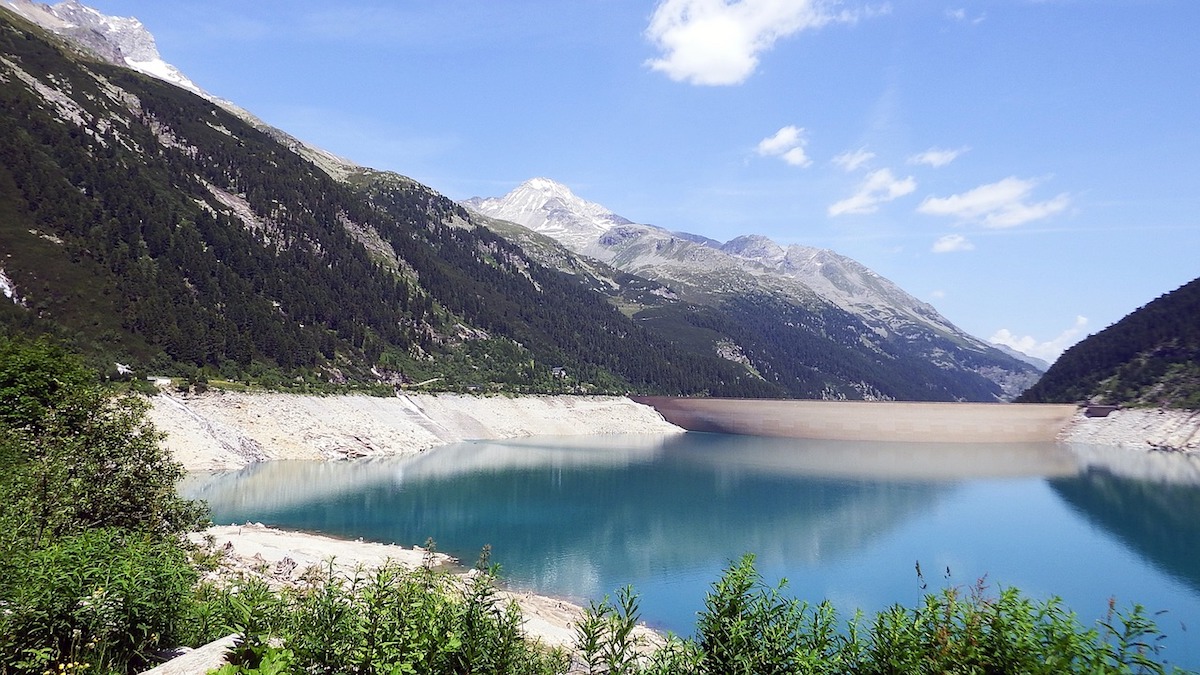
©Photo by wdietz from Pixabay
Another breathtaking Austrian Alps destination is Mayrhofen . This town is famous for winter sports for both intermediate and expert skiers, but don’t fret as there are a lot of gentle runs for the novice and families.
Top Attractions In Mayrhofen
The Penkenbahn: Touted as a modern cable car system, the Penkenbahn is an efficient way to get you high up the mountains. The ride up lets you enjoy the scenic views of the alpine mountains. Once on top, you get to enjoy a host of activities from hiking, biking to paragliding. It is also worth noting that the paths are wheelchair-friendly and there are bikes for rent.
Arena Coaster: The adventurous souls shouldn’t pass the chance to ride the Arena Coaster in Zell am Ziller. Unlike your favorite roller coaster, this one comes with refreshing mountain views. The 1,450m roller coaster is a favorite summer and winter attraction among tourists.
Schlegeis Reservoir: The drive up the Schlegeis reservoir is already vacation in itself. With stunning Alpine scenery, cyclists, drivers, and nature lovers can’t say no to this scenic drive. The 13km route includes four natural rock tunnels until it winds up at Schlegeis Reservoir. Standing at an elevation of 1,800 meters, you get to enjoy uninterrupted panoramic views of the alpine mountains.
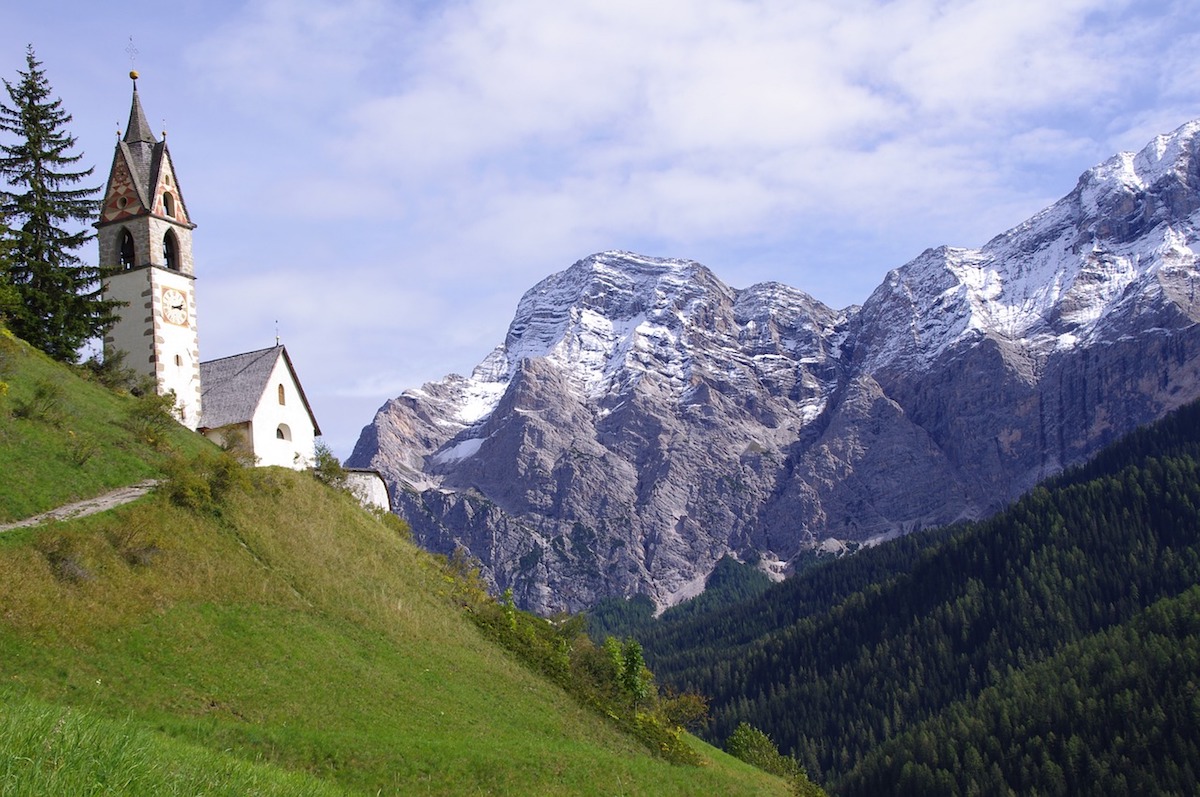
©Photo by famhellstern from Pixabay
For the best hikes in Austria, Lienz is an excellent destination. The Lienz Dolomites offers a variety of ranges to choose from depending on your skill level. Aside from the exercise and adrenaline rush, you get to enjoy the sweeping mountain views on your way up.
Top Attractions In Lienz
Hohe Tauern National Park: Hohe Tauern is the largest national park in Austria. Boasting 1800 sq km, the park offers a variety of valleys, forests, and villages. For such a vast park, you can either explore it on your own or via guided tours.
Lienzer Bergbahnen/Osttirodler Alpine Coaster: For the thrill-seekers, the Osttirodler Alpine Coaster is ready to oblige. The ride is perfectly safe for all ages. Aside from the ride, there are many trails to enjoy hiking in Austria.
Hauptplatz Lienz: Hauptplatz is an old town in Lienz. It may be small but has a lot to offer. Enjoy relaxing walks or dine in restaurants and cafes that dot the area. The colorful square is an excellent place to unwind and explore.
Interesting Austrian Alps FAQs
What to bring for hiking in austrian alps.
Hiking in the Austrian Alps needs some preparation, especially with the clothing and gear. While the Austrian Alps are relatively safer to hike, knowing the must-haves in your bag can make it more enjoyable. The following checklist should help you stay safe and comfortable when hiking the Alpine mountains.
The Essentials
Hiking boots: Your shoes can make or break your hiking in Austria. After all, you’ll rely mostly on your feet to get you up in the mountains. If not chosen with care, you could end up with a painful experience. When hiking the Austrian Alps, get hiking boots. Regardless of the brand, hiking boots are designed for the mountains. These should protect your feet and ankles from sprain and other injuries. Quality hiking boots will also keep your feet dry and warm. To make the experience more comfortable, grab a pair of waterproof hiking boots.
Socks: While shoes play an important role in hiking so does the right pair of socks. Keep in mind that a great shoe can easily be ruined by a bad pair of socks. When hiking the Austrian Alps, you need snug-fit socks that will keep your feet comfortable and protected. There are socks designed for hiking. These pairs protect your feet from blisters and have reinforcements in the right spots.
Backpack: Picking the right backpack is crucial when conquering the Austrian Alps as it affects your comfort throughout the hike. Aside from that, this is where you will pack all your supplies. For day hikes, a 25-35 liter backpack will work fine. This is enough to pack food, water, an extra shirt, a raincoat, and a small camera. For multi-day hiking in the Alps, a 60-65 liter backpack is recommended to pack more stuff. If you want to keep a separate bag for cash and valuables, a money belt is an excellent idea.
Clothes: Depending on how long you intend to hike, you’ll need a selection of clothes when hiking in Austria. Layered clothing is key to stay comfortable throughout your trip to the Austrian Alps. From the base layer, mid-layer to the waterproof layer, the right set of clothing will keep you warm and dry. Aside from that, you also need a good pair of pants. Invest in pants that can turn into shorts to save you space in your bag. (Tip: Don’t use cotton as it gets wet.)
Other Essentials
- Light or Matches
- Fleece jacket or pullover
- Mobile phone or emergency communication systems
- GPS system or compass
- Food and water
- Plastic bags
- Trekking poles
- Head torch or flashlight
- First-aid kit
- Extra batteries
Summer Hiking In Austrian Alps: What To Pack?
Hiking the Austrian Alps in the summer will still require the same essentials as when you climb during winter. However, the clothing selection will be different for obvious reasons. Wear quick-dry clothes when hiking the Austrian Alps in the summer — shirt, and shorts. Don’t neglect hiking shoes and socks as mentioned earlier. And while it’s summer, it’s still smart to pack a light jacket just in case it gets windy in the afternoon or night.
What Types Of Rocks Are The Austrian Alps?
The Austrian Alps or the Central Eastern Alps are mainly composed of gneiss and slate rocks. However, the Hohe Tauern and Engadine windows are mainly composed of Jurassic rocks and limestones as well as granite.
Where Are Austrian Alps Stubbier Gletscher?
Only 45 minutes away from Innsbruck sits the Stubai Glacier. This winter sports paradise offers great ski slopes for skiers of different skill levels. There’s also a snow park to busy your time with. The atmosphere is fun, energetic yet relaxing. You can unwind and rest in the bars and restaurants.
Where To Stay In The Austrian Alps?
You’ll never run out of places to stay in the Austrian Alps. From luxury accommodation to budget inns, there’s always one for every preference.
Avenida Panorama Suites Kaprun: With stunning panoramic views of the Alpine mountains, Avenida Panorama Suites offers a luxurious stay. Aside from the views, there’s an indoor spa with saunas. This hotel is famous for skiing and cycling.
Hotel Der Waldhof: Sitting in the beautiful Zell am See is The Waldhof. An ideal starting point for hikes, ski tours, and trips, this 4-star hotel has a lot to offer. From a relaxed atmosphere, amazing views to comfortable rooms, The Waldhof is an excellent choice.
Hotel Gamshof: A few minutes away from the town center, the Hotel Gamshof is a great budget hotel in the Austrian Alps. Staying here gets you close to all the festivals, brass bands, and all the excitement of the town. The rooms are clean, comfortable, and complete with amenities.
Alps, Alps, And Away!
If you’re a fan of dramatic mountain scenes, snow-capped mountains, and gorgeous towns and cities, the Austrian Alps won’t disappoint. Aside from the stunning scenery, the rich culture and excellent Austrian cuisine are worth exploring. However, what makes a trip to the Austrian Alps special is how you can be either very active or relaxed. Depending on your mood, you can hike or ski, or simply relax in your cabin snuggled among the wooded mountains.
Whichever activities you’d like to engage in, a trip to the Austrian Alps is always a treat. Just make sure to prepare well ahead to make the most out of your alpine mountain visit! And while you’re there, don’t forget to try Austria’s national drink: Schnapps!

- Privacy Overview
- Strictly Necessary Cookies
This website uses cookies so that we can provide you with the best user experience possible. Cookie information is stored in your browser and performs functions such as recognising you when you return to our website and helping our team to understand which sections of the website you find most interesting and useful.
Strictly Necessary Cookie should be enabled at all times so that we can save your preferences for cookie settings.
If you disable this cookie, we will not be able to save your preferences. This means that every time you visit this website you will need to enable or disable cookies again.
Matador Original Series

11 awesome itineraries for your trip through the Alps
E urope’s highest mountain range — spanning a whopping 750 miles — naturally holds every kind of adventure one could possibly think of. The Alpine valleys of Germany, Austria, and Switzerland still hide idyllic villages where cheesemaking and woodworking reign supreme. Bustling cities like Zurich, Salzburg, and Munich mean world-class experiences at the foot of Mother Nature’s best work of European art.
But keep in mind that a trip to the Alps is all about who you are. These mountains, villages, and cities can hold whatever you want them to hold — which itinerary will you choose?

— 1 — Town and Country

T ouch down in any buzzing Alpine city and you’ll be surrounded by snowcapped Alps, teeny villages, and bucolic landscapes spreading out into the horizon. This is two very different worlds in one magnificent trip.
Start off in Zurich’s car-free old town , walking the Limmatpromenade, and staying up till morning taking in the city’s world-class nightlife. Relish the music, because soon you’ll be in quiet Bregenzerwald, Austria. Twelve villages make up this portal back into a simpler time, and centuries-old farmhouses and cheesemakers set the pace. Going on foot is the best way to soak in the long-lost architecture and serenity of this almost-off-the-map spot.
Alternatively, make a beeline straight for Germany, where you can contemplate the silence filling the depths of Schwarzwald , or the Black Forest. And yet you’re still not far from 3-star Michelin restaurants and water-filled adventures — Lake Titisee, the largest lake in this untamed wilderness, is right here, too (be sure to dip your toes).
— 2 — 6 Peaks in 5 Days
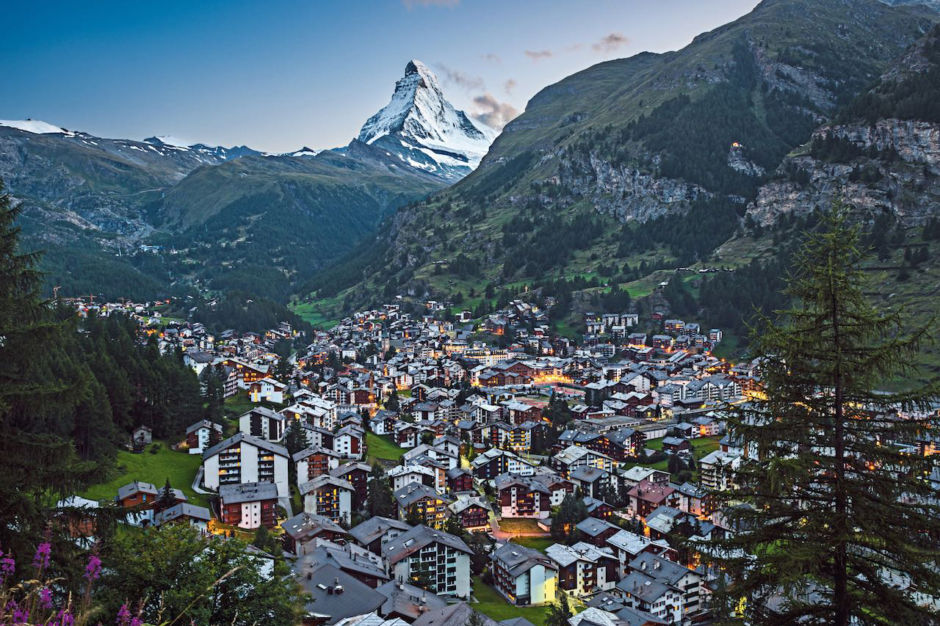
T he Alps aren’t meant to only be enjoyed from the bottom. But if this is your itinerary, odds are you already know that.
First up — Zermatt. The city lies at the foot of the most iconic Alpine mountain, the Matterhorn, and it’s entirely car-free save for the cable car you can take to the highest mountain station. Take a breather at Zumstein’s farm in Gstaad to fuel up for your next feat: the Wildspitze glacier in Ötztal, Austria (a 12,369-foot peak piercing the sky). And as you depart for the next leg of your journey, look around you. You won’t want to miss the Jungfrau Region and the famous Eiger mountain.
Now, it’s time to head to Garmisch-Partenkirchen to summit the Zugspitze , Germany’s highest mountain. Or stay in Austria to visit National Park Hohe Tauern — there are over 200 peaks around 10,000 feet, but the Großglockner stands guard over them all at 12,461.
Finishing up in Berchtesgaden, Germany, take it easy on a ride up the Predigtstuhlbahn — the world’s oldest cable car — to be lifted a mile in just eight minutes.
— 3 — City Break
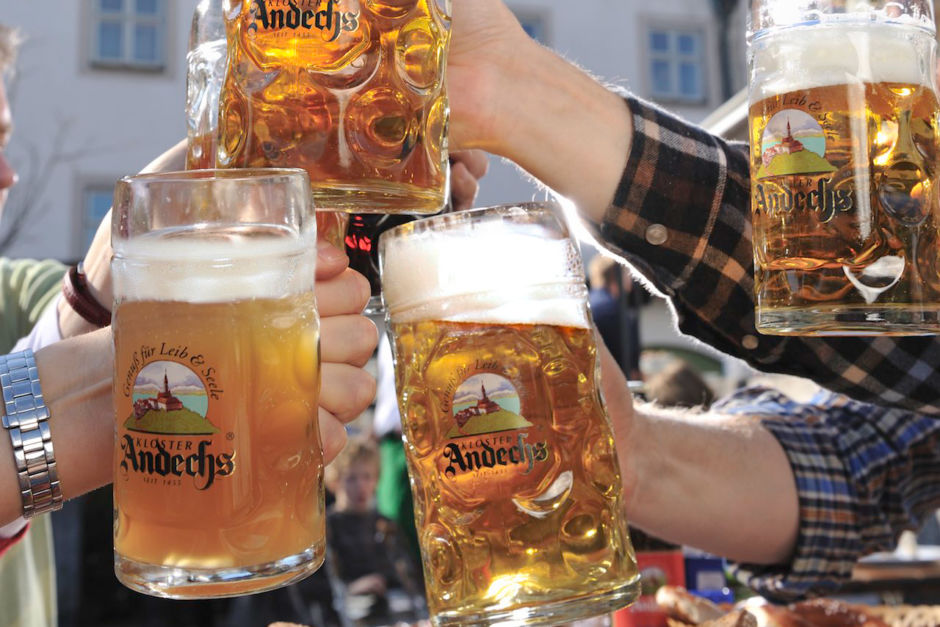
M ove over Paris, London, and Rome — some of Europe’s best cities are hiding in the Alps.
Start off in Munich however you want — beer gardens, restaurants tucked into cobbled alleyways, open-air markets — but end with a climb up 299 stairs to the top of the Church of St. Peter, taking in the views of the Alps in the not-so-distance.
Then it’s off to either Innsbruck or Salzburg. The former, Innsbruck, is where you can go to recharge in the mountain air. Take in the views from the mountains on the cable car and be sure to celebrate the day with nothing other than Tirolean smoked bacon . The latter, Salzburg, is a UNESCO World Heritage Site masquerading as a city, where every corner is steeped in history (and nowhere is that more obvious than wandering the fortress overlooking the Baroque town). Grab a Fürst Mozartkugeln — a ball of pistachio cream encased in nougat and a chocolate shell — before heading to the Walk of Modern Art , escorting you right back to present day.
— 4 — The Alpine Tasting Menu
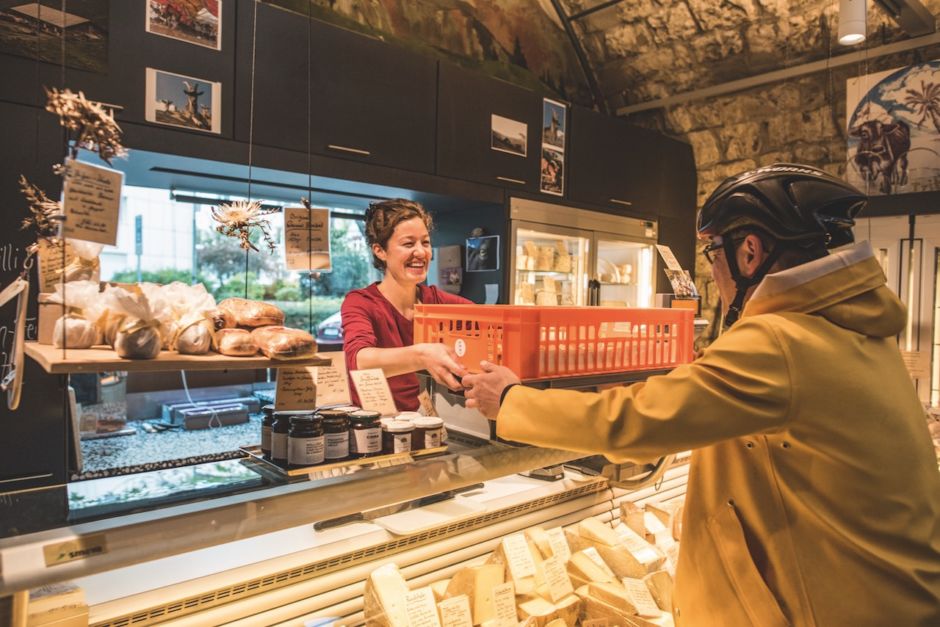
P repare to taste your way through the Alps. This five-day culinary adventure will have you jetting between white-napkin, five-star dinners and spreads lining the farm table.
If you’ve packed your cocktail attire, splurge for Zurich’s Parkhuus Restaurant , and note their 14 Gault Millau points. Or break out the camera in Appenzell at the Berggasthaus Äscher restaurant — the restaurant’s façade clings to the vertical cliffside.
Two and a half hours later, you’re in the valley resort town of Garmisch-Partenkirchen for dinner under a glass dome at the top of the Zugspitze, nearly 10,000 feet in the air. Of course, you can hike and ski while up there, too.
In Salzburgerland, Restaurant Obauer will fill you with the sights, sounds, and smells percolating at the foot of Hochkönig Mountain. And finally, in Regensburg, go all the way back to the 8th century, cruising to Weltenburg Abbey — one of the oldest monasteries in the world — and sacrificing a moment to indulge at their world-renowned brewery.
— 5 — Alpine Capitals
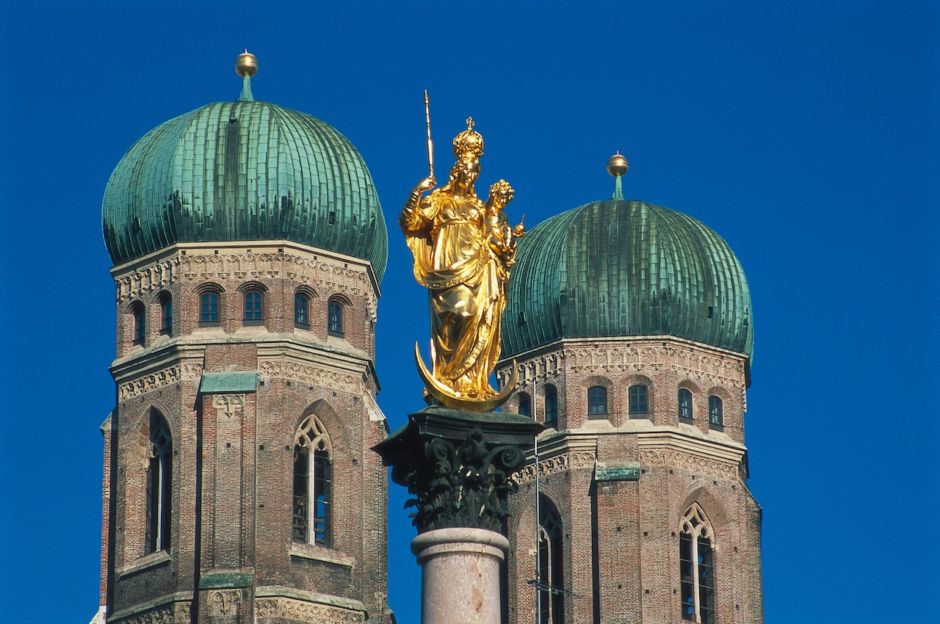
O ne epic weekend is all it takes to bounce through the Alps’ capital cities. Munich, Innsbruck, and Zurich are ripe with some of Europe’s best cultural offerings, each a gateway to both world-class urban experiences and those Alpine breezes.
Beginning in Munich, a capital city that still has a firm grip on its charm and traditions, choose between the Bavarian State Opera, the National Theater, or any of the city’s world-class museums, and top it off by hiking to the Monastery of Andechs for a sampling of world-famous Bavarian beer — crafted by Benedictine monks.
In Innsbruck, “the Capital of the Alps,” grab some suds at the Hofgarten , position your chair to take in the three mountain ranges towering above, and score a quick peek at the lights surrounding nearby Ambras Castle. Then in Zurich, hike up the Uetliberg mountain, working up an appetite for the city’s signature dish, Zürcher Geschnetzeltes — well-deserved after the climb.
— 6 — Alpine Design

R ich tones, minimalist style, heavy on the pine and the wool — what you see in the magazines isn’t fabricated. You’ll step into the pages of this itinerary by watching local craftspeople at work, wandering through art galleries, and resting your head underneath contemporary Alpine architecture.
Book a room at Geisel’s Beyond Munich , and spend a moment looking through the huge windows onto the Marienplatz. When morning arrives, jet off to Tegernsee — a small, ancient city with as many festivals as farms — for a hot air balloon ride over one of the most beautiful places on our planet.
Innsbruck is worth simply milling about, taking in the architecture that dates back to the Middle Ages in their unparalleled Old Town. In Bregenzerwald — famous for its timber industry — stop by Werkraum , an innovative museum and workspace dedicated to all things wood.
Then rest your bones in Lucerne’s Art Deco Hotel Montana , where the views are inside and out — your room may provide a view of the lake right beneath the peaks. The last stop is Geneva, where a bike rental takes you through lush wine country, ending with samples from a tasty 1,000-year-old tradition .
— 7 — The #nofilter Tour of the Alps
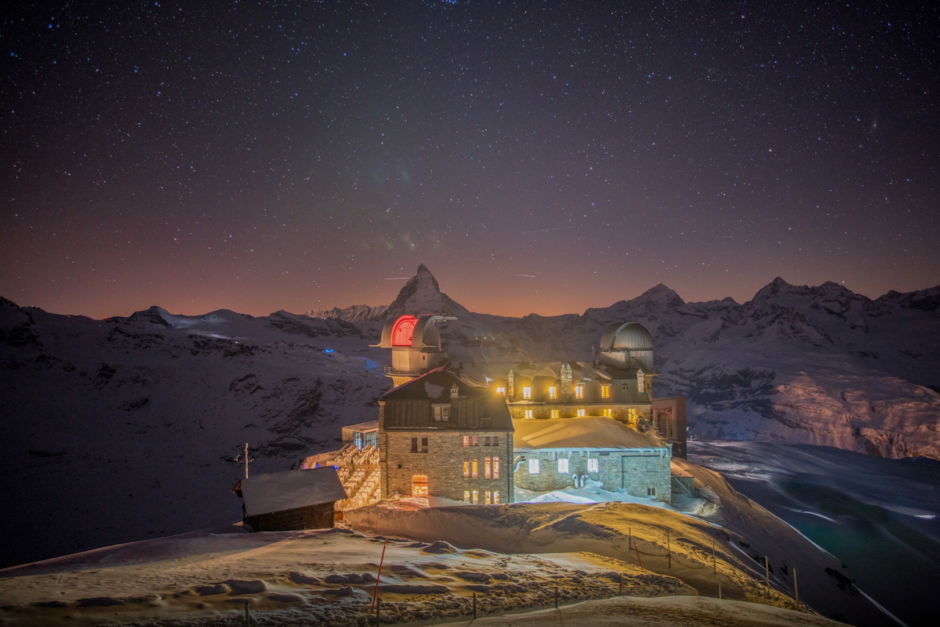
T he most stunning spots in the Alps aren’t all well known. To get that #instaperfect shot, you’ll need to head off the beaten path.
For starters, photos look better at 10,000 feet. Zermatt’s 3100 Kulmhotel Gornergrat , a hotel-meets-library-meets-restaurant, complete with cozy fireplaces and views of the Matterhorn, is at elevation. Then trade those urban views for ones of Swiss National Park , the oldest national park in the Alps, with a stop in St. Moritz.
Mix up the landscapes with a move to Innsbruck’s land of diamonds: Swarovski’s Daniels Crystal Worlds will grab you from its exterior, and that’s before the gem hunting. In Garmisch-Partenkirchen, beeline back to Mother Nature and to the AlpspiX viewing platform — this might be your most popular Instagram yet.
Then you’ll wind up in Hallstatt, a tiny 750-person hamlet straight out of any Alpine postcard. Head to the terrace of restaurant Bräu Gasthof for a classic photo of the village, its lake, and lone cathedral spire reigning above. End your trip with a stop in bustling Munich, test driving your dream car at BMW World — you can take photos at 100 mph, right?
— 8 — The 0 to 100 Alpine Adventure

W hether you’re a white-knuckled thrill-seeker or a calm and mellow explorer, the Alps have you covered. Zip down the Autobahn in a shiny Porsche, go whitewater rafting in the Tirolean Alps, or relax into a flight of rare gins at a rustic distillery. In the mountains, you set the pace.
A stop in Stuttgart will put you behind the wheel of a Porsche , racing down the limitless Autobahn. Go from high-speed on the ground to high-speed in the air three hours later in Schwarzwald, racing through the Black Forest with Hirschgrund Zipline .
On the way from Gstaad to Lucerne, visit the Interlaken-Jungfrau Region (the “Outdoor Capital of Switzerland”) and hike to the Kleine Scheidegg for fantastic views of the famous mountain trio Eiger, Mönch, and Jungfrau. Mix it up back in Lucerne, hopping on the world’s steepest cog railway — a 48-percent gradient. Keep the adrenaline going in Ötztal’s Area 47 , a theme park where you can cliff dive, wakeboard, zipline, and more.
Innsbruck is your final destination, where you’ll shred through the imposing Karwendel range on a mountain bike — or just take in the Alpine views from… your bathroom .
— 9 — Palm to Glacier
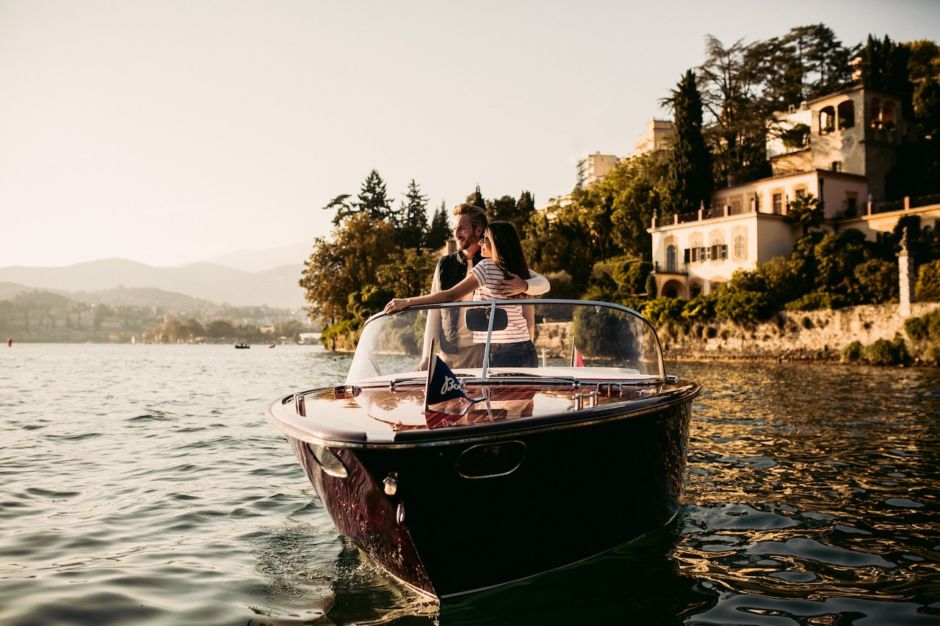
F rom lakeside in Lugano to the sky-high mountain air above Austria, Switzerland, and Germany, be sure to pack both your shades and your scarf.
Lugano, a large summer holiday town, is the best of both worlds — a combination of Mediterranean urban flair and Alpine retreat. Sit lakeside at Restaurant Seven Lugano , and then inspire your nose on the two-mile Olive Tree Trail at Monte Arbostora, San Grato’s botanical park.
Bask in St. Moritz’ mineral springs after a long day hiking glacier territory. In Ötztal, raft the rivers, rock climb, or stand on the Wildspitze glacier to be on top of Tirol, near the Italian border. Climb up to the top of Zugspitze in Garmisch-Partenkirchen, or finish on a high note in the Alps’ largest nature reserve, National Park Hohe Tauern .
Here, eagles soar overhead, ibex deftly climb the peaks, and the views of Großglockner , Austria’s tallest mountain, don’t get any better.
— 10 — The Purist’s Alpine Bucketlist

I f you gotta do it all, don’t settle. Do it all.
Start in Zermatt, staring up at the Matterhorn. Wander the city’s romantic alleyways, and trek the Five Lakes Hike to Gorner Gorge’s towering cliffs. Spend a moment in luxury in Lugano, and take in those Alpine views without leaving the spa . Hide between Lucerne’s medieval walls and towers, hopping in a boat to Flüelen and taking a scenic train to Bellinzona.
In Garmisch-Partenkirchen, hang with the birds on Germany’s tallest mountain, the Zugspitze, overlooking one of the oldest mountain chains in the world. Then travel back to medieval times in Innsbruck, where Emperors reigned supreme at the Imperial Court.
Follow Mozart’s steps to Salzburg, counting the spires spreading out above the river. Find respite in Hallstatt, wandering between wood-gabled houses that convince you fairytales are real. Toast to your trip at one of Munich’s famous beer gardens , and finish off by exploring 1,000 years of chaos, mayhem, and history at the Medieval Crime Museum in Rothenburg.
— 11 — The Nonconformist’s Alpine Bucket List

T here’s no pop music, pumpkin spice lattes, or long lines here. If you’re more the B-side-of-the-record kind of traveler, look no further.
Heidelberg’s practically preserved in amber — its castle, Old Bridge, and medieval old town have provided artists with inspiration for centuries. Walk along the Philosophenweg , and you’ll feel it. Balance it out with a trip to Stuttgart’s Cube Restaurant , trading city walls for urban modernism.
The rest is up to you: Meditate in Baden’s verdant woods. Tour one of the best gin distilleries in the world. Hide away in Fribourg’s old town Colombi Hotel . Hike the Gourmet Trail , taking in the view between bites. Get bluesy at the Montreux Jazz Festival. Go full-on couture at Gstaad’s famous “shopping mile.” Get your hands dirty at one of the artisan-run workshops in Bregenzerwald’s 12 villages and reward yourself with Käseknöpfle (an Alpine mac n’ cheese). Head to medieval Kufstein to wash it down with the regional drink, pear Schnaps . Top it all off in Zell am See with a stroll along a glacial lake , a repurposed castle, and plenty of people-watching.
Choose one, or choose them all. There’s no wrong way to do the Alps.
Plan Your Austrian Alps Holiday: Best of Austrian Alps
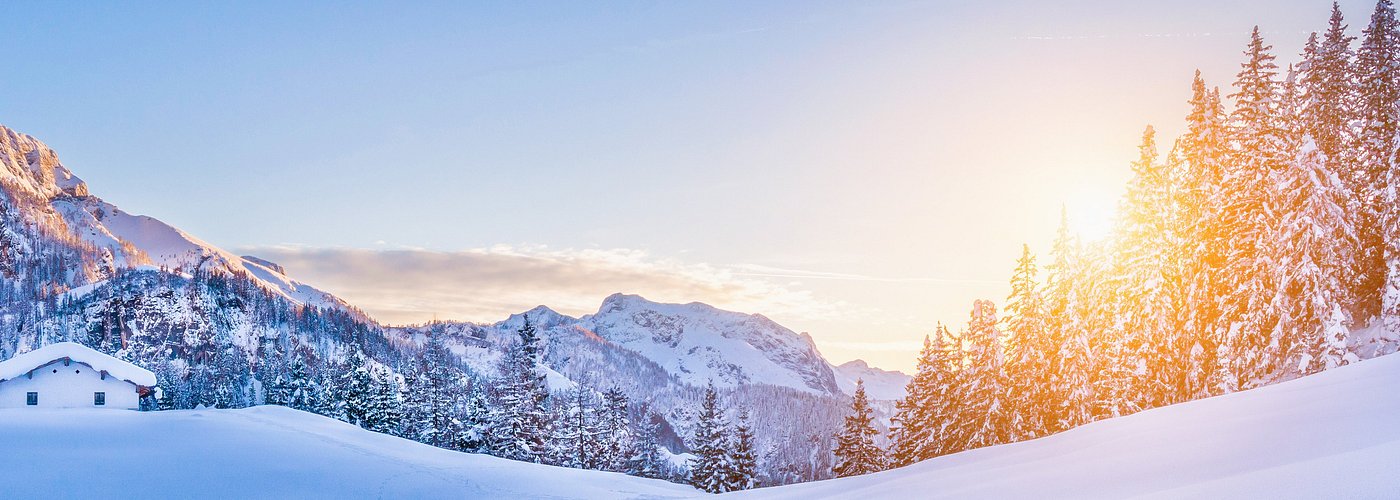
Essential Austrian Alps
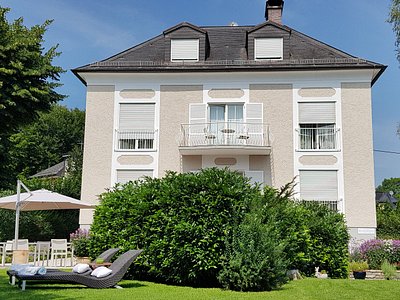
Trending in the forums
Austrian Alps Is Great For
Historical tours.

Ski & ride

Cultural Tours

The Austrian Alps: 7 Best Places That Adventurers Will Love
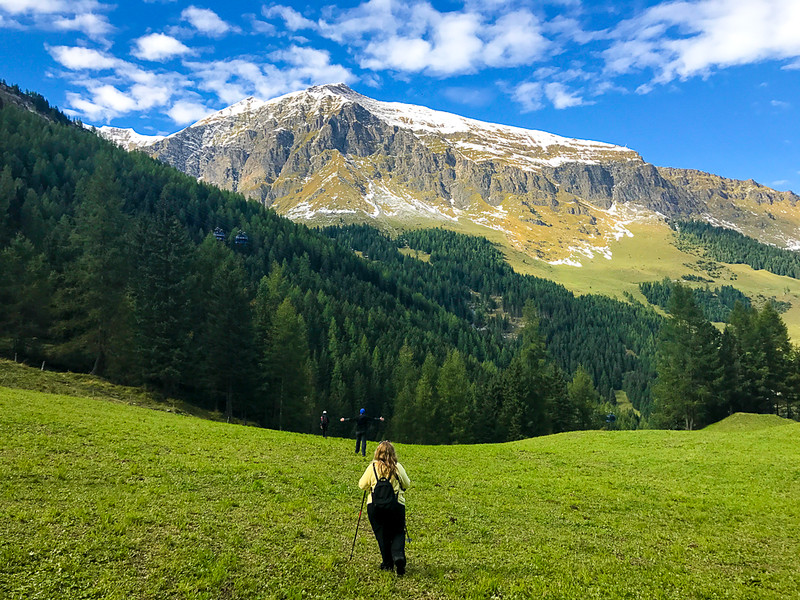
Austria is one of the most exciting places I have visited and the Austrian Alps are just as much adventure as relaxation.
Table of Contents
The Austrian Alps have a variety of adventures that will keep you occupied during summer and winter. I visited a few different destinations in the Austrian Alps and I loved all of them. Here are some of the best places to visit that you’ll love.
The Start of your Austrian Alps Trip
Ideally, you’ll have plenty of time to visit these seven magnificent places and be amazed by the wonders you’ll encounter.
Fortunately, distances in Austria aren’t particularly long so you can drive around the country, and it won’t take you more than six hours to go from Nassfeld to Schruns for example.
If you plan in advance and visit all these places in order, you won’t be driving for more than two hours each day.

Wherever you choose to start from, you will be sure to have a great Austrian alps trip. If you don’t have a vehicle of your own don’t worry. You can easily rent a car from most major cities and airports to visit these magnificent Austrian Alps.
CHECK AVAILABILITY
Nassfeld, Austria
The Nassfeld is well known as a ski resort in Kårnten (Carinthia in English), Austria’s most southern state.
It’s near the Italian border. With 110 km of ski areas, 1000km of hiking trails and 950km of cycling trails, it is an adventurer’s paradise.

Many of the trails are reached from the Milleniumsbahn, a gondola that whisks you up high into the Austrian mountains so that you already have amazing views from the start of your hike.
Austria Travel Tip: Stay at the Falkensteiner Hotel & Spa Carinzia you will receive a +Card which gives you a free gondola ride.
Make sure to try the Summer Rodelbahn, which is, in essence, a summer sled. In this case, it’s a 2 km track where you can reach speeds of up to 40km/hr!
There are a couple of different options and courses depending on your abilities. And there’s even a course designed for kids, so it’s very family-friendly.
Related Reading: Best Hiking Underwear: Top Picks for Wool, Moisture-Wicking and Antichafing
Where to Stay Near Nassfeld
Top Pick: Hotel & Spa Belibergerhof
A good option is the Hotel & Spa Belibergerhof in Bad Bleiberg, located ~30 minutes away from the Nassfeld Ski Area. This wellness hotel offers a spa, sauna and wellness area. It’s surrounded by a beautiful natural landscape.
Each guest room offers guests a mixture of traditional and modern decor. There is a daily breakfast buffet that caters to specific dietary needs such as gluten intolerance.
There are 2 fantastic restaurants to choose from and the hotel itself offers a wonderfully cozy ambience making guests feel at home and relaxed. Each room offers wonderful views of the Austrian mountains from the balcony.
Top Pick: Der Tröpolacherhof Hotel & Restaurant
Der Tröpolacherhof Hotel & Restaurant is located in the heart of Tröpolach just 300m from the Millenium Express Cable Car. Guests can enjoy the on-site sauna, steam bath and infrared cabin.
The guest rooms are spacious and come equipped with a balcony. Bathrobes are included in the private bathrooms. There’s an onsite restaurant that serves traditional Carinthian cuisine.
Guests can use the billiards table, table tennis and wi-fi in public areas. Bicycles are provided to guests free of charge.
Recommended Reading: Tour du Mont Blanc: The Best Way to Plan Your Epic Trek!
Grossarl
Grossarl is located just 86 km south of Salzburg or 205 km if you’re coming from Munich. It’s a perfect weekend getaway in the Austrian Alps.
It’s the ultimate travel destination if you’re seeking active relaxation – my favorite type of relaxation. It offers a mix of activities, in this case, hiking, but with spa time and time to relax as well.
We visited Grossarl in mid-September. Fall is a fantastic time to visit.
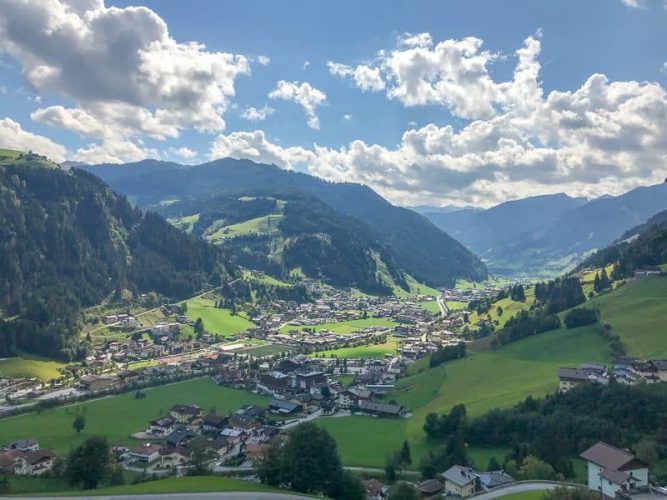
Grossarl offers an incredible 400 km of signposted hiking trails, many leading to one of the 40 or so mountain huts.
We tried a few different hikes including the Shuhflicker which is a ridge walk that culminates in an Alpine mountain peak with panoramic views. We also hiked to the Saukarkopf, one of the most beloved mountains in Grossarl.
Where to Stay When You Go to Grossarl
Top Pick: Berg-Leben Grossarl Hotel
The recently extended Berg-Leben Grossarl Hotel is located in the center of Grossarl and features a large top-floor spa area. It is conveniently located near the cable car and offers elegant rooms.
The rustic decor of the property adds to its charm and each room comes with bathrobes and slippers. Guests can make use of the spa facilities during their free time, which include a Finnish sauna, a steam room (sauna) and a hay bath. You can enjoy wonderful views of the Austrian Alps from the terrace.
Top Pick: Hotel Roslehen
The Hotel Roslehen is located in a quiet location in the center of Grossarl. The south-facing sun terrace offers guests perfect views of the mountains.
Guests can relax and enjoy the spacious Rosen Spa which includes a steam bath, Finnish sauna, infrared cabin and herbal sauna.
The Rosen Spa is unique and offers guests a rose garden and relaxation rooms with waterbeds. Massage treatments are also available. Bathrobes are provided free of charge.
Most rooms have a balcony. Breakfast is served daily and includes organic products. The property also offers a playroom, playground and petting zoo for children to enjoy. Free parking is also available.
Schruns: Snowshoeing in the Austrian Alps
I found out about Schruns, in the Austrian Alps by accident. I was itching to get in a weekend of snowshoeing but really didn’t know where to go that was reasonably close to Stuttgart, my home base.
Schruns is a small village of 3800 people in Vorarlberg in western Austria. It’s surrounded by mountains and lies 500 km west of Vienna and ~250km south of Stuttgart. You’ll need a car to get around easily.
Snowshoeing is not very popular in Europe, but luckily Schruns has a good selection of snowshoe trails and “winterwanderrouten” ( winter hiking trails).
The lady at the tourist office was good enough to recommend two snowshoeing trails. You should also be advised that the hiking trails are only accessible with snowshoes.
Austria Travel Tip: If you’re looking for good routes to snowshoe or take part in other winter activities, ask the locals. I have discovered some best spots this way.
We did the Bartholomäberg region, just a few kilometres from Schruns. A good portion of the hike takes you past cottages and across roads.
Austria Travel Tip: Always make sure to have some food in case the mountain hut is closed which happens during off-seasons.
The next day, we found ourselves at the Silbertal Ski Area, just a short drive from Schruns. Our chosen trail started at the bottom of a downhill ski run. We cautiously trekked up the side of the trail.
The first viewpoint overlooked the mountain and had a small valley before leading up another mountain range. Spectacular! At one portion of the trail, we had to wade through knee-deep snow as there was no path.

Where to Stay When You Go to Schruns
Top Pick: Haus Stüttler/Duchscherer
Haus Stüttler/Duchscherer is located in Schruns and offers accommodation with a garden and free Wifi. The rooms are well furnished and offer comfort and charm.
Some units have balconies with a wonderful Austrian Mountain View. Guests can choose between rooms with private bathrooms or shared bathrooms. The property also offers parking with no extra cost.
Top Pick: Hotel Auhof
Hotel Auhof provides guests with comfortable accommodation and a spa area. The property also has its own on-site restaurant for your convenience.
Each unit comes with a TV and a bathroom with a shower and the apartments come equipped with a seating area and a kitchenette that includes a dishwasher.
The spa offers guests a Finnish sauna, a bio sauna and a steam bath and guests can request massages. Guests can relax in front of the fireplace in the common lounge and free Wi-Fi is provided in public areas.
Know Before You Go Snowshoeing in The Austrian Alps
- Due to its relatively low elevation, it’s a good idea to check the Snow Report before you go.
- For more info, see the Montafon Tourist Info Site.
- You can pick up the free “Aktivkarte Winter” in English, “Winter Activities Map”. The map is only available in German.
- It’s useful and relatively easy to use even if you don’t speak German. You may also get lucky as we did with the tourism information lady being a skier.
Stuiben Waterfall
Fortunately, Stuiben Waterfall was near the Aqua Dome where we were staying. They were even kind enough to arrange our own private guide to visit it. The hiking path up the waterfall is incredibly well designed.
There are several viewing platforms along the way, providing the best vantage points of the waterfall. Hiking to the top of the waterfall was just a short walk which only takes less than an hour and puts you just over 300m elevation gain on a gradual path.
Just past the waterfall, there’s the Stuiben Restaurant which makes a great rest stop if you’ve worked up an appetite after your walking tour.

The more adventurous can even climb up Stuiben Falls. Not only do you climb up alongside the 150m waterfall, but you actually cross it near the top on a wire cable. This looks like pure adrenalin!
Where to Stay When You Go to Stuiben Waterfall
Top Pick: Gasthof Leiter’s Hoatmatl
Gasthof Leiter’s Hoatmatl in Umhausen is the perfect place to get a full immersion in nature with a great view of the mountains. Guests can enjoy the onsite restaurant, free private parking and a garden to relax in.
The property offers guests free access to the sauna as well as free wifi throughout the property. Each room comes equipped with a closet, desk and private bathroom.
Top Pick: Aqua Dome
Aqua Dome in Längenfeld is a beautiful hotel to relax and enjoy a huge Spa area. With stunning views of the mountains and a selection of thermal baths, the hotel is the perfect wellness getaway.
There are several restaurants to choose from as well as a lounge and bar which are warmed by fireplaces. Read more about my stay here . I LOVE the Aqua Dome and highly recommend it.
Plan to be there on a Friday so that you can enjoy the unique outdoor pools that are lit up each Friday night.
Know Before You Visit Stuiben Waterfall:
- We visited Stuiben Waterfall with a guide, but it’s very well-marked, so it’s easy to visit on your own.
- We also stopped by the Archaeological Open-Air Park, which is en route to the waterfall. The open-air museum shows what life was like in prehistoric times. It’s more suited to children than to adults.
- The climb up Stuiben Waterfall is considered easy in that it’s not technical, so if you are familiar with Klettersteig (climbing along ropes while in a harness) you could do this on your own. If not, you can arrange a guided tour in Umhausen.
- Austria Travel tip: Most stores are closed on Sundays. We tried to find a place to rent climbing harnesses on Sunday morning, but they were all closed, so get your gear on Saturday.
- There are so many great hikes in the Ötztal that you should stay for several days.
- If you like waterfalls, also be sure to check out Krimml Waterfall – it’s Austria’s highest waterfall!
A Special Hiking Tour in The Austrian Alps

MoaAlm is a holiday concept where adventures are shared, and new friends are made. You will arrive as guests, but you’ll leave as friends is the promise on their website. After spending a couple of days with Barbara and Hubert, I can vouch that this is true!
MoaAlm is one of two WearActive homes – a small company that offers ‘Relaxingly Active’ holidays in Hohe Tauern National Park, Austria and on the Croatian Island of Vis.
You engage in activities tailored to you and to your adventure level. In the summer months, this includes hiking, mountain biking, rafting, and rock climbing to name a few. In winter, guests can choose between downhill and cross-country skiing, snowshoeing, winter hiking and sledding in this alpine region.
We did several easy trails including hiking to the Dorfertal Valley and enjoyed several trips into the Hohe Tauern National Park and got in some views of the Grossglockner, Austria’s highest mountain peak. During these hikes, I also had the opportunity to enjoy the beautiful alpine pastures that litter the Austrian Alpine mountains.

Know Before Your Adventure in the Austrian Alps Begins:
- The nearest train station is in Lienz, about 30 minutes away. They will pick you up from there.
- Notify them of food allergies in advance. I have gluten allergy which was well accommodated, but given how remote MoaAlm is, the chef needs time to prepare.
- Check the MoaAlm website for themed weeks or sign up for their newsletter!
- There are no TVs in the rooms – which I saw as a huge plus!
- You will interact a lot with Barbara, Hubert and the other guests. If you are looking for a solace away from people, or time alone with your sweetheart, you may want to choose a more traditional type hotel where you will have more privacy.
Wilder Kaiser: Summer & Winter Activities
I visited Wilder Kaiser in summer and colder months of winter and I absolutely love it. This is my first option for a weekend getaway. Wilder Kaiser is conveniently located in the Tirolean Alps of Austria between Innsbruck, Munich, and Salzburg.
The Hintersteinsee (Hinterstein Lake) is perfect for swimming and hiking and summer and cross-country skiing in winter.
You can hike or e-bike to Gruberhof. The “Gruberhof” is the home of the “Bergdoktor” (alpine doctor), a popular TV show in Germany. Outside of filming site the farm is called “Köpfing”. If you are feeling ambitious you can continue up to Hohe Salve which I have snowshoed up in winter.
Hike the Asterbergsee. From the Asterbergbahn you can either take a chairlift or hike up to the Astbergsee. It’s a small alpine lake, but the views are stunning. There are a variety of paths you can do depending on how hard of a hike you’re looking for.

Check out Elmmau’s Summer Night. It’s held every Tuesday in the summer. Admission is free. Starting at 6:00 pm the street turns into a car-free pedestrian zone where you can shop traditional crafts. There are live bands playing music of all different types of genres, so you’ll find something to your taste.
In winter, on selected Monday evenings, you’ll find music, mulled wine stands and a festive après-ski atmosphere. Then, at 8:30 local skiers will demonstrate their skills. You can expect synchronized skiing to music and nostalgia skiing. The night ends up with a bang that lights up the night sky with a flurry of fireworks.
I enjoyed alpine skiing at Skiwelt . It is one of the largest and most modern ski resorts in the world. They have some great special events like night skiing. You can even watch the sunset from Skiwelt which I highly recommend.
Visit the ALPENIGLU – Igloo Village . Stop by for a drink, take a tour of the village or if you like to keep things cool, spend the night in the igloo hotel.
You can also try out Moonlight Tobogganing at Söll its really fun and not just for the kids.

Where to Stay When You Go to Wilder Kaiser
Top Pick: Bergpension-Ebental
Bergpension-Ebental offers comfortable accommodation just 1.7km from the Igloo Village. All rooms have a balcony with a view of the gardens as well as an on-site bar. The hotel has ski-to-door access as well as a barbecue area for guests and a daily buffet breakfast.
Top Pick: Gästehaus Hofer
Gästehaus Hofer offers ski to door access as well as a steam bath and a balcony. Apartments come equipped with a kitchen and dishwasher. Ski storage and an infrared room are available at the premises as well as a children’s playground and sun terrace.
Know Before You Go To Wilder Kaiser
- I stayed at the Gasthof Postwir in Söll. I LOVED my stay here
- I’d recommend spending 5 to 7 days at Wilder Kaiser. There’s so much to do, no matter how active you want to be.
- The Wilder Kaiser Guest Card (free when you’re staying in Wilder Kaiser) entitles you to free public transportation between all four villages and to the start of hiking trails.
- The tourism board offers a varied weekly program with 12 activities and guided hikes each week. Most of these are free. Ask for the updated program at the local tourist office.
- There are four villages that comprise Wilder Kaiser; Ellmau , Going , Scheffau and Söll . Ellmau and Söll are the largest of the four villages and the most popular with English-speaking tourists.
- The peak season at SkiWelt is from December to March, but it’s also open pre-season: in early December and post-season from March to April. Check the SkiWelt site for the most up-to-date information .
- Ski at SkiWelt but also get off the slopes to try snowshoeing winter hiking, and tobogganing.
- You can get to Wilder Kaiser from Kufstein with a shuttle. The cost is €15 each way. Details here .
- There are also shuttles to the ski lifts.
Innsbruck, The Austrian Alps
Innsbruck is a perfect place to visit if you are looking for city exploration and outdoor activities all in one.
You can visit the Swarovski Crystal World, which is very artsy and probably not what you will expect – I didn’t love it to be honest. Stroll down Maria-Theresien Strasse and lose yourself in the beautiful architecture and the perfect atmosphere.
You can marvel at the famous Golden Roof and visit the Ambras Castle. Enjoy the views from the Bergisel Ski Jump and take a cable car right up to the highest peak of this Austrian Alps.

Enjoy some of the most beautiful hiking trails in the Austrian Alps and in winter find the most exciting snowshoeing trails that you can think of. Don’t forget to take a ride on the Hungerburg Funicular and to get in some mountain biking. And most importantly make sure to visit a Käserei (cheese shop).
Where to Stay in Innsbruck
Top Pick: Hotel Zach
Hotel Zach is located in a quiet location very close to Innsbruck’s old town. The hotel offers free wifi. Guests can enjoy rooms with bright wooden furniture and a private bathroom.
Enjoy a daily breakfast buffet with fresh fruit and more. Guests can enjoy the fitness room free of charge.
Top Pick: Hotel Innsbruck
Hotel Innsbruck is located at the bank of the Inn River, in the heart of the old town. Guests can enjoy spacious and comfortable rooms with air-conditioning and a minibar.
The hotel offers rooms with accessibility for disabled guests. Guests can enjoy the indoor pool and 2 spa areas.
Know Before You Go To Innsbruck
- Stay at the Hotel Schwarzer Adler, Austria Trend Hotel Congress Innsbruck or Hotel Zach which all have great locations.
- Get a city card or try something adventurous like paragliding.
- Innsbruck is an Austrian town located ~150km south of Munich. It wasn’t really far for us to travel to, around 90 minutes by car.
The Austrian Alps are incredibly beautiful and an amazing destination for hiking, snowshoeing, or skiing. And reward yourself for your efforts in one of the amazing wellness hotels you can find there for a perfect active relaxation vacation.

Leave a Comment Cancel reply
Awesome, you're subscribed!
Thanks for subscribing! Look out for your first newsletter in your inbox soon!
The best things in life are free.
Sign up for our email to enjoy your city without spending a thing (as well as some options when you’re feeling flush).
Déjà vu! We already have this email. Try another?
By entering your email address you agree to our Terms of Use and Privacy Policy and consent to receive emails from Time Out about news, events, offers and partner promotions.
Love the mag?
Our newsletter hand-delivers the best bits to your inbox. Sign up to unlock our digital magazines and also receive the latest news, events, offers and partner promotions.
- Los Angeles
Get us in your inbox
🙌 Awesome, you're subscribed!

The best places to visit in the Austrian Alps
From world-famous ski resorts and iconic film locations to tranquil lakes and alpine dairies, this is where to go in the Austrian Alps

Sweeping across much of Austria from west to east, this impressive section of Europe ’s mighty mountains stops just short of Vienna . There are ranges with rugged granite outcrops, spectacular glaciers and summits over 3000m (9,843 feet), as well as those with lush valleys and gentler terrain. In the colder months, snowy slopes make Austria a hub for winter sports, while summer appeals to hikers and bikers – or those who just want to twirl in a meadow à la Julie Andrews in The Sound of Music. Each to their own. Here are the best places to visit in the Austrian Alps, according to destination expert Kate Mann.
Kate Mann is a travel writer who has travelled extensively in Austria. At Time Out, all of our travel guides are written by local writers who know their cities inside out. For more about how we curate, see our editorial guidelines and check out our latest travel guides written by local experts.
RECOMMENDED: 🇦🇹 The best things to do in Vienna
An email you’ll actually love
Where to go in the Austrian Alps

1. Innsbruck
Surrounded by mountains, the capital of Tyrol makes a great base for exploring some of the most dramatic scenery in the Austrian Alps. Start by taking the cable car up to the Nordkette range which sails over the pastel-coloured buildings below. Back in the city, don’t miss the old town with its winding alleys and traditional restaurants serving classic Tyrolean cuisine. Try the kaspressknödel , comforting cheese dumplings or the g röstl , a mix of onion, bacon and potatoes, topped with a fried egg.

2. Sölden
Set-jetters, this one’s for you. Sölden, a town in the Ötztal valley, was chosen by director Sam Mendes in 2015 as a shooting location for key scenes in the James Bond movie Spectre . If you’ve seen it, you’ll recall scenes of Land Rovers thundering across the snow and Daniel Craig in a pair of glacier sunglasses. Central to the location choice was a futuristic glass-walled building, sitting high at 3,048m. Normally an upscale restaurant called ice Q , it became a fictional medical centre during filming. Easy to reach using the Gaislachkoglbahn (mountain lift), it now has an installation of the shattered plane from Spectre next door. The area is also perfect for a wide range of outdoor sports, including early-season skiing.

3. Gesäuse National Park
Deep gorges, limestone formations and white-water rapids define this part of the state of Styria. The park’s name aptly stems from the word for ‘roaring’: the land here centres around the fast-moving torrents of the Enns river and the channels that dart off in different directions. To the south, you’ll find Johnsbach, part of the Bergsteigerdörfer (Mountaineering Villages) initiative. Managed by the Austrian Alpine Association, the project aims to promote sustainable development and offer alternatives to mass tourism in the Alps.

4. St Anton
Commonly referred to as the cradle of alpine skiing, this once-quiet settlement was first put on the map by a number of local pioneers. This included ski enthusiast Hannes Schneider who opened the region’s first ski school and developed a technique that continues to influence teaching. Today St Anton is part of the largest connected skiing area in Austria and is known around the world. Reliable snowfall, diverse free-riding options and lively après-ski bars keep people coming back year after year.

5. Werfen
You won’t be judged if you have the urge to start singing ‘The Hills Are Alive’ in Austria – especially in Werfen! After ticking off a number of Sound of Music filming locations in Salzburg, this nearby town is home to the spot where the von Trapp children first learned to Do-Re-Mi with the Hohenwerfen Fortress in the distance. You can get there via a well-marked path. Werfen is also home to a huge natural ice cave, Eisriesenwelt, where stalactite-filled passages lead deep into the mountain.

6. Grossglockner High Alpine Road
Completed in 1935, this epic pass road winds its way through the Hohe Tauern National Park, the largest nature reserve in the Alps. Open from May to November, depending on the conditions, it connects the state of SalzburgerLand in the north to Carinthia in the south. On a clear day, you can see Austria’s highest peak Grossglockner as well as the Pasterze Glacier. Bring your camera, but also your wallet to pass through the toll gates. Alternatively, you can pay online.

7. Vorarlberg
Austria’s smallest and westernmost state is a haven for cheese fans. Visit a selection of dairies for specialties such as Vorarlberger Alpkäse, a hard mountain cheese, or Montafon Sura Kees , a rare fermented option that has seen a revival in recent decades. For more local craftsmanship, head to the region of Bregenzerwald. Here internationally renowned architects have long been using natural materials, such as indigenous timber, to create simple yet striking contemporary structures that work with the landscape. This includes a set of unusual bus stops.

8. Lake Wörthersee
Situated close to the Slovenian border and surrounded by forested foothills, Wörthersee is one of Austria’s largest lakes. Thanks to its notable green-blue colour and warm waters in summer , it’s a popular holiday and swimming destination. While some of the banks are occupied by private villas, there are a number of public beaches where you can spend the day. Climb to the top of the Pyramidenkogel, a 100m-high viewing platform, for the best views of the lake and beyond.

9. Saalbach-Hinterglemm
First and foremost a ski destination, this large resort has turned its attention to additional seasons in recent years. Now one of country’s main centres for mountain biking, cyclists flock here during the warmer months to tear down the extensive network of trails, many reachable by cable car. There are also a number of gravel biking routes that start in Saalbach and wind on through to neighbouring valleys. All calories burned can be replaced with large servings of apple strudel from one of the wooden hillside huts.
[image] [title]
Discover Time Out original video
- Press office
- Investor relations
- Work for Time Out
- Editorial guidelines
- Privacy notice
- Do not sell my information
- Cookie policy
- Accessibility statement
- Terms of use
- Modern slavery statement
- Manage cookies
- Advertising
- Time Out Market
Plan Your Trip to Austrian Alps: Best of Austrian Alps Tourism

Essential Austrian Alps

Trending in the forums
Every product is independently selected by (obsessive) editors. Things you buy through our links may earn us a commission.
I Hut-to-Hut Hiked Through the Austrian Alps for 5 Days
Mountaintop beers, roaming goats, and homemade strudel..
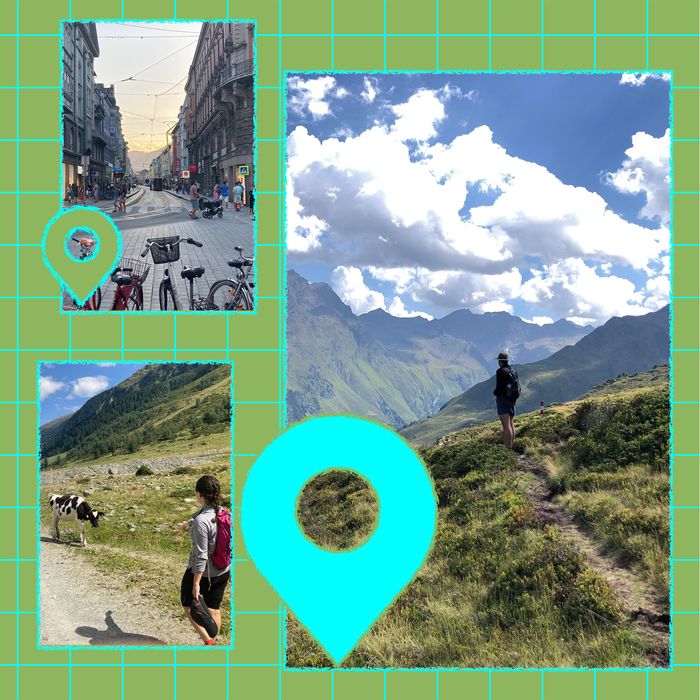
Everyone knows that person who spends weeks sniffing around travel blogs, going deep into Tripadvisor rabbit holes, collecting Google docs from friends of friends, and creating A Beautiful Mind –style spreadsheets to come up with the best vacations and itineraries possible. In this recurring series, we find those people who’ve done all the work for you and have them walk us through a particularly wonderful, especially well-thought-out vacation they took that you can actually steal.
I’m the kind of traveler who will take a mountain over a museum any day, and thankfully, so is my partner, Jack (our first date was a hike). In August, we went on our first international trip together, which, quite fittingly, was hut-to-hut hiking in the Alps, a travel bucket-list item I first learned about in college. Hut-to-hut hikes (which exist internationally but are most well-known in Europe) are multiday treks between fully appointed lodges — the appeal of which is a plush bed, warm shower, and home-cooked meal after a long day of hiking. Also, unlike traditional backpacking, you don’t need to carry much gear.
Since popular Alpine huts are known to fill up six months in advance, we started planning our route in January (using European outdoor sites for guidance) and eventually settled on a 31-mile section of the Stubai High Trail , a well-trafficked, high-alpine route outside Innsbruck, Austria (cheaper and more convenient than options in Switzerland or Italy). Next, we joined the Austrian Alpine Club , a $115 membership that guarantees mountain rescue in case of emergency and affords a discount at most huts. Finally, we booked the huts, prioritizing those with single rooms, a slightly more expensive, but private, option than communal dorms (still, no nightly stay was over $80 per person, including dinner and breakfast, known as “half board”). As this was my first trip to Europe, we tacked on an additional 72 hours in Munich and Vienna.
Although I’ve hiked in the Sierras and backpacked in British Columbia, trekking through the Alps was my most challenging trip yet (made more difficult by some of my gear choices and the fact that we chose an alpine route). One fellow hiker, an experienced mountaineer from Berlin who was surprised to see non-Europeans on the trail, put it like this: “There are American hikers, and then there are hikers .” Still, with the right gear and preparation, it’s well worth it for the friendly cows, cozy huts, and breathtaking views.
2 p.m.: Land in Munich and take the S-Bahn to the hotel
We took an overnight flight from Newark to Munich via Stockholm, a trip that took about 14 hours, including a four-hour layover (if you’re willing to shell out a few extra hundred dollars, United operates direct flights from Newark and JFK). Our plan was to sleep on the flights and land feeling refreshed enough to spend an afternoon exploring the city. In reality, we landed in desperate need of coffee. After guzzling some in the airport, we hopped on a one-hour train ride to the hotel (the S-Bahn commuter rail ran notably smoother than NJ Transit).
We stayed at the MK Hotel Max-Weber-Platz ( Einsteinstraße 34, 81675 ) in Au-Haidhausen. It’s a neighborhood on the west bank of the Isar that’s relatively shielded from tourists but still walking distance (25 minutes) from the old town. The MK has some quirks. For instance, the wall separating the bedroom and bathroom in our room was partially glass, lending itself to very little privacy in the shower. But, as far as budget hotels go, it fits the bill (which was a steal with credit card points). After cleaning up, we were ready to walk around.
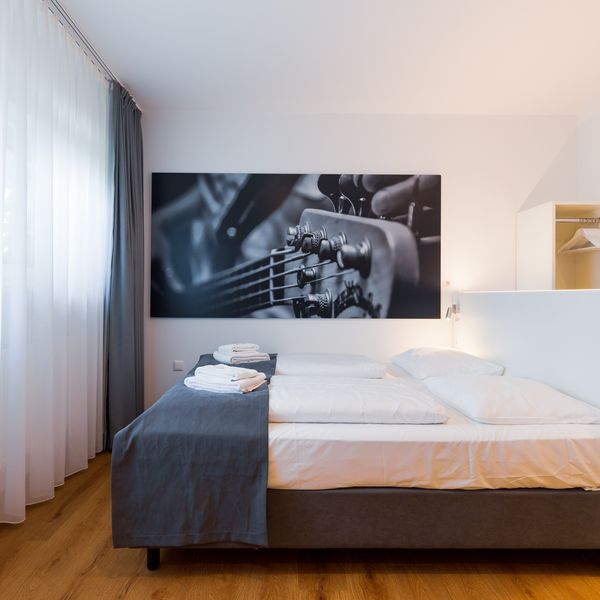
4 p.m.: Tour the city’s biergartens and Bavarian buildings
With only one evening in Munich, we set out to experience the best the city has to offer: beer and historic buildings. Our first stop was Biergarten am Muffatwerk ( Zellstraße 4, 81667 ), a leafy, certified organic beer garden abutting the Isar. Many locals arrived straight from a swim, towels and all, to drink a pint in a cabana chair. We ordered two half-liter pours of Lammsbräu Urstoff, a Bavarian lager, and ate olives with feta, sauerkraut, a pretzel, and a sausage (I’m a vegetarian, though I toe the flexitarian line on vacation). Next was a stroll through the old town, including a stop to admire the Hofgarten , a Renaissance-style garden on former Bavarian palace grounds, and Gothic municipal buildings at the Marienplatz (a city-center square). The night ended at Hofbräukeller ( Innere Wiener Straße 19, 81667 ), a gigantic beer garden where we drank more beer (you can’t buy anything less than a liter in the evening) and tried obatzda , a Bavarian cheese dip reminiscent of pimento cheese. Five miles and five hours later, we fell fast asleep.
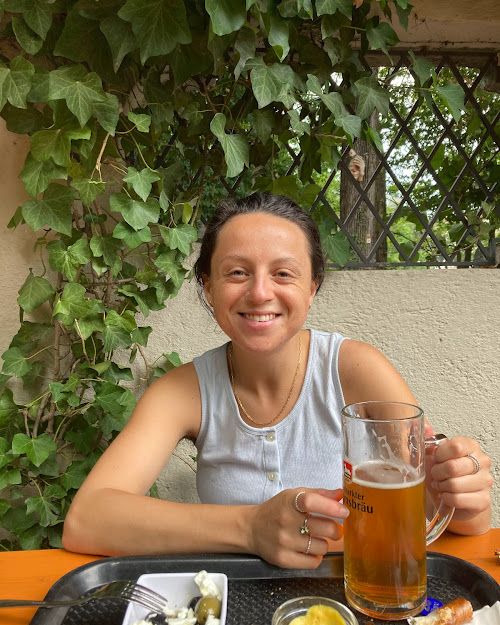
10 a.m.: Visit Dachau Memorial Site
After a slow morning people-watching and nibbling on pastries at Café Am Max-Weber-Platz ( Max-Weber-Platz 11, 81675 ), we took a 45-minute train to the Dachau concentration camp Memorial Site ( Alte Römerstraße 75, 85221 ). As a Jewish person who had never been to Europe before, it was important to me to bear witness to the legacy of the Holocaust. The Dachau Memorial Site is free and spans the grounds of the former concentration camp. Audio guides and group tours are available for under $5, and a comprehensive 40-minute English documentary plays three times per day. We opted to see the documentary at 11:45 a.m. and spent about an hour walking through the educational exhibits and religious memorials. I found the visit to be equal parts informative and emotional.
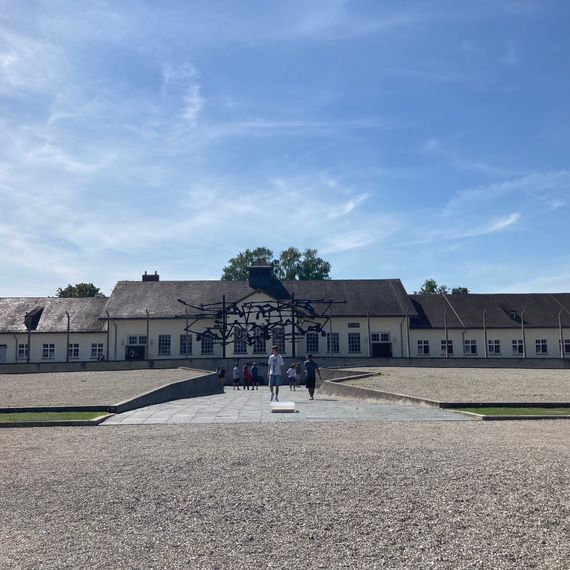
2 p.m.: Picnic on the Isar
Once back in the city, we picked up a döner kebab , falafel salad in a box, and spinach hand pie from a casual Turkish spot and walked ten minutes to eat on the bank of the Isar. The water near us was only calf-deep, but parts of the Isar are popular for swimming and surfing, though not for the faint of heart: The river is only 60-something degrees during the height of summer, and there are powerful currents. After lunch, we waded in to cool off. Before heading to the train station, we stopped at Aldi to stock up on snacks for the hike, including a regional blend of Haribo gummies and lots of sandwich materials. Keep in mind, though, that you have to pack out all of your trash.
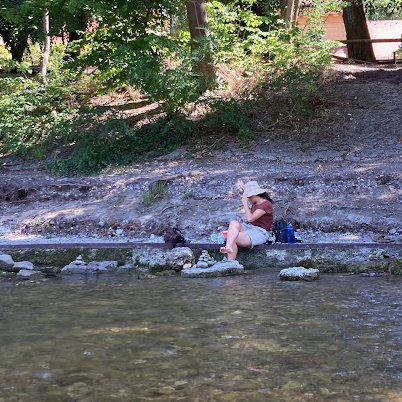
5 p.m.: Take a train to Innsbruck and get Indian food for dinner
We arrived in Innsbruck at 6:30 p.m., the perfect time to drop our backpacks at the (clean and conveniently located) Pension Stoi Guesthouse ( Salurnerstraße 7, 6020 ) and see the city in the final bit of daylight. Innsbruck is exactly how I imagine Aspen, Colorado, to be. A popular destination for Italian and German tourists, the city (which is the capital of Austria’s western state of Tyrol and the site of Swarovski’s headquarters) is riddled with upscale boutiques and ski resorts all set to the striking backdrop of the Alps.
After walking through the historic Altstadt neighborhood to marvel at a 15th-century gilded roof and baroque houses turned boutiques, we crossed a bridge into the quieter (and cheaper) Mariahilf-St. Nikolaus district for dinner. Knowing we’d be eating Tyrolean food for the next five days, we shared baingan bharta and palak paneer at Rama Indian Restaurant ( Innstraße 81, 6020) . It was carb-heavy and salty — an ideal pre-hike meal.
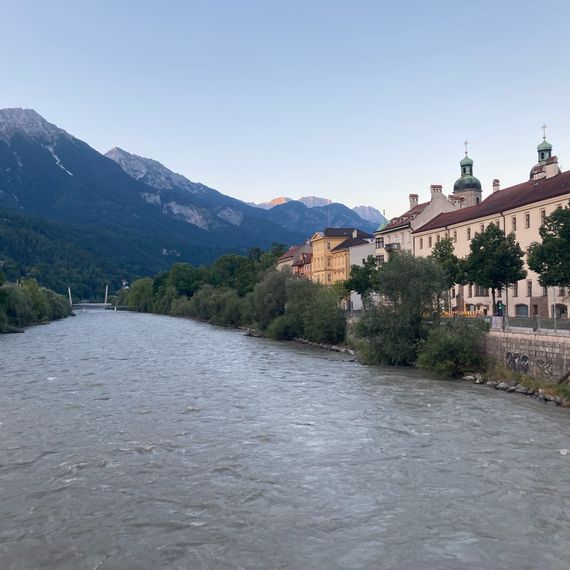
11 a.m.: Hike into the Pforzheimer Hut
From Innsbruck, it’s a 45-minute ride on the 4166 bus to Saint Sigmund im Sellrain, a small village in the heart of the Sellrain valley where our hike began. The bus leaves at 8 a.m., 9 a.m., and 11 a.m. daily. After eating some pastries and packing up, we caught the 11 a.m. bus (though I’d recommend going earlier to avoid the afternoon heat). The day’s 4.5-mile trek, which follows the Gleirschbach River through a picturesque valley dotted with friendly cows, sheep, and goats, took us five hours (including a lunch break and many stops to pet the livestock). Although technically simple — all but the last half-mile or so is on a gravel fire road — the hike sees 2,600 feet of elevation gain. For context, that’s double the elevation gain of Breakneck Ridge , often considered one of the more challenging routes in the Hudson Valley. All well worth it for the breathtaking views.
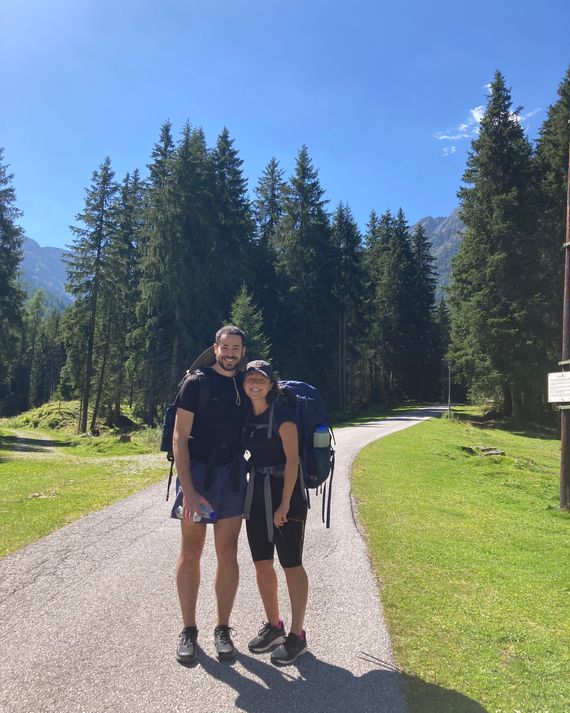
4 p.m.: Get to know other hikers over a beer
Pforzheimer hut is a cozy wood-and-stone structure perched atop a hill right next to the Gleirschbach. For reasons I still can’t quite figure out, the hut has a subtle Buddhist vibe, perhaps the Tibetan prayer flags that hang around the perimeter and an altar on the second floor with a Buddha statue where incense is burned at night set the tone. The communal bathrooms and bedrooms are also on the second floor. On the first floor is the communal dining room and gear room for drying clothes and stashing boots, which cannot be worn inside any hut (they’ll all have slippers for you to borrow). Around the back is an outdoor terrace, where, after a shower, I joined Jack for several beers and a slice of homemade apricot strudel. We chatted with some fellow travelers and got a helpful tip about how to stick to the trail (instead of off-roading as we’d thought necessary) the following day.
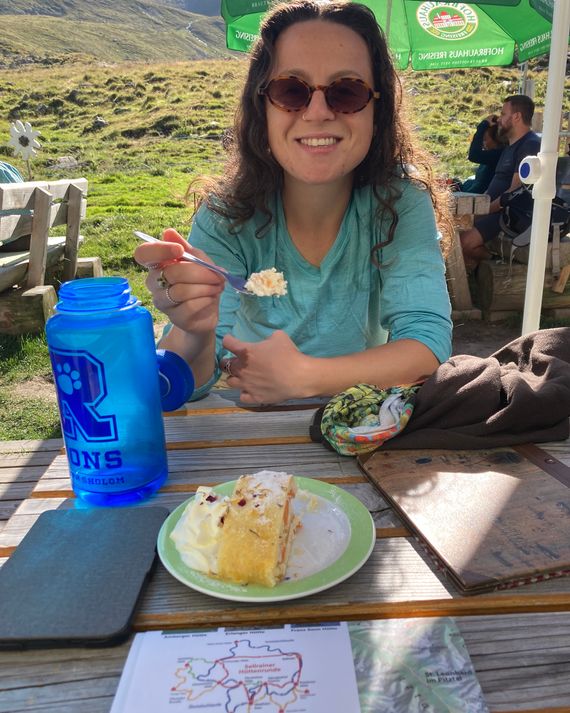
6:30 p.m.: Tuck into a four-course, home-cooked meal
I’m the kind of person who will eat anything while on the trail (I once gleefully chowed down on tuna-jelly-mustard-cheese sandwiches while backpacking). Still, it was the height of luxury to be served a multicourse, home-cooked meal after a long day of hiking. Dinner, which began promptly at assigned tables in the communal dining room, was carrot-ginger soup, salad with fennel and seeds, pasta (meat for Jack and spinach for me), and chocolate quark crème , a yogurt-like German dessert. We paid for our stay in cash before bed (as required at all the huts) and fell asleep by 9 p.m. to the sound of cowbells.
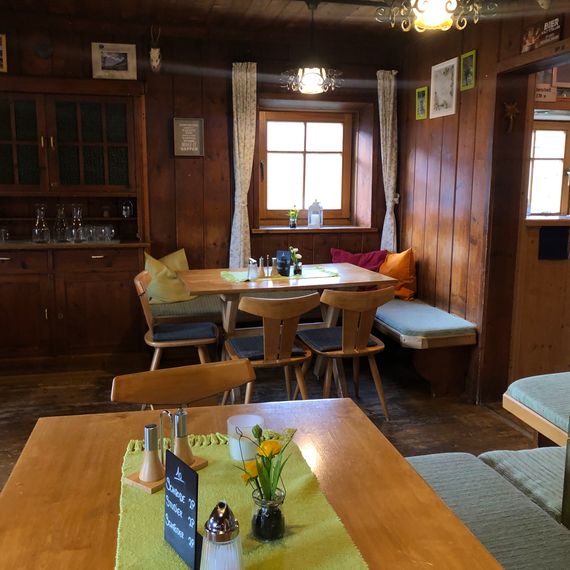
8 a.m.: Trek up the Zischgenscharte pass
After an early wake up (6:30 a.m.) and a fully loaded breakfast buffet of bread, sliced cheese, meat, muesli, yogurt, and spreads, we set out to the second hut of our trip. This hike of just over four miles ended up taking eight hours. The trek took all day for two reasons: (1) As you will see is a pattern, we took our time — stopping to admire the views, pet cows, and eat snacks; (2) the hike was the most difficult of our trip (for me, not Jack).
After descending into the valley and climbing a steep but well-marked dirt-and-gravel path through the Stubai Alps, we hit scree fields (sections of unstable, broken rock), ascending the 10,000-foot Zischgenscharte pass . Here, the trail is only partially marked with cairns, and you have to use ropes and cables on the last two-thirds of the scree field. In Jack’s defense, I made the whole ordeal longer by having a mini breakdown and then leaving my bag partway up the pass, requiring him to go down and grab it. In my defense, the gully is very steep, and it’s hard to hike in scree, especially without proper gear. If I were to do it again, I would wear hiking boots, carry poles, and try to maintain better form (keep your nose above your toes and keep going, as the adage goes) instead of cowering on the rocks. At the top, there’s a striking view of the entire mountain range, and the dirt path down was steep but (mercifully) well-marked.
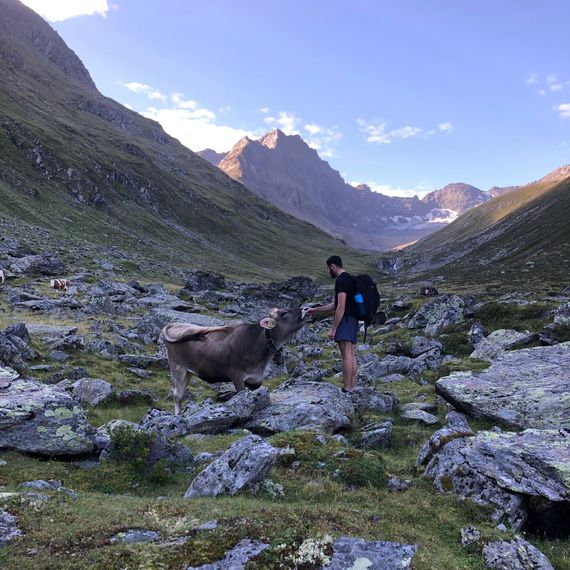
4 p.m.: Toast to your arrival at Westfalenhaus
Descending into the lush valley surrounding the Westfalenhaus hut was a scene straight out of The Sound of Music (and laying eyes on it after our day of hiking had me more excited than the von Trapp children reuniting with Maria). The two-story hut was renovated a couple of years ago and sleeps nearly double the number of guests as at Pforzheimer. All of the communal spaces — the dining hall, outdoor terrace, bathrooms, and gear room — are on the first floor, and the bedrooms are upstairs. Ours had a bunk bed and window overlooking the valley. After settling in, we toasted our arrival with a couple of half-liter pours of hefeweizen (a German wheat beer) on the terrace, which has panoramic views of the Stubai Alps.
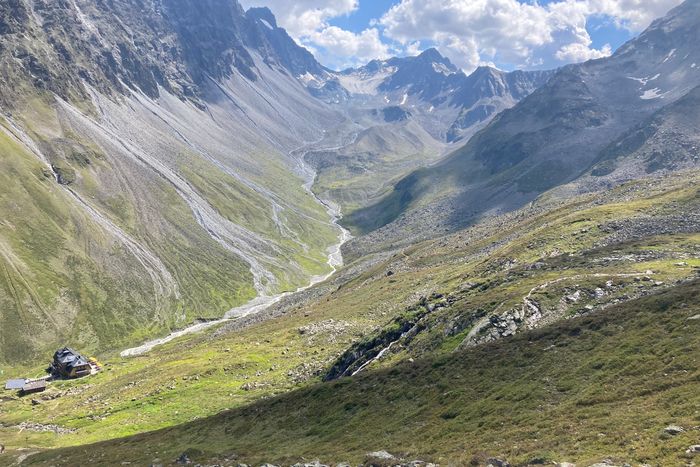
7 p.m.: Dine overlooking the Alps
Here, dinner service was a bit more casual, beginning at 7 p.m. with the option to choose your own seats. We cozied up in wool blankets and ate on the terrace, watching the sunset throughout the valley. The three-course meal consisted of potato soup with big, homemade croutons (my favorite food of the trip), followed by sweet potato curry for me and a pork dish for Jack. Since Westfalenhaus is a more remote hut, it serves fewer fresh vegetables (those that we ate were cooked from frozen), but the food tasted good nonetheless. Also, in an effort to reduce food waste, the portions are small, but you can always ask for seconds. Dessert, a highlight for us both, was Bavarian crème and berries.
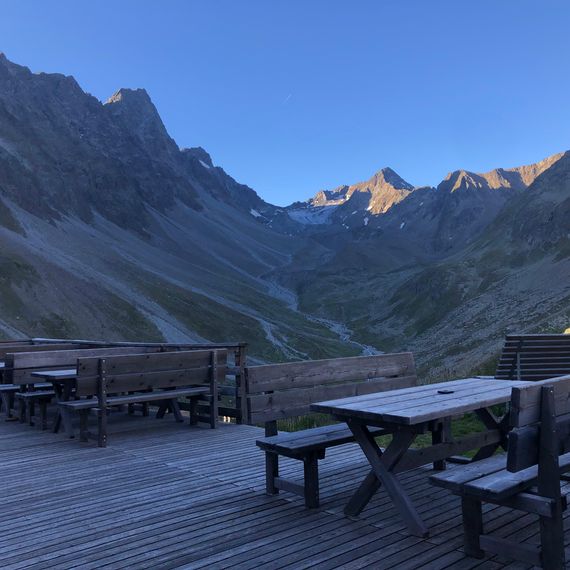
8 a.m.: Scramble up to a waterfall suspension bridge
Another early morning (6:30 a.m.) and breakfast buffet, this one with stand-out mini pretzel rolls in addition to all the typical fixings. We stayed at Westfalenhaus for two nights, so this day’s hike was sans backpacks — and it showed. All told, we covered eight miles and about 3,600 feet of total elevation gain (the most in any one day) in less time than the previous day’s hike. The bulk of that climbing was up to the Hängebrücke Horntal , a recently opened waterfall suspension bridge partway up the towering Lüsener Fernerkogel, known as “the Matterhorn of Tyrol.” Most of the hike was on a well-marked path next to a river, and up the mountainside, but toward the top, you have to scramble up some steep metal ladders and grab onto metal ropes. At the bridge, there are sweeping views of the valley, though I was preoccupied with the intense sound of the waterfall.
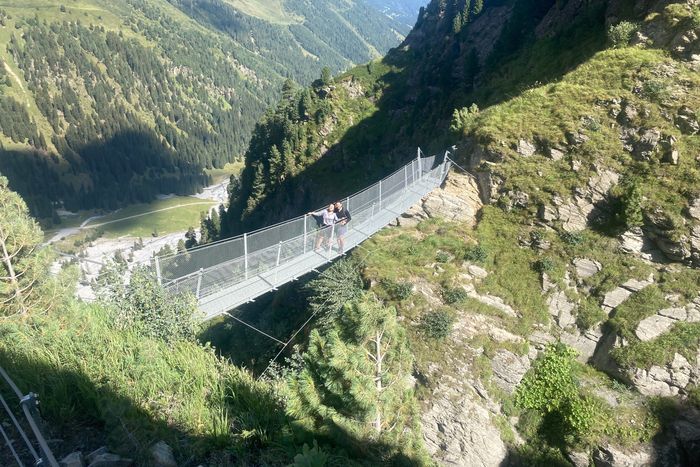
3 p.m.: Reward yourself with apple strudel
The loop back to Westfalenhaus took us through the Lüsener Valley, past educational posters about climate change–induced glacial retreat and many friendly animals. There was also a stretch of trail covered in raspberry bushes (which, after confirmation with an app on Jack’s phone, we ate from). There was plenty of time to hang out at the hut before dinner, so we drank beer, ate a hearty slice of apple strudel, and read on a reclining chair overlooking the valley.
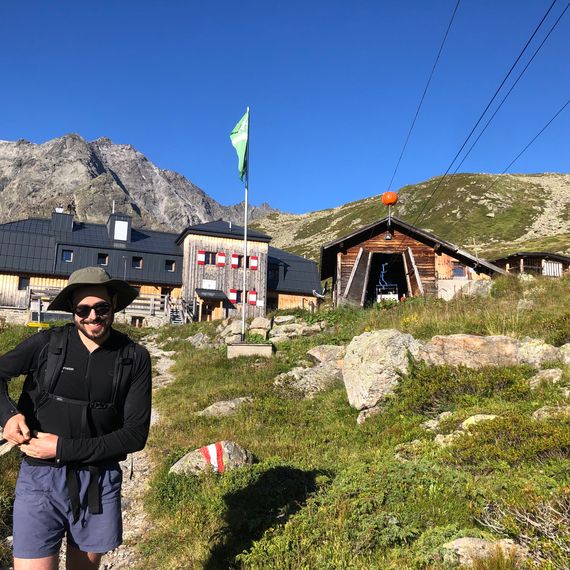
7 p.m.: Play dominoes during dinner
It’s typical for the Alpine huts to have a collection of books and games, seemingly amassed from many countries over the years. Very few were in English, so we opted for dominoes and played over the dinner of pumpkin soup and chicken (for Jack) or gnocchi (for me). Bavarian crème with berries was for dessert once again. Let the record show that I won the match.
10:45 a.m.: Nibble on cake after a hike into Praxmar
After breakfast, we bade farewell ( auf wiedersehen , good-bye!) to Westfalenhaus and set off on a three-hour hike into Praxmar, a small alpine village where we planned to stay the night. The four-mile route was almost entirely downhill and reminiscent of the Pacific Northwest, a welcome respite for these two West Coasters. Upon arrival, it was time for a second breakfast of berry–poppy seed cheesecake and Almdudler , a popular herbal Austrian soda.
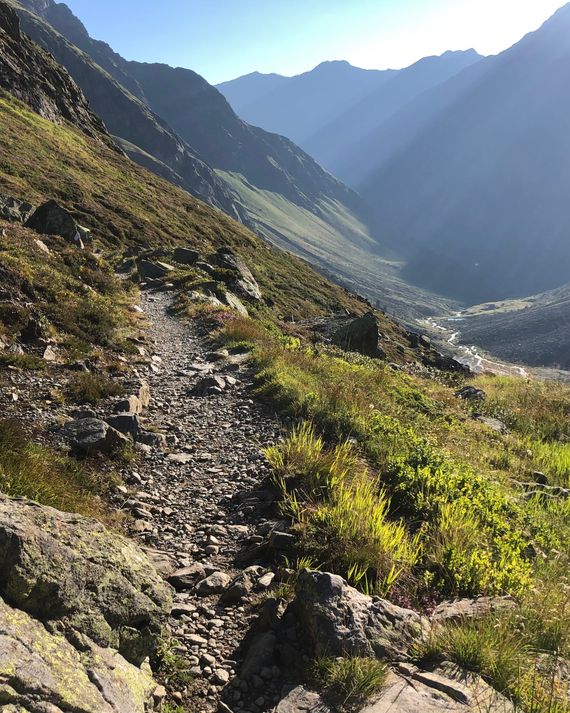
2 p.m.: Take a cold dip in the Bergersee
It was too early to check in to the guesthouse, so we swapped our backpacks for day packs and hiked to the Bergersee, a small alpine lake. Like the morning route, the short (three-mile) hike was mainly forested but this time entirely uphill. Also, the final stretch through the hillside is marked only by cairns, so I’d recommend downloading an offline trail map to steer you in the right direction. We got to the lake in the heat of the day and went for a quick skinny dip. With no one but a herd of goats to see us, I figured it was okay.
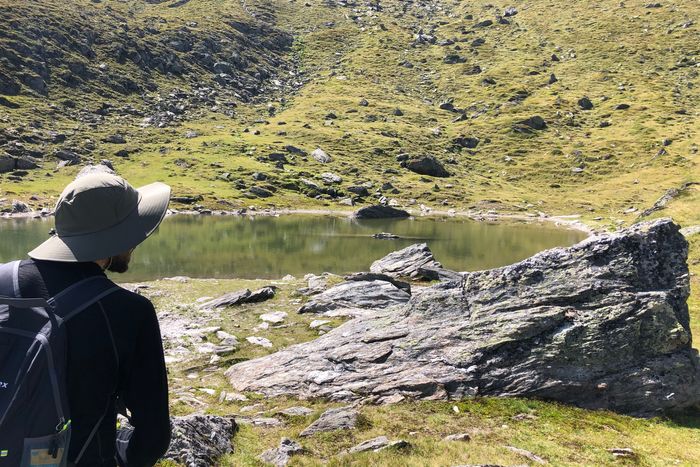
4:30 p.m.: Warm up with a 185-degree Finnish sauna
Not a true Alpine hut, the Alpengasthof Praxmar is accessible by car and bus and boasts traditional, hotel-like amenities — including TVs and towels in the rooms. Jack and I are big fans of a shvitz, so our favorite perk, by far, was the spa. Open daily from 4:30 to 6:30 p.m., the all-gender, clothing-optional spa boasts three different saunas — two dry heat and one infrared — plus a rainfall shower and reclining chairs. The bulk of our time was spent in the 185-degree Finnish sauna, which I single-handedly credit with alleviating my (at this point severe) leg pain.
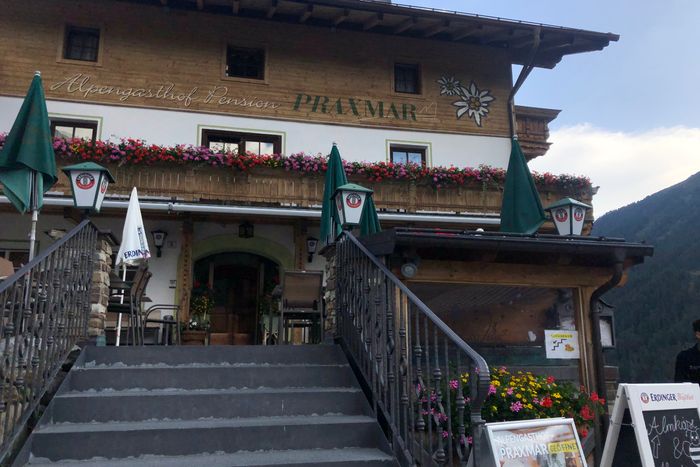
6:30 p.m.: Skip half-board and get the schnitzel
Jack and I each made one food-related mistake on our travels; his was booking half-board at the Praxmar guesthouse (mine comes later). The multicourse meal of boar carpaccio, fish, and veal was served in a white-tablecloth dining room full of taxidermied animals and felt a bit too formal for our taste (though the salad bar was very good). We both agreed that, given the opportunity to do it again, we would have just ordered schnitzel, dumplings, and fries from the à la carte menu.
7 a.m.: Hike to a mountain dairy
Another breakfast buffet, this one the most lavish of the trip, including assorted pastries, several kinds of yogurt, and a substantial spread of fresh fruits and vegetables. The first part of our hike (three almost entirely uphill miles) was to Juifenalm ( Juifen 1, 6181 ), a family-owned mountain dairy that doubles as a restaurant and guesthouse, not uncommon in the Alps. We stopped to drink beer and eat traditional Tyrolean food. The standouts were sauerkraut, a speckknödel dumpling, sausage, and graukase saur, pickled cheese topped with onions, olive oil, and vinegar.
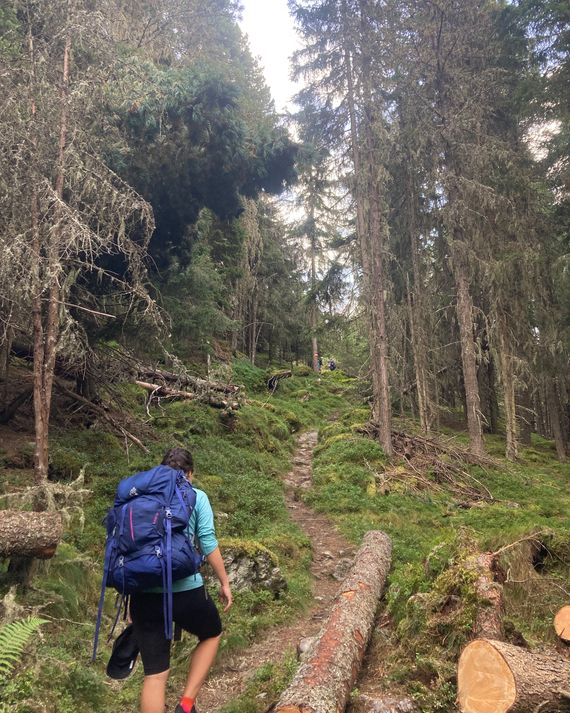
We covered the remaining 4.5 miles, which was almost entirely downhill through gentle fields, in 90 minutes and made it to the village of Gries im Sellrain to catch a 2:20 p.m. bus back to Innsbruck (the bus comes hourly, so if we’d missed it there were other options).
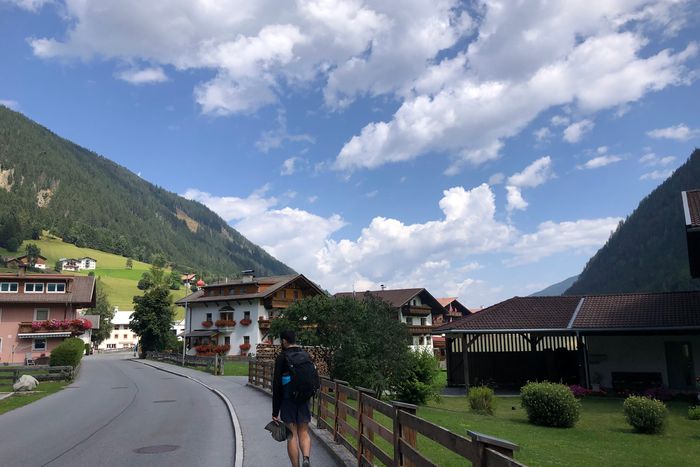
4 p.m.: Shower before the train to Vienna
Back in Innsbruck, I was ready to do whatever it took to shower before getting on a four-hour train ride to Vienna. As it turns out, all I had to do was ask a generous employee at Pension Stoi Guesthouse (where we stayed earlier and stashed a few bags during our hike), who, in response to my ask to use a shower, said, “It looks like you need it.” Jack and I were both nice and clean when we boarded our 6:30 p.m. train to Vienna.
11 p.m.: Snack on a sausage
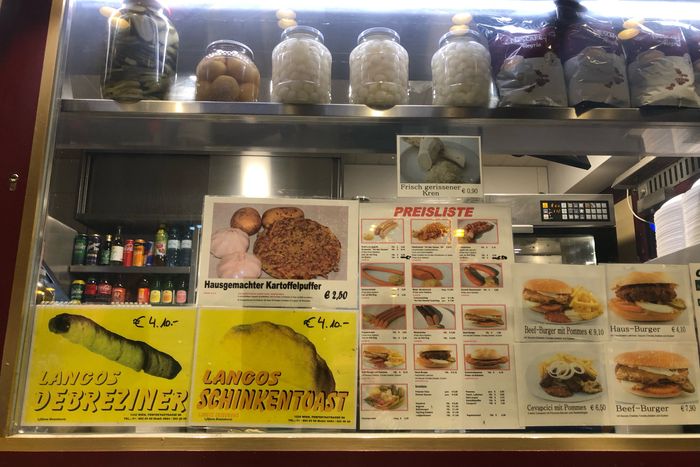
The train got us in late, but Würstelstand am Südtiroler Platz ( Wiedner Gürtel 3, 1040 Wien ), one of Vienna’s ubiquitous to-go sausage stands, was still open. We grabbed a kasekrainer (Austrian cheese-stuffed sausage), kartoffelpuffer (potato pancake), and pickles and walked the five minutes to our Airbnb . Knowing we were getting in so late, we chose this garden unit for its proximity to the central station. It abuts a city park and has all the amenities you’d need for a short stay (though it’s worth noting that the bathroom is in the private entryway hallway, not the apartment itself).
9 a.m.: Discover the city by foot
With only 48 hours in Vienna, we started the day early to take in the city by foot. Most of our morning was spent ambling in and around the Innere Stadt, known for its historic buildings and museums. Entry into these sites is ticketed (often well in advance), so we instead chose to admire the architecture from the outside. At Belvedere Palace Garden ( Prinz Eugen-Straße 27, 1030), we even found a tucked-away Louise Bourgeois Spider statue. It’s important to both of us to connect with our Jewish history when traveling, so we paid for entry to the Jewish Museum ( Dorotheergasse 11, 1010 ). Lunch was falafel at the Naschmarkt , an outdoor market with over 100 stalls. We bought spices and a slice of walnut baklava on our way out.
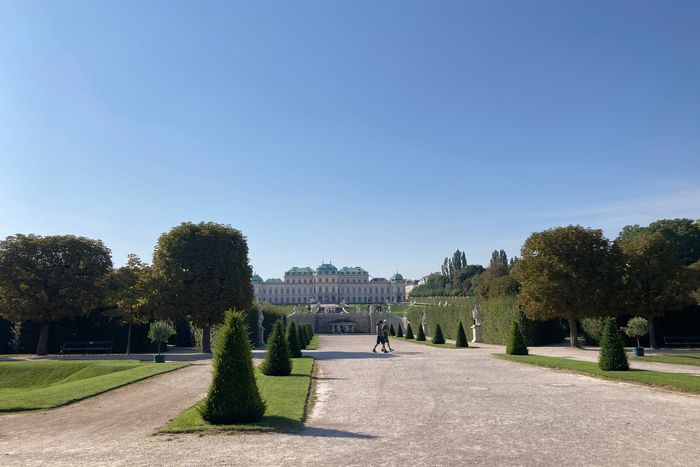
2 p.m.: Read at the Schönbrunn Palace
Another historic site where we made the most of the grounds, these being truly palatial (400 acres in all) and beautifully manicured. After walking through flower gardens and past giant fountains, we settled down in some grass to eat chocolate and read. I felt like a guest at one of the White Lotus palazzos.
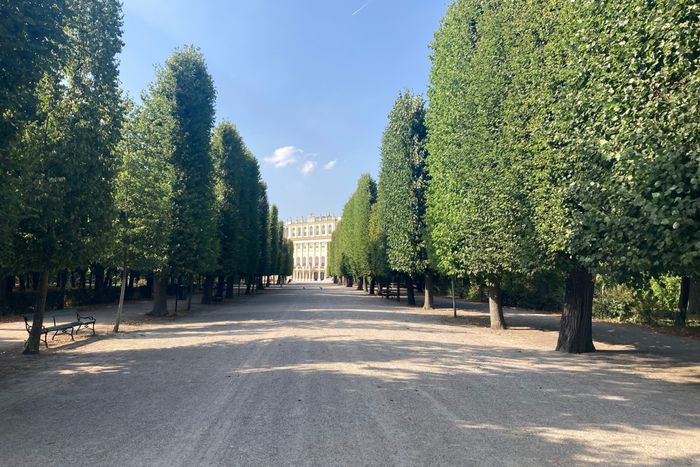
6 p.m.: Dine at a Viennese cafe (but don’t forget to make a reservation)
This is the part of the trip when I made my food mistake. I planned for us to eat dinner at Café Rüdigerhof ( Hamburgerstraße 20, 1050 ), a longtime Austrian cafe known for its schnitzel and cakes. However, I did not make a reservation, and unlike many of New York’s so-called impossible reservations, you actually cannot get seated without one. We managed to drink one beer in the cafe’s backyard and snack on some fries before a party came for their table. After three other unsuccessful attempts to walk into Viennese cafes, we ended up at a below-average Mexican restaurant. Learn from my mistake and call ahead.
10 a.m.: Go thrifting in Leopoldstadt
The second district, known as Leopoldstadt, was gentrified in the early aughts, shifting the once-working-class Jewish ghetto into a trendy neighborhood. It has plenty of cute cafes and street art (plus some kosher restaurants and grocery stores due to the community of religious Jews still living in the area). We went thrifting at a couple of local spots, including Humana ( Taborstraße 20A, 1020 ), which seems to be the Viennese equivalent of Beacon’s Closet. There, I bought a chunky brown cardigan. Our last stop in Leopoldstadt was the Karmelitermarkt, an outdoor market where we grabbed grapes and cucumbers from a produce stall and hefty döner bowls from a to-go spot called Ugis ( Karmelitermarkt 64, 1020 ).
1 p.m.: Lounge on the bank of the Danube
Swimming is popular along the entirety of the Danube, and many stretches are built up with private clubs (where you can pay a few euros for pools and showers) and sandy beaches. We went to Liegewiese am Arbeiterinnenstrand ( Arbeiterstrandbadstraße 89, 1210 ), a free beach on the north side of the river that’s more like a grassy lakefront. The crowd was mostly local families, some of whom made use of the beach’s grills. We spent a couple of hours alternating between swimming, eating, and lounging around.
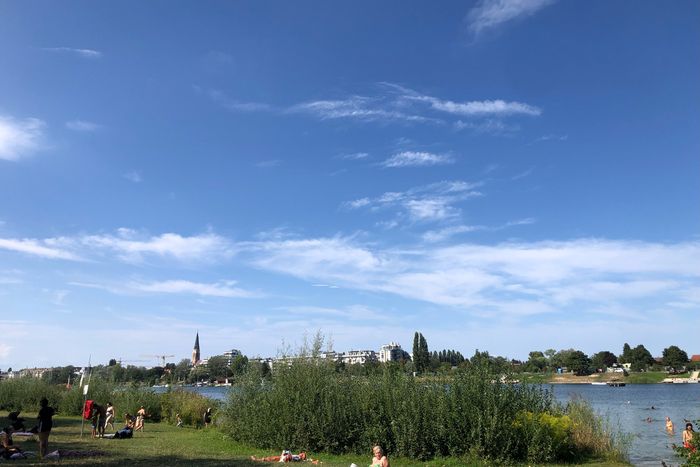
6 p.m.: Head to a winery for a farewell dinner
Within Vienna’s city limits are over two square miles of vineyards dotted with heurigen , wine taverns eponymously named after the “young wine” they serve fresh from the vine. The taverns are concentrated in a few different areas, including Nussdorf, a neighborhood at the end of the D tram about 40 minutes from the city center. At the recommendation of a friend, we went to Heuriger Schübel-Auer ( Kahlenberger Straße 22, 1190) and were seated in the leafy garden without a reservation (though I’d recommend making one on a weekend evening). We ordered a liter of white wine and sparking water, as is customary, and made spritzes to go along with Austrian snack food (cheese, meat, cucumber salad, roasted tomatoes), which is sold by the pound. Part of the appeal of Nussdorf is strolling through the hillside vineyards, but by the time we got around to this, it was more of a drunken amble. Still, we managed to catch sweeping views of the city and drink one more glass of wine — a final Viennese experience before sleeping for a few hours and heading to the airport for an early morning flight.
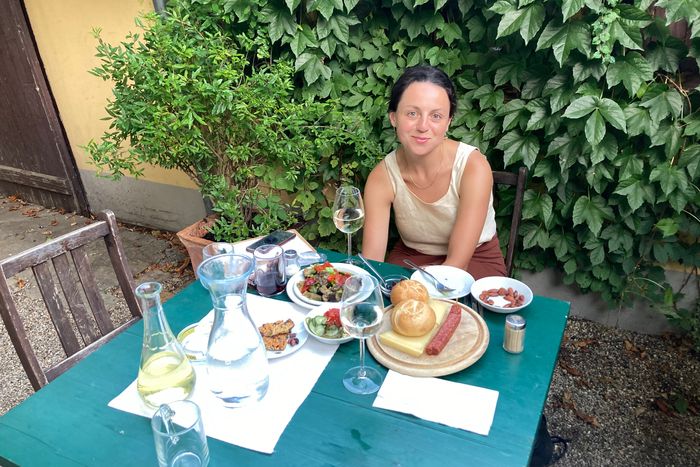
Kayla’s Europe packing list
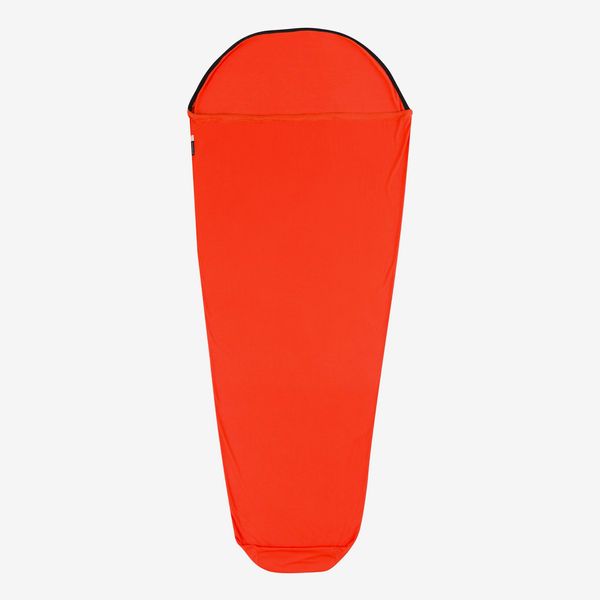
While the huts provide blankets and pillows, this bedding isn’t routinely washed, so guests are required to bring a “hut sleeping bag,” which is basically anything to put under the bedding. This liner, which I’ve used for years on camping trips, keeps you extra warm and weighs less than one pound (since you have to hike with all of your personal belongings, every ounce counts).
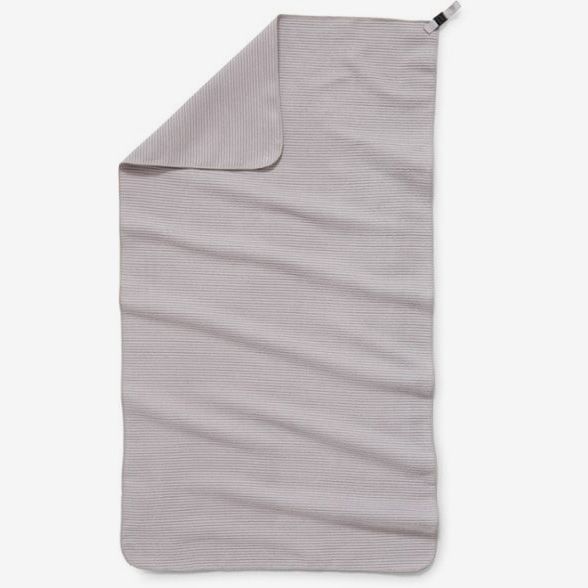
The huts also don’t provide hand or body towels. I got this one in college, and it’s held up on beach days and backpacking trips alike, but any microfiber, packable towel will do (though, if you want to splurge, Nomadix has some actually nice-looking, Dusen Dusen–esque prints).
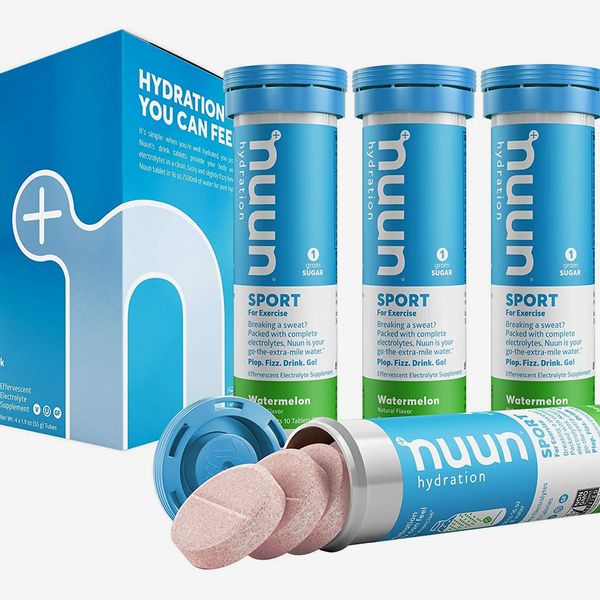
My first water bottle of the day was always filled with one of these tablets for extra hydration and energy. My other toiletry bag must-haves were Aleve, deodorant, and sunscreen.
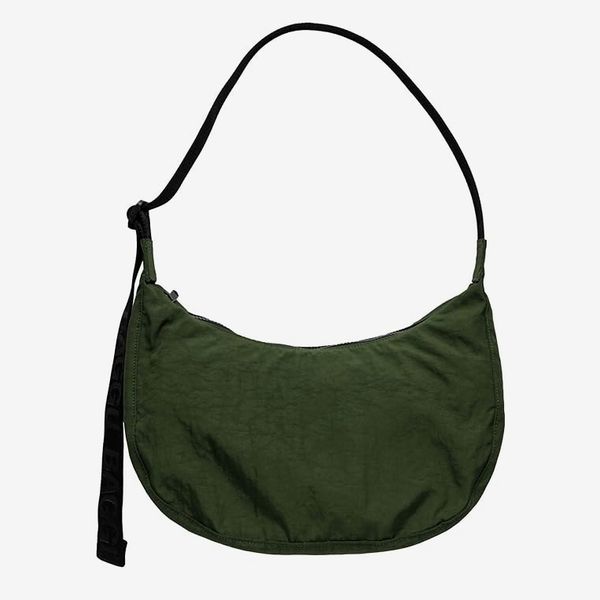
For the days when you’re walking around a city and need something to put a water bottle, book, disposable camera, and extra layer in. My go-to day bag is a small, vintage backpack from my mom, and Jack’s is a crossbody from a defunct California-based outdoor brand, but this bag (which I’ve coveted for a while) comes highly recommended by other travelers . If you plan to stash items in a hotel while on the trail, I’d also suggest bringing an ultralight tote or duffel (ours is from Osprey ).

An honorary mention from Jack, who is an extremely minimalist packer but doesn’t travel without this e-reader (my best birthday gift to him yet). We did have a lot of downtime to read (and no Wi-Fi or cell service), so this came in handy. I downloaded and read two full books on my phone but know that’s not everybody’s cup of tea.
Kayla’s Europe Wish List
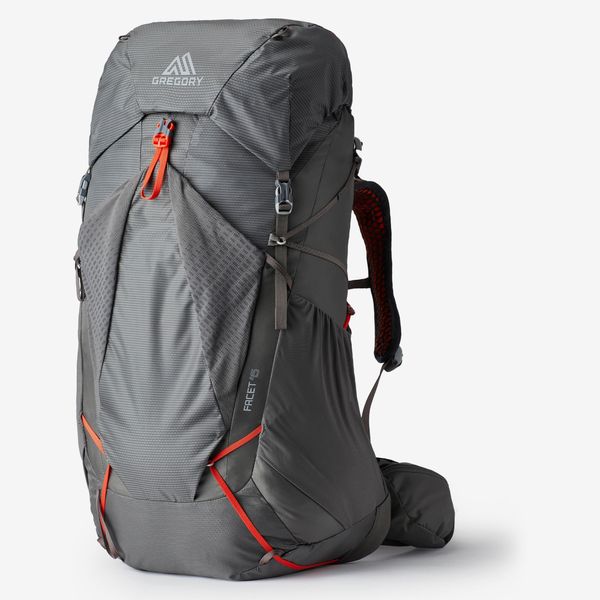
I’ve had the same Deva 60-liter capacity backpack for nearly a decade and can’t say enough good things about it (almost every part of the pack is adjustable, even to my 5-foot-2 frame, and the hip belt is padded). Unsurprisingly, it held up well on this trip, but if I were to do it again (and money was no object), I would spring for a smaller pack. Sixty liters is great for carrying a full load of backpacking gear, but something like this Facet 45-liter pack (which seems to have a lot of the same features as my bag) would suffice for hut-to-hut hiking. Jack was pleased with how his REI 40-liter pack held up, but I don’t like how much weight it puts on your shoulders.
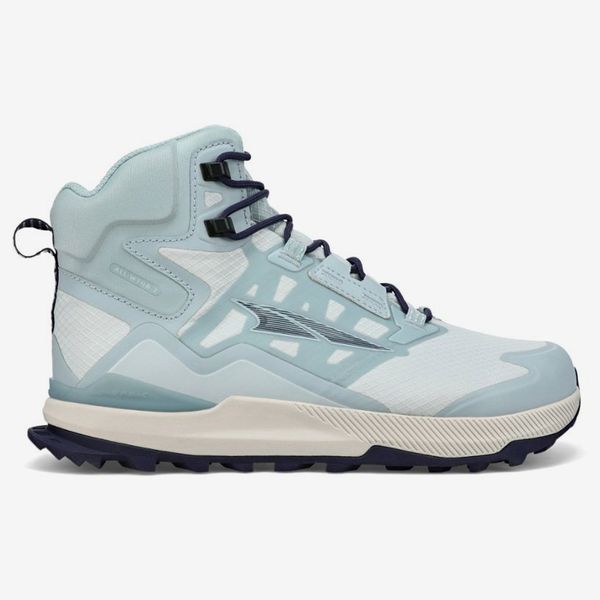
While I stand by my New Balance running shoes for almost all activities (I ran the New York City Marathon in them, for instance), I wouldn’t recommend them for alpine hiking. To put it simply, they lack sufficient traction and ankle support. At the very least, I’d recommend a pair of trail runners. Jack, for instance, wore the Saucony Peregrine 12 without complaint (though he has since mentioned the waterproof version may be better). If I had my pick, I’d choose a pair with more ankle support, like these expert-recommended boots from trail running brand Altra.
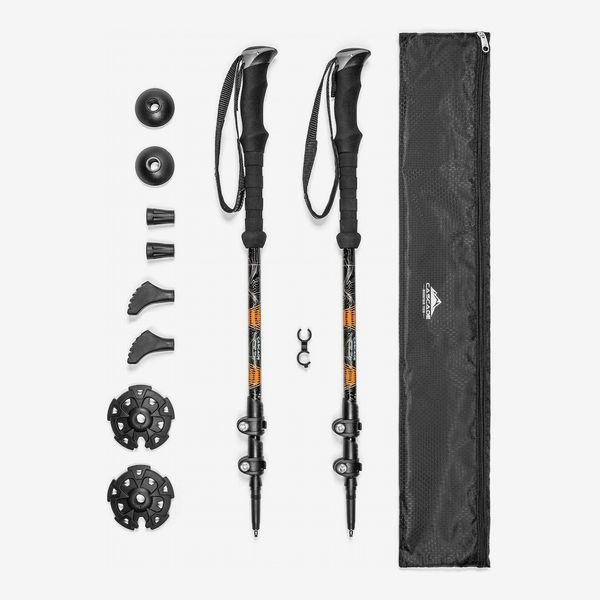
I read a lot of Reddit forums and blogs before this trip, and many suggested that hiking poles were not essential for hiking in the Alps. Let me tell you once and for all: If you are doing any alpine routes, you need a pair of hiking poles. As a beginner, I’d start off with a budget-friendly ( but vetted ) pair like these. Keep in mind that hiking poles are technically not allowed in a carry-on (though, if you believe what you read on Reddit, this rule is not always enforced).
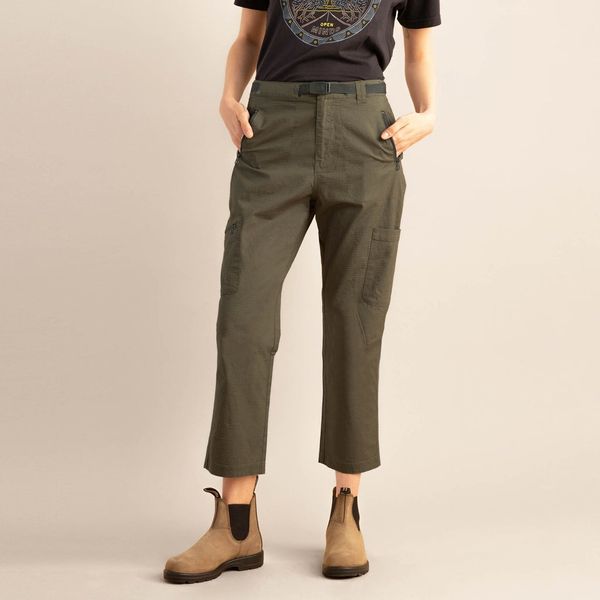
My Athleta leggings got the job done on the trail, but they aren’t a substitute for a pair of hiking pants. I genuinely love the look of this pair from Roark, which has several pockets and a built-in adjustable belt. For a more size-inclusive option, I recommend a cargo or pull-on version from Alder, where I’ve bought durable athletic gear before.
The Strategist is designed to surface the most useful, expert recommendations for things to buy across the vast e-commerce landscape. Some of our latest conquests include the best acne treatments , rolling luggage , pillows for side sleepers , natural anxiety remedies , and bath towels . We update links when possible, but note that deals can expire and all prices are subject to change.
- the strategist
- steal my vacation
Every product is independently selected by (obsessive) editors. Things you buy through our links may earn us a commission.
Deal of the Day
Micro sales, greatest hits, most viewed stories.
- All of My Friends Have These Trompe l’oeil Sweatpant Jeans
- The 13 Best Moisturizers for Mature Skin
- The 11 Very Best Shampoos
- I Only Packed One Outfit for My Weeklong Vacation
- 12 Things on Sale You’ll Actually Want to Buy: From Crocs to Madewell
- 43 Famous People on Their Favorite Travel Bags
Today’s Top Clicked
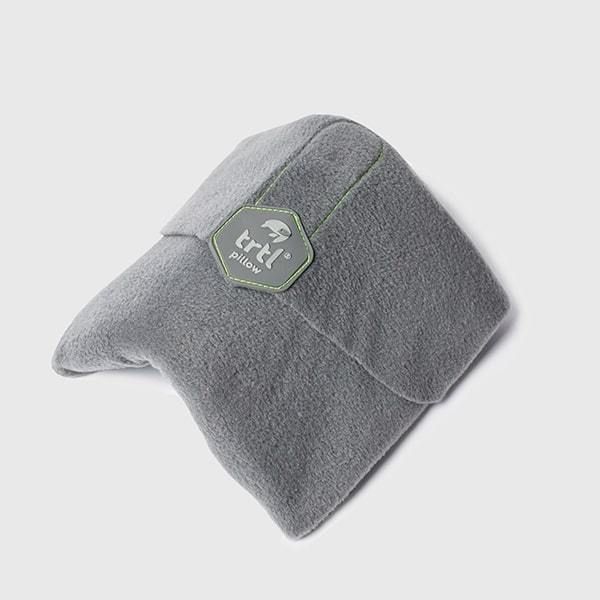
- Czech Republic
- Vegetarian Food

One Week in the Austrian Alps
I spent 9 days in the Austrian Alps just at the start of the fall – it was magical! It reminded me that the best holidays are the ones where you slow down, base yourself in one place, and try not to only check off “must-see’s” in big cities. I struggled to find a good itinerary for a week in Austria, so I hope that the one below helps you with your perfect one week in the Austrian Alps!
Choosing a place to stay:
The best way to do a one-week trip in the Austrian Alps is to choose one town, and stay there the entire time. This is so much more relaxing than lugging your bags around to a new place every other day! You can take day trips to other cities, and still have some time to relax and really make that town your home. Not to mention the little Alpine towns are a lot more adorable than the cities anyway!
We chose to stay in Zell Am See , a popular winter and summer destination. The town is set against the Austrian Alps, with the beautiful Lake Zell in the center, where you can go boating. It’s a perfect balance: a town with a population of only 10,000, yet popular enough with tourists that it’s not so quiet. I think it depends on the vibe you’re looking for. This was perfect for me! I wouldn’t have wanted to stay in a bigger city like Salzburg or Innsbruck which is swarming with tourists, or something too small and quaint where you can barely find coffee shops or activities to keep you occupied. Zell Am See was just the right amount of off-the-beaten-path!

Depending on what you’re looking for, here are some other options for towns to base yourself in:
Bigger towns : Salzburg, Innsbruck
Quaint, yet touristy : Hallstatt (absolutely gorgeous but perhaps not much to do beyond a day or two)
Small towns, off-the-beaten path (yet not completely remote) : Kitzbuhel, Alpbach, Saalbach-Hinterglemm, St. Gilgen, Kaprun (Zell Am See’s sister town)
Itinerary for One Week in the Austrian Alps
You can choose to edit this itinerary as you see fit. My itinerary included a mix of busy day trips and relaxing days in Zell Am See. You can certainly do more of one or the other, and I’ve included alternate options too!
Day 1: Settling in
Depending on the town you select, you will spend your first day driving in and settling down. Since we were staying in Zell Am See, the closest international airport was Munich. We rented a car, and drove the 2-hour distance to cross over into Austria. The rest of the day was spent unwinding, exploring the beautiful town, and planning out the next few days.
Day 2: Salzburg
Drive to Salzburg early in the morning. If you’re staying in one of the Alpine towns, this should be under 2 hours. You want to try and get there by 10am so you have a good chunk of the day to explore.

My favorite thing to do in any European city is to take a free walking tour. Unfortunately, outside of Vienna, this isn’t a thing in Austria! Can someone please capitalize on this idea and start a free walking tour company?! Since we only had about 8 hours to explore the city, we decided to be conventional tourists and pay 19 euros for a walking tour. Was it worth it? Perhaps not. But when you’re traveling with a family of 9, it’s hard to get everyone to move from one spot to the next so a tour is sometimes the best option. If you’re traveling in a smaller group though, I’d recommend picking out a few spots from below, walking around the city and soaking in its essence, while stopping at coffee shops and peeking into souvenir stores.
- Mirabel Gardens of Sound of Music fame
- Getreidegasse and Linzergasse (the cutest and most famous shopping streets)
- Hohensalzburg Castle – this castle sits on a fortress; take a funicular railway from just behind the Salzburg Cathedral and experience some spectacular city views
Avoid the Sound of Music tour – it’s just a tourist trap, and there are better ways to spend your time understanding and experiencing Salzburg!

Day 3: Grossglockner Alpine Road and relax in Zell Am See
This drive along the rocky mountainous landscape is considered one of the most scenic drives in Austria. While I didn’t necessarily think it was scenic (the terrain was pretty rocky), it was a thrilling ride. The roads are constantly winding and you get some spectacular views of the Alps (i.e. photo ops!). You end up at the top of the mountain and can choose to go up to an observatory deck, or simply pick up some food at the café. There aren’t any vegetarian options here except fries and steamed veggies, so don’t plan on having a meal here.

Since this drive won’t take you more than a few hours, you have plenty of time to go back home and relax. Enjoy the town you’re staying in. If you’re in Zell Am See, spend the afternoon renting a boat and paddling along Lake Zell. It’s one of the most stunning lakes I’ve ever seen (probably more than Lake Bled, which we went to later on the trip).


Day 4: Innsbruck
If you’re staying in the Alps, this is under 2 hours as well! Depending on the route you choose, you can opt to stop at the Swarovski Crystal World (20 minutes outside of Innsbruck). There’s a museum that costs 20 euros, and a gift shop that’s free to enter. If, like me, you’re not too keen on crystals – skip this and head straight to Innsbruck.
Spend your time in the Old Town, along the Inn River (you can even bike if it’s a nice day), and do some café-hopping.

Fun facts: while in Austria, you must try the Sacher Torte – arguably the world’s best chocolate cake. Sadly, it has egg so I can’t attest to the accuracy of this claim. What I can tell you though, is that there’s an original Sacher Café in Salzburg and Innsbruck, so definitely hit one up for an original Viennese coffeehouse culture (it’s one of the first coffee houses in Vienna) with plush red velvet chairs and bow-tied waiters. Here are some fun facts about this cake: the recipe (that was created in 1832) has 34 steps, but to keep the recipe a secret, chefs only work on a portion of it! The original recipe is kept in a safe, and very few people have ever seen the entire thing.

Day 5: Munich
We were lucky to be here during Oktoberfest, so it was a very different day from how you’d otherwise spend your time in Munich. If you’re visiting any of the other 50 weeks of the year, Munich is a great combination of culture, history, architecture and big-city vibes, with some great walking tours, biking options and offbeat experiences .

Day 6: Rest day – Zell Am See
After a few hectic days of driving and sightseeing, we really wanted to take a day off and enjoy the beauty of a small town. We spent the day wandering the streets of Zell Am See, and rented bikes to cycle around Lake Zell. There are a ton of bike rental spots – it’s best to stop by the concierge of Grand Hotel (right by the lake) and ask them for options. Different rental shops are open at different times of the year.

Day 7: Lake Bled, Slovenia
I was most excited about this day! We were driving a little under 3 hours to cross over to Slovenia – a country that had been high up on my bucket list for a while. Sadly, we only got to spend 5-6 hours here so I cannot wait to come back and explore the entire country.

Lake Bled is the first thing you think about when someone mentions Slovenia, right? You’ve probably seen those dreamy blue photos, with a castle sitting in the middle of a lake. Let me set your expectations a little bit. It did not take my breath away (I know, I was bummed too – I was really looking forward to it). I actually thought Lake Zell was more beautiful. However, the town of Bled was really cute and had we spent a night here, I can imagine enjoying exploring it.
If you’re short on time, you want to stroll around Lake Bled for a while. You also have to get up high to one of the vantage points for an iconic Lake Bled photo. If you’re traveling with older people, then it’s easiest to pay the 9 Euro entrance fee for Bled Castle, which offers some great views. If you’re looking for something a little more offbeat, less crowded, and cheaper, try one of the many hiking trails by the lake (which are all numbered). The most popular is #6 Ojstrica but there are many other options too .

Grab a meal at Pizzeria Rustika or Public & Vegan Kitchen . Everyone will tell you to have the famous Bled Cream Cake when you’re visiting – the best part about Public & Vegan Kitchen is they make a vegan version of this cake!
Final tip – if you’ve got some time, also try visiting the less popular, but equally charming Lake Bohinj. For more on Slovenia, check out my favorite bloggers, Bruised Passports .
Day 8: Hallstatt
Okay. Hands down – one of my favorite towns! I’ve visited a lot of European towns over the years, but Hallstatt really stands out. I had heard a lot about this tiny Austrian village, and it was every bit as charming.

With a population of only 800, Hallstatt is the oldest medieval village in Europe that’s still inhabited (7000 years compared to Rome’s 2000). It’s been given UNESCO World Heritage status, and attracts almost 10,000 tourists a day during the summers. Lucky for us – we visited in the fall, and while it certainly wasn’t empty, it wasn’t too crowded either. We could really experience the magic of the town for what it was.
There isn’t much to do here. Just walk around. The best tip I can give you is to take any one of the stairs leading up, and walk around there. Not many people venture up, and you’ll really have a piece of the town to yourself.

Rent a boat on Lake Hallstatt – there are many boat rentals along the lake, so find one with a short queue! Also check out the Bone House, which contains over 600 artistically decorated skulls. If you’re interested, you can take the funicular up to check out the world’s oldest salt mine. If you do, go to the Skywalk for some great views of Hallstatt. I preferred using my time to stroll around and explore the town instead.

Day 9: Zell Am See/Departure
Spend the last day relaxing in Zell Am See and packing up!
That’s it – my one-week itinerary for the Austrian Alps! If you have more time, you can add on the other towns I mentioned earlier. You can also drive to the Bavarian Alps! I’d love to hear from you if there are any Austrian towns you particularly loved and would recommend!

Share this:
- Click to share on Facebook (Opens in new window)
- Click to share on Twitter (Opens in new window)
- Click to share on Pinterest (Opens in new window)
- Click to email a link to a friend (Opens in new window)
- Click to share on WhatsApp (Opens in new window)
- Offbeat Experiences

A Vegetarian Culinary Journey Through Africa – South Africa & Zimbabwe
November 13, 2018
The Vegetarian Guide to San Francisco
June 3, 2019

LEAVE A COMMENT / Cancel Reply
Mapandmagnets.

Guide to the Alps in Austria – TOP attractions in Austrian Alps!
Going to the Austrian Alps for skiing or hiking in summer? Learn about top Austrian Alps towns and places to visit on your alpine holiday!
When you think of the Alps , your mind probably wanders to the French or Italian Alps ( the Dolomites ) and their well-known ski destinations. When booking your Alp ski trip, you may not consider Austria . However, the Austrian Alps cover a large proportion of Austria.
Looking for the best things to do in the Austrian Alps?
With so many beautiful landscapes , this comes as no surprise that most Austria’s favourite pastimes of hiking, skiing and snowboarding take place in this beautiful mountain region. From the best places to visit in Austria in summer to the top road trip Austrian Alps – we have covered them all!
So, should you add the Austrian Alps to your travel bucket list ? Read on to find out more! 🙂
Austrian Alps – car hire:
We have rented cars many times during holidays and we always used discovercars.com
Check out our guide to the best car rental companies in Austria or simply explore the options directly on discovercars.com if you need a car during a trip to Österreich.
Pssst… To us, the Austrian Alps are one of the top places to visit in Austria ! 😉
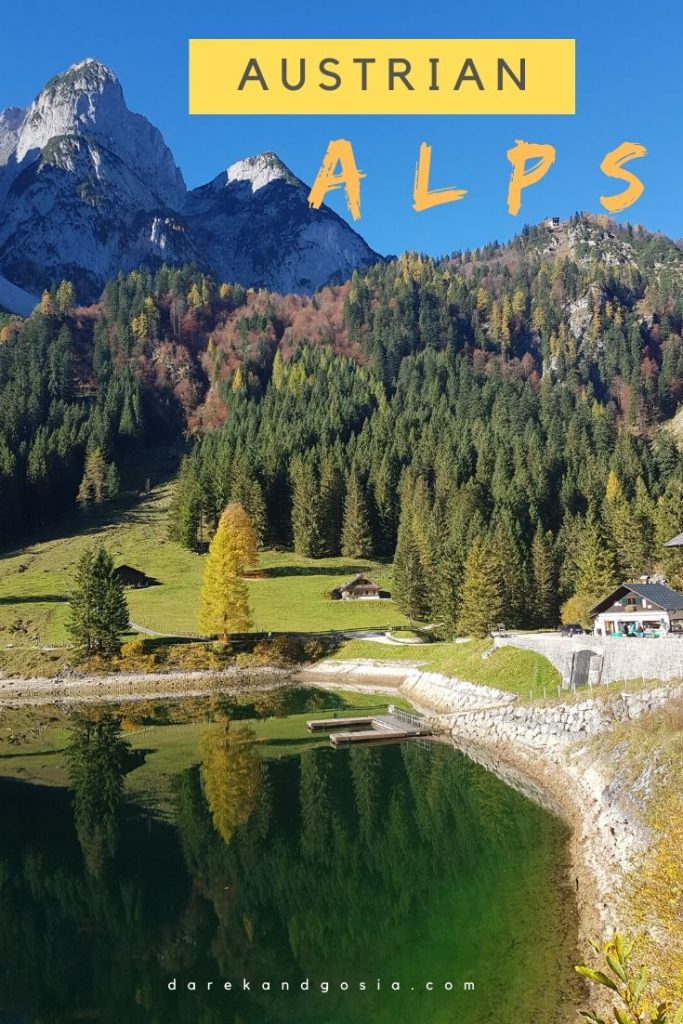
Where are the Austrian Alps?
Are you going to visit Austrian Alps? But where are the Alps in Austria? The Alps cover an incredible 80,000 square miles and feature in eleven countries. However, arguably only Austria and Switzerland can be considered truly ‘alpine’.
The Austrian Alps covers around 62% of Austria’s total area and Austria has the most significant total area of the Alps with a 28.7% share. The area of the Austrian Alps is also known as the Central Eastern Alps.
The Austrian Alps cover the south-westerly area of Austria and stretches east as far as Graz and north-east but stop just short of Vienna.
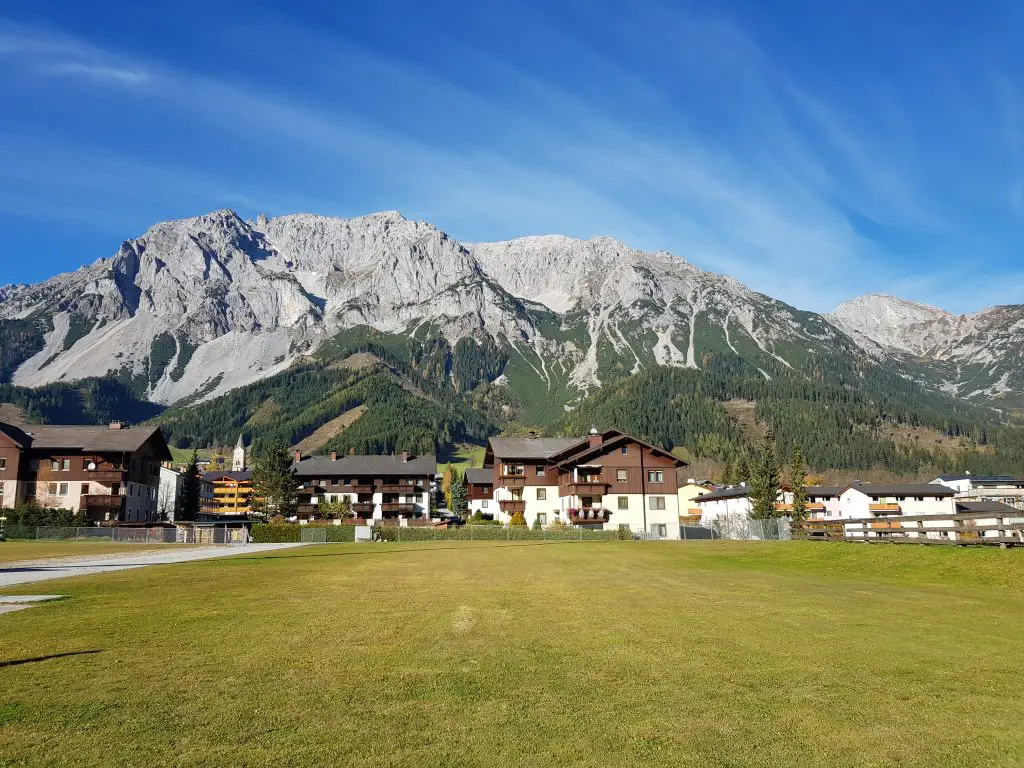
How were the Austrian Alps formed?
Incredibly, the Alps first began their formation 220 million years ago when the continental crust Pangea split to form two continents, known as Laurasia and Gondwanaland, complete with the Tethys sea in the middle.
Then, 135 million years ago, a slip-strike fault between plates occurred which create a wedge while the sedimentary rocks from the base were subducted back into the earth’s mantle.
Thirty-four million years ago, the tectonic plates of Africa and Europe pushed against each other, pushing the rocks up. The plate movement created a fold which caused the creation of the Alps mountain range, with a fold that reached up to 4000m high.
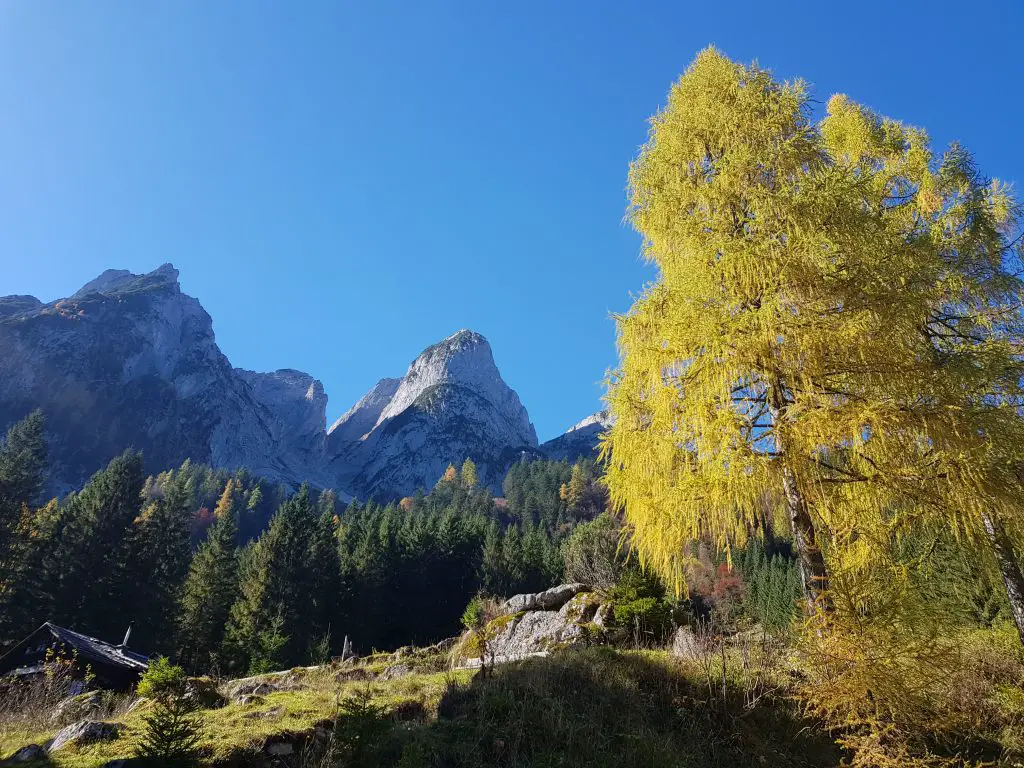
How tall are the Alps in Austria?
The tallest part of the Alps in Austria is the Grossglockner Mountain. The Grossglockner stands at 12,461 feet or 3798 metres tall. It is followed closely by Wildspitze, which is 3770 metres high and Weisskugel which is 3739 metres tall.
There are over 150 mountain summits in Austria that are over 3150 metres. However, Grossglockner is the highest point in the Austrian Alps and the whole of Austria itself.
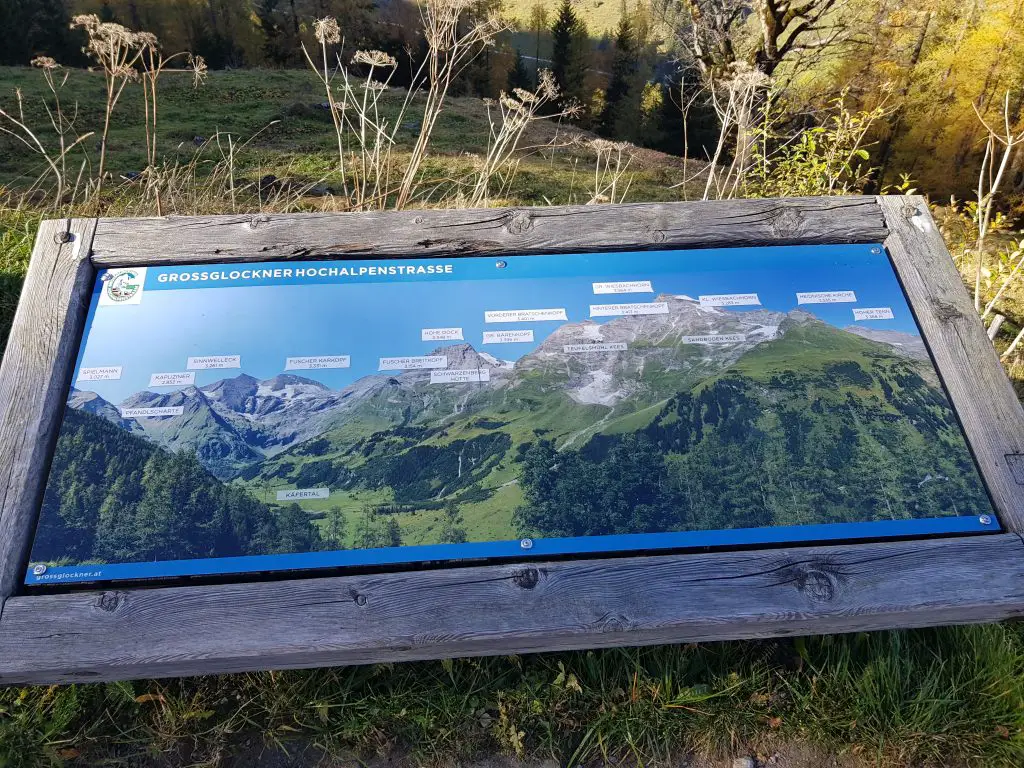
How to get to the Austrian Alps?
The austrian alps from salzburg:.
As Salzburg is perched on the edge of the Alps, you can enjoy truly breath-taking mountain views from the city. While public transport is an excellent option in Salzburg, if you want to have day trips to the mountains, it is well worth using a car.
You can also get the bus to places such as Berchtesgaden and Konigsee, which are great for access to the mountains. There is also a train service to Zell am See.
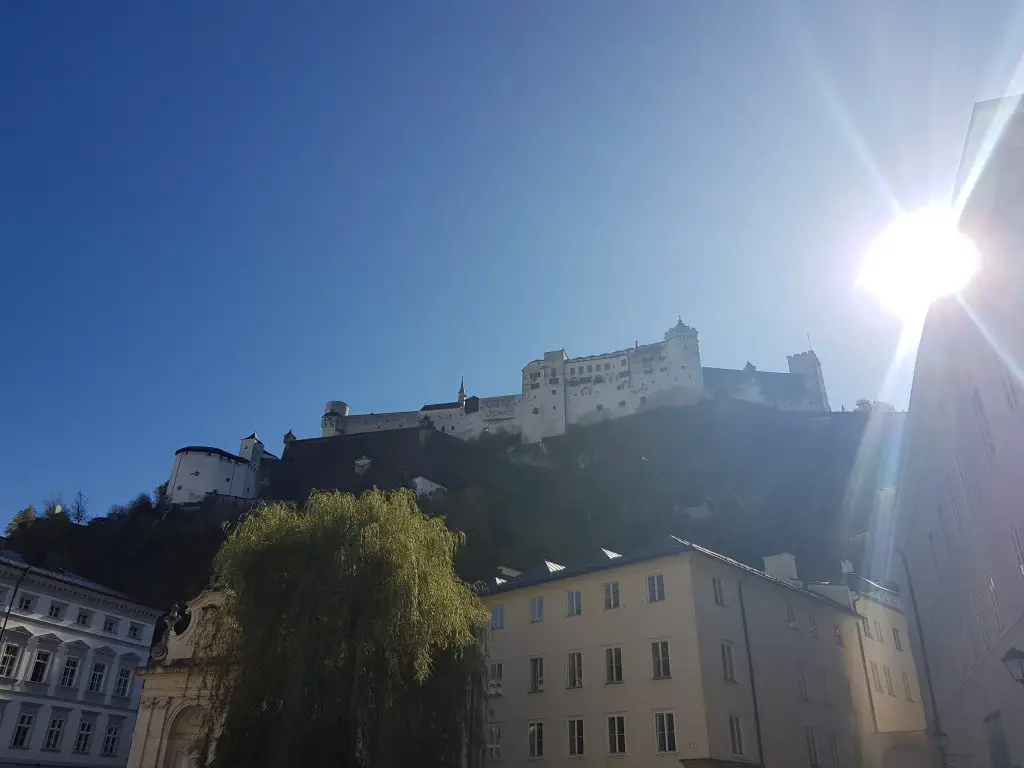
Read also: Best Weekend Getaways in Europe – Where are you off this Weekend?
The Austrian Alps from Innsbruck:
Innsbruck is known as the capital of the Alps, so is a great location to get to know the heart of the Alps. At the city outskirts, you can reach the mountain ski slopes of the Alps by cable car.
If you like hiking, in the centre of Innsbruck there is the Patscherkofel Cable Car which can take you to the mountain trails.
The Austrian Alps from Germany:
If you want to travel via public transport, there are several trains you can get to Alpine cities in Austria.
As the Alps cover such a large proportion of Austria, it is best to work out precisely where you want to visit and then to look for rail, road and air links to get to the nearest big Austrian town or city from Germany.
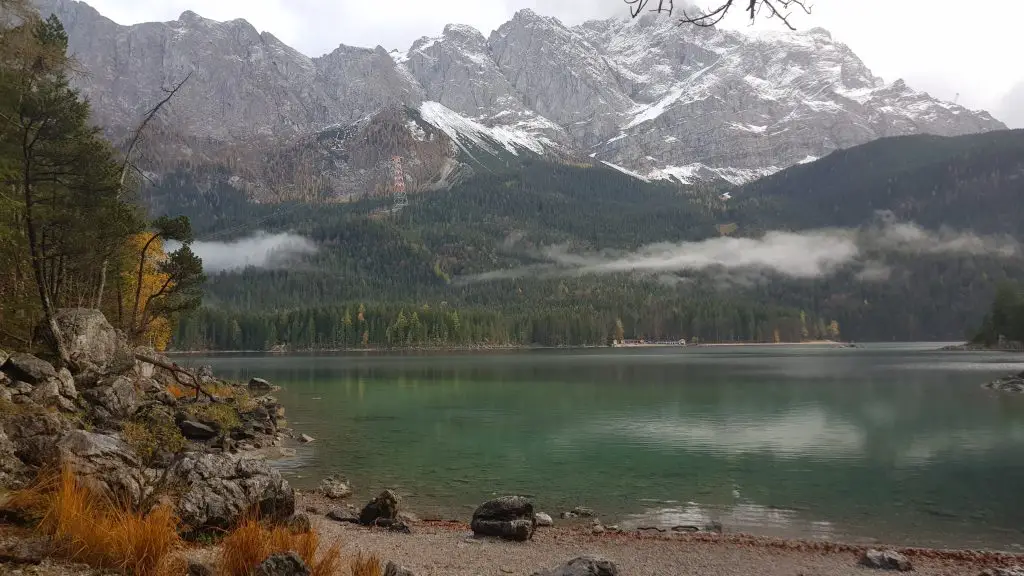
Read also: 4 days in Garmisch-Partenkirchen, Germany – Best Things to do in GaPa
Can you see the Alps from Vienna?
While the Alps do not quite reach into Vienna, from certain parts of the city outskirts, you can see the Alps although it may not provide a truly Alpine experience.
However, to experience the Alps in all their glory from Vienna you can take a day trip into the mountains.
Schneeberg, Simmering and Rax are all Alpine mountain resorts you can visit on a day trip or weekend trip from Vienna as they are all within an 80km radius from the city.
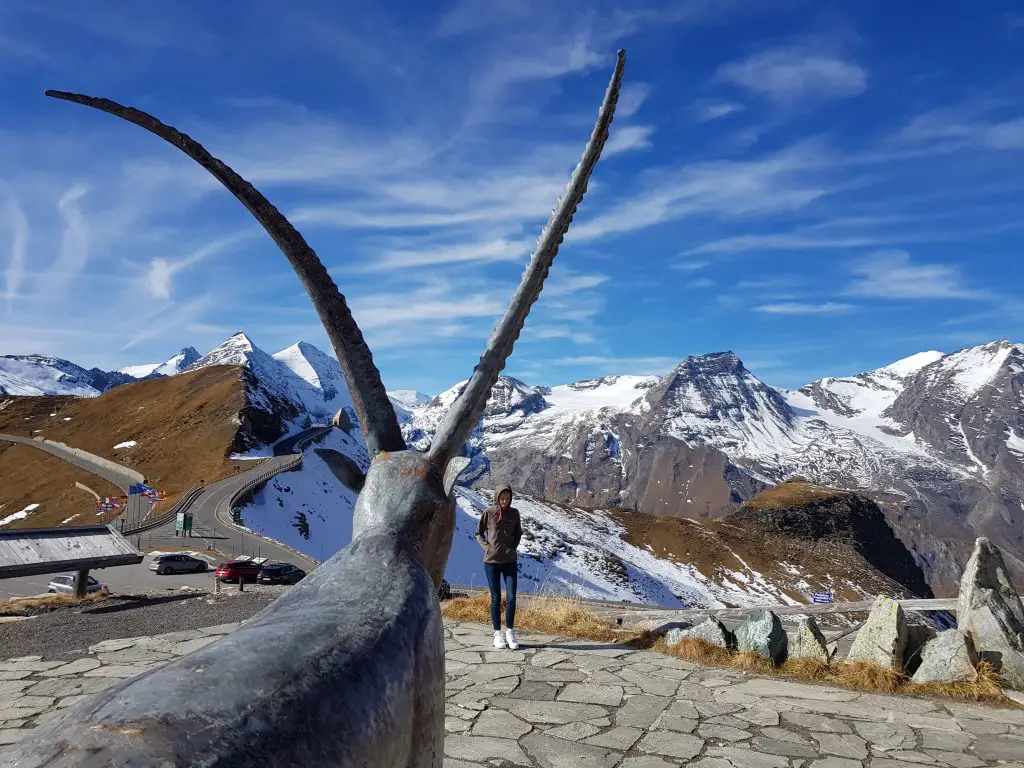
How to get around in the Alps?
For flexibility and ease of exploring as much of the Alps as possible, a car is usually the best mode of transport. However, if you prefer public transport, then the train network in Austria is excellent and enables you to access different parts of the Alps with ease.
Furthermore, you’ll be able to enjoy the beautiful views of the mountains from the comfort of your train carriage.
All of the major cities in Austria have airports too such as Linz, Graz, Innsbruck and Salzburg, which make it easy to explore as much of Alps as possible.
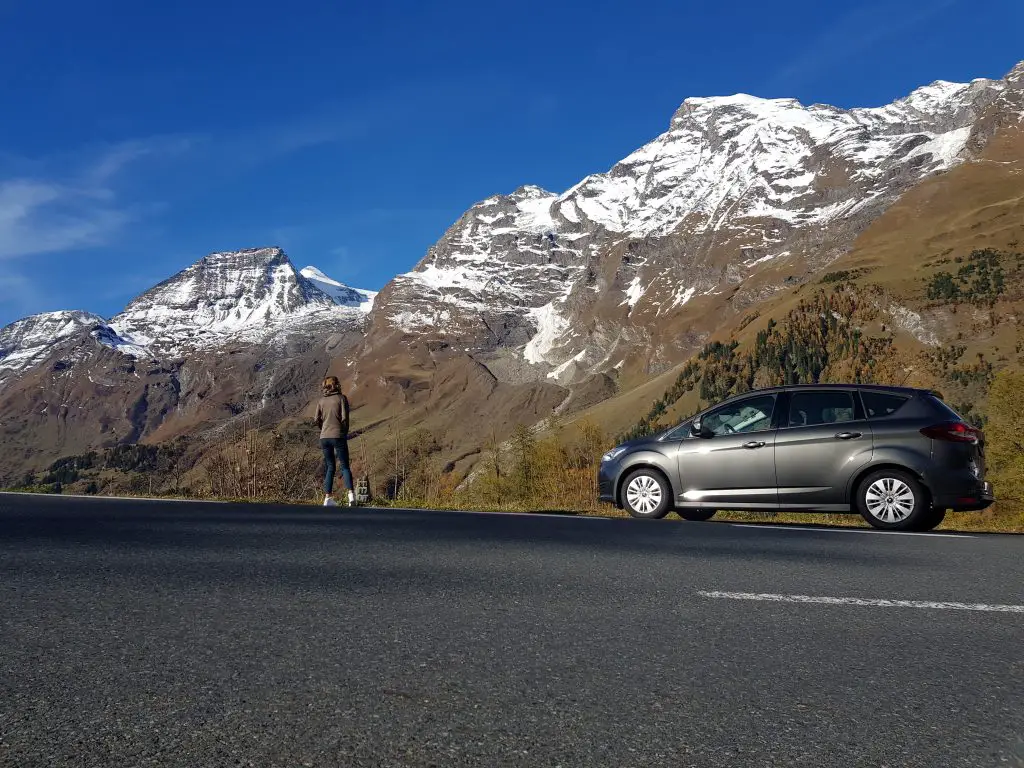
Is it worth visiting the Austrian Alps in summer?
Absolutely! There are many things to do in the Alps in summer. Unless you want to visit the Austrian Alps specifically to ski, then there are lots of reasons to visit the Austrian Alps in the summer.
Summer in Austria generally brings lovely weather with an average temperature of 25oC, with plenty of blue skies, sunshine and crisp mountain air. In spring and summer, you’ll see the beautiful Alpine flowers begin to show, and the whole area looks green and lush.
The summer activities in the Austrian Alps include sightseeing of the beautiful towns and Alpine villages. For more adventure, there is plenty of cycling, hiking, mountain climbing, mountain biking as well as horse riding, paragliding and ziplining. The Austrian lakes are also home to many activities from SUP to swimming, water skiing and wakeboarding.
Whether you want to relax in a spa while enjoying the view or are fuelling your adrenaline junkie side, the Austrian Alps in the summer have something for everyone.
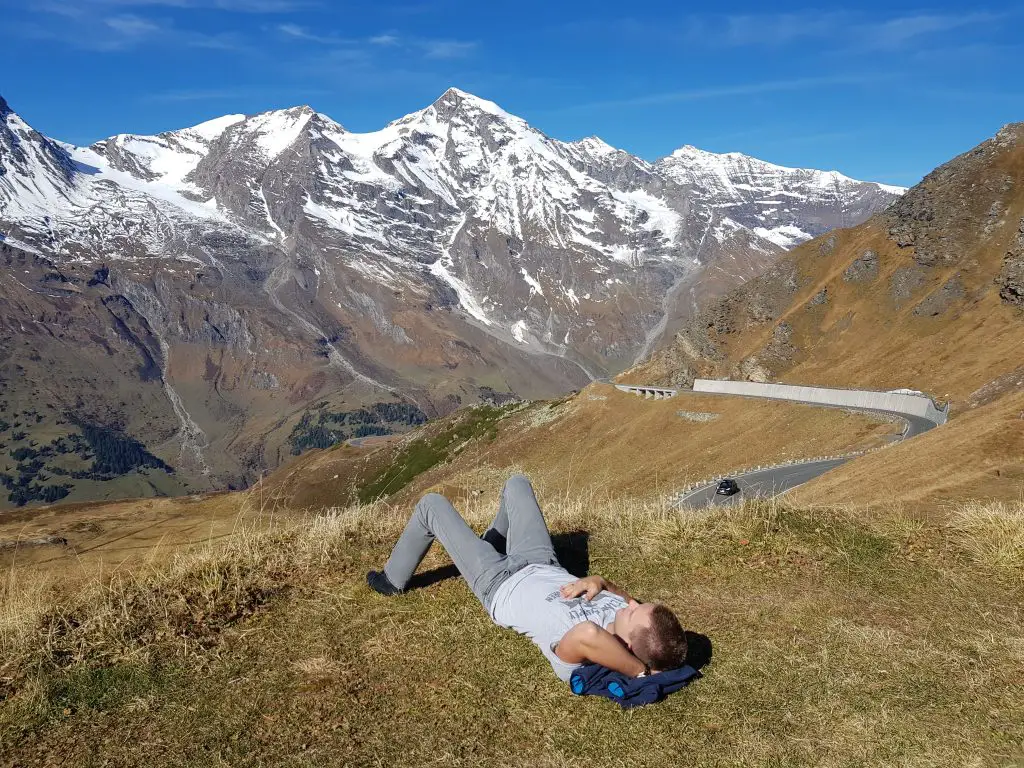
Where to go in the Austrian Alps for ski?
Where to stay in Austrian Alps? Filzmoos is a pretty mountain village in the state of Salzburg. It offers a compact ski resort which means it is ideal for families, and there are plenty of slope options that serve beginners and children right through to the advanced skier.
There is also a 16km cross country ski run too. The beauty of Filzmoos is the ski runs right back into the resort for total convenience. Top Austrian Alps skiing destination!
The village has many luxury hotels to unwind in as well as lots of restaurants to enjoy gastronomic delights.
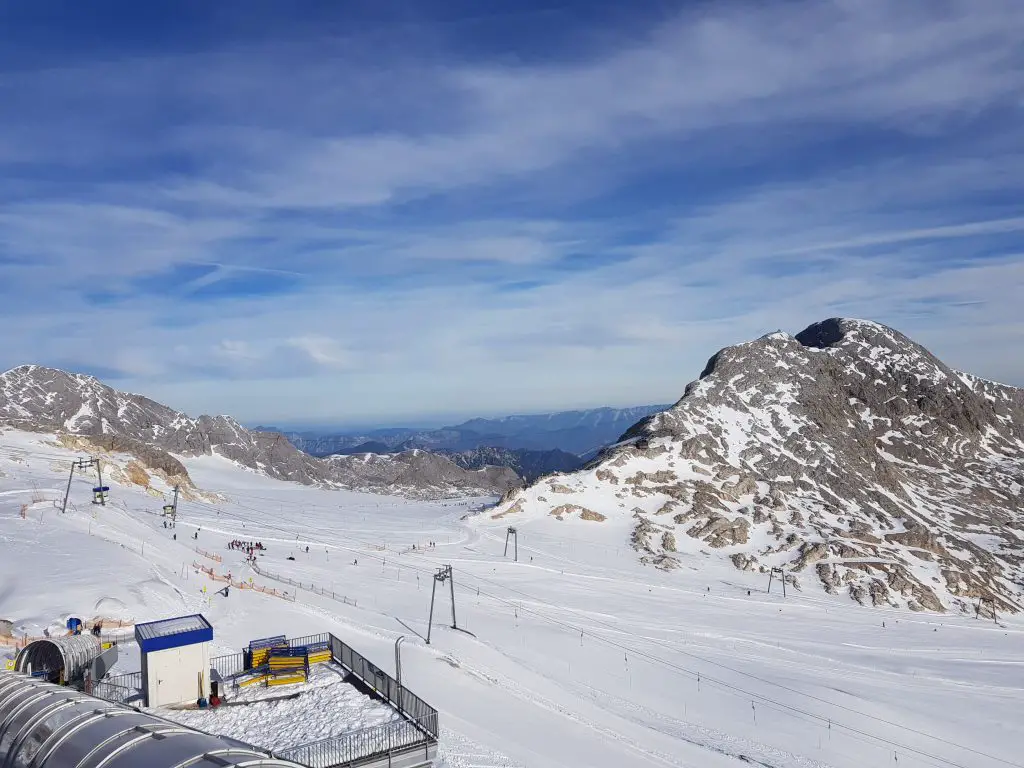
Best Alps towns? In the state of Tyrol and the Tyrolean Alps, St Anton is the perfect place for ski and relaxation. St Anton is regularly rated as one of the top ski resorts in the Alps with over 200km of off-piste routes and 340km of slopes. The town is bustling with luxury chalets, hotels and fine dining.
With the challenge of the slopes, St Anton is best for intermediate and advanced skiers. However, there are some nursery slopes at the base too.
Best places to visit in the Alps in summer? Alpbach is in the Tyrol state and is regularly voted as the most beautiful Alpine village thanks to the beautiful flowers of the region and the typical Alpine architecture.
There are three ski lifts in Alpbach which covers 145km on ski runs. There are also 20km of cross-country ski trails. Other winter activities in Alpbach include tobogganing, winter hiking and paragliding – top Alps tourist attractions!
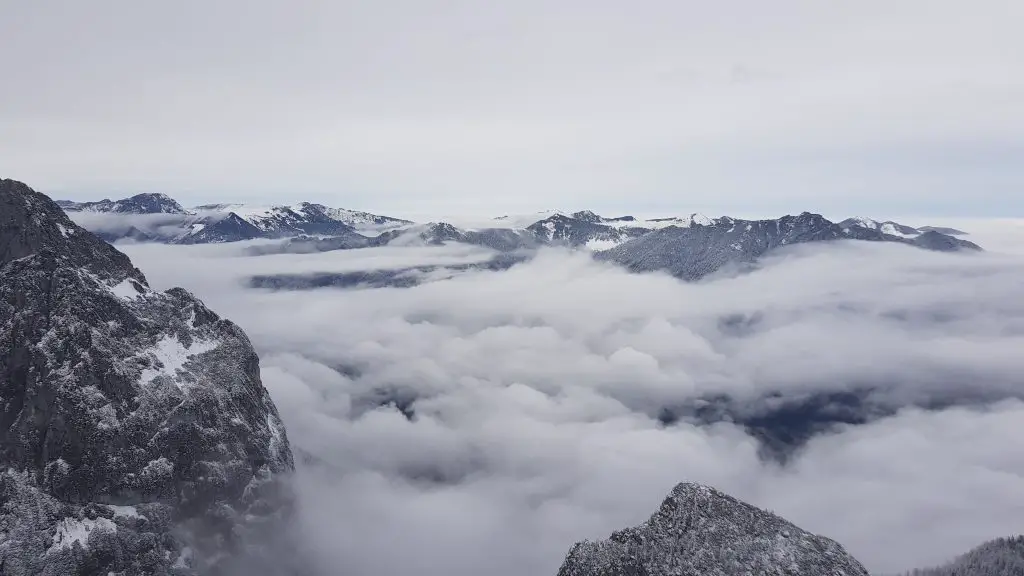
Looking for luxury hotels Austrian Alps? Perched on the banks of the river Lech, the mountain village resort is in the Austrian state of Vorarlberg. It is a popular resort for royalty and celebrities thanks to the luxury hotels and chalets available as well as the many gastronomic delights. However, the biggest draw for Lech is the ski terrain which suits intermediates and above complete with lots of exciting variations on the slopes.
Lech shares its resort with the nearby village of Zürs, so connections across the ski area are perfect which is ideal if you want to explore the whole Arlberg ski region and the 305km of pistes it has to offer.
Top things to do in the Austrian Alps:
Walking and hiking.
Best activities to do in the Alps? The Austrian Alps are home to truly magnificent scenery, and there is no better way to explore the Alps than through roaming across the many trekking trails or hiking up to the top of the mountain peaks. The Austrian Alps are one of the best places to hike in Europe !
From comfortable lakeside walks to mountain climbs there is something for every hiking style and ability. One of the most popular trails in the Austrian Alps is the Eagle Walk; a long-distance trail covering 413km over the heart of the beautiful Alps. This makes for a great walking holiday.
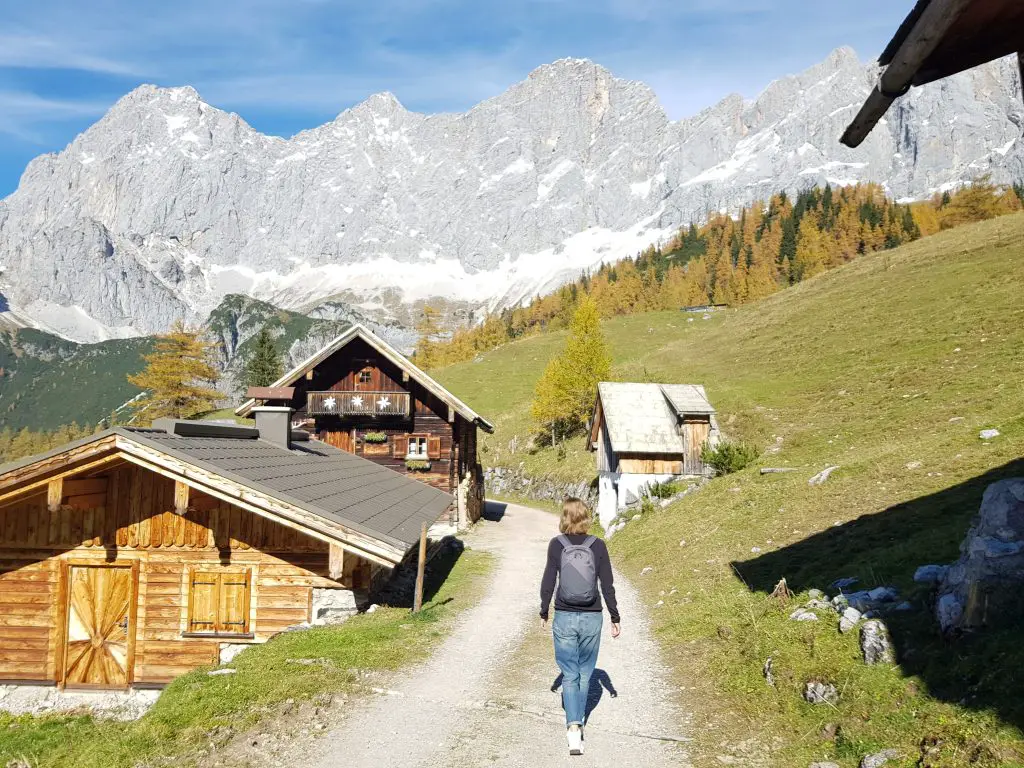
How to find the best places to visit in Austrian Alps? Austrians love their cars, and with incredible roads that traverse through the Austrian mountains, it is easy to see why. Of course, driving is dangerous in the winter due to icy conditions and avalanches. However, a road trip in the summer through the Austrian Alps is an unforgettable experience.
The Grossglockner High Alpine Road is a must for the bucket list as it’s one of the most scenic road trips in Europe ! It offers sensational views and covers 48km with altitudes reaching 2500m. On the route, you’ll have information points, viewpoints and exhibitions.
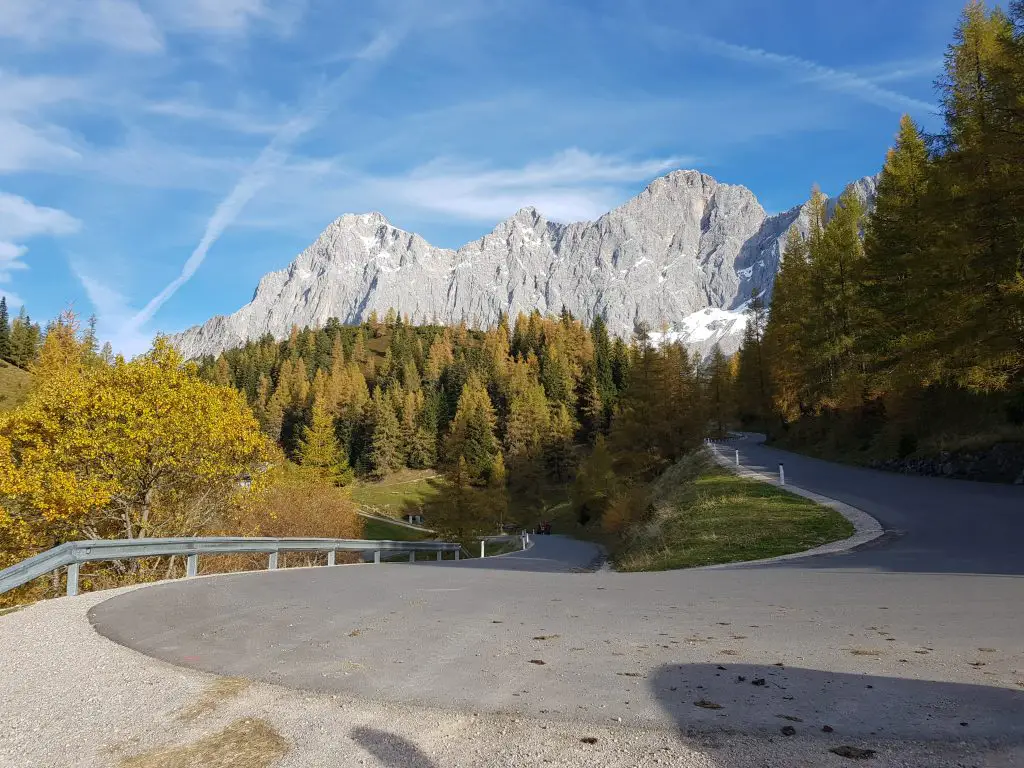
Visiting fairy-tale towns
Looking for the best towns to visit in Austria Alsp? The Austrian Alps are home to so many enchanting fairy-tale towns and villages that are impossible not to fall in love with. For example, there is Kitzbugel which is a small mediaeval town that looks straight out of a fairy-tale complete with a stunning Alpine Flower Garden in summer.
Similarly, Feldkirch offers fairy-tale charm with its dazzling turquoise river and beautifully lush mountain backdrop and a town full of beautiful and narrow cobbled streets.
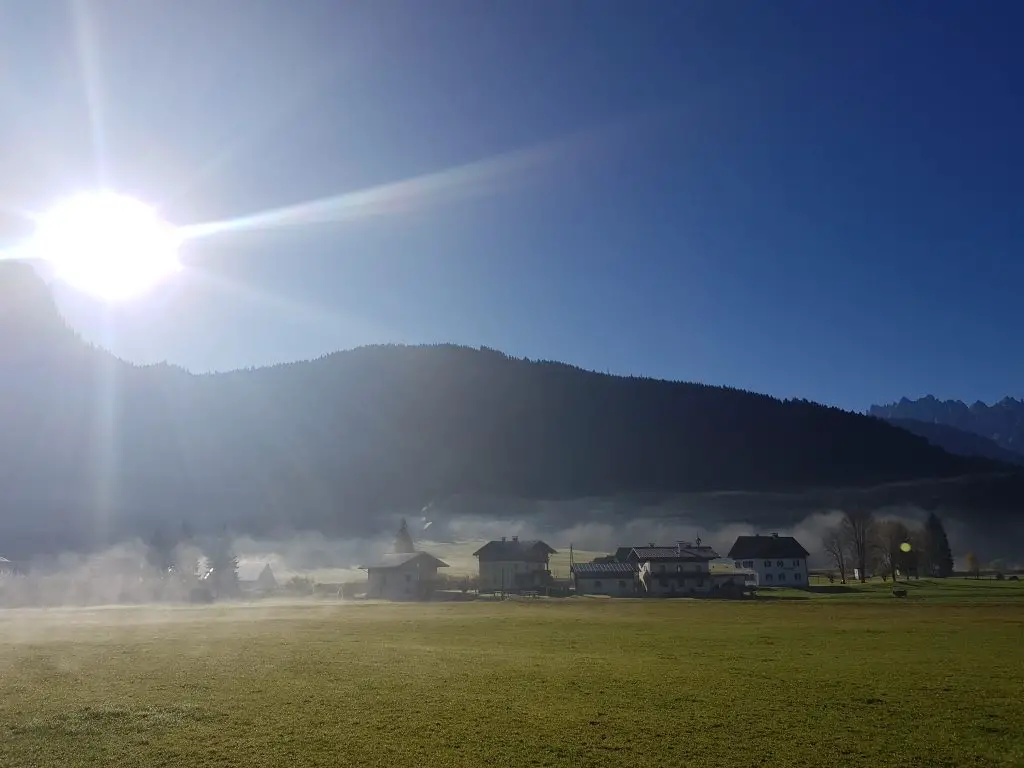
Austrian Alps top towns to visit:
There are many great places to visit in the Alps. As the fourth largest city in Austria, Salzburg has plenty to see and do. Most notably the 11 th -century Fortress Hohensalzburg which perches high above the city or the charming Mirabell Palace which features beautifully manicured 17 th -century gardens.
There is also the magnificent Salzburg Cathedral and the Schloss Hellbrunn castle, which makes the city a perfect place for a weekend getaway !
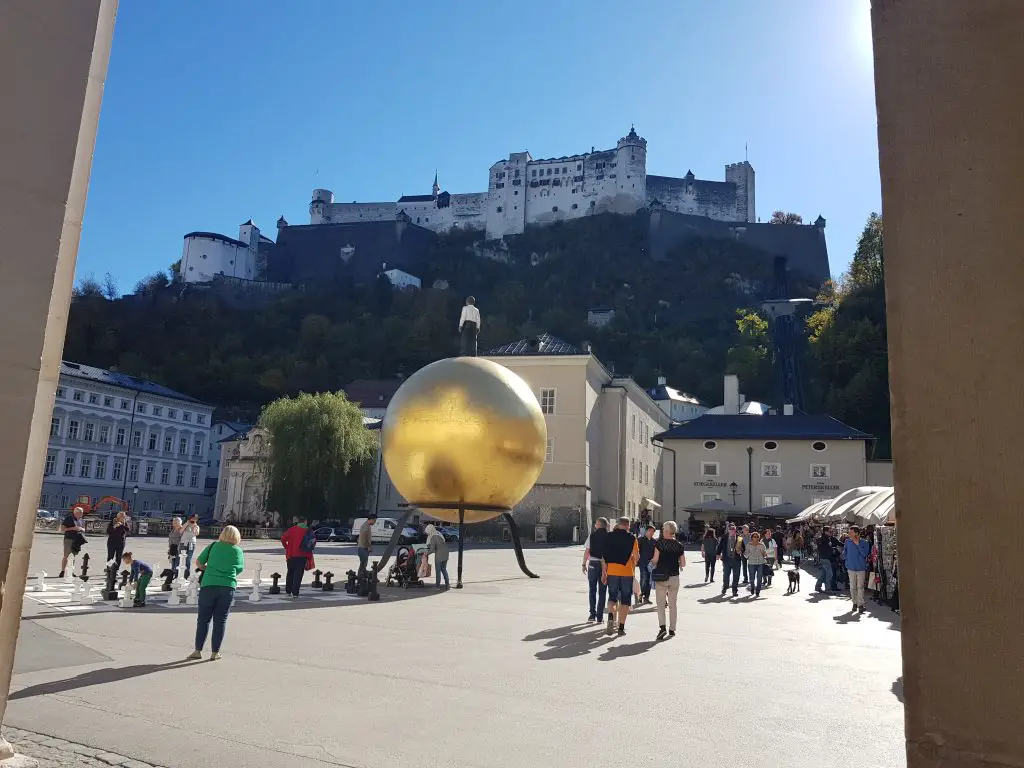
Read also: What to see in Salzburg Austria in one day: 16 Things to do!
Complete with traditional pastel-coloured buildings, Innsbruck is full of colour and life. Sitting perfectly in the Austrian Alps, Innsbruck is surrounded by snow-capped mountains with the river running through the centre of the city.
Innsbruck offers cable cars to the peaks, and ski jumps too. However, the history and architecture of the town make it perfect for simply exploring on foot. It really is one of the best Austrian Alps towns.
Looking for best places in Austrian Alps? Nestled on the banks of a lake, Hallstatt has beautiful waterside views complete with snowy mountaintops in the background. The beautiful town itself features charming pastel houses and traditional architecture.
Wherever you go in Hallstatt, it always offers picture-postcard views. Many tourists say, that Hallstatt is one of the most romantic places in Europe !
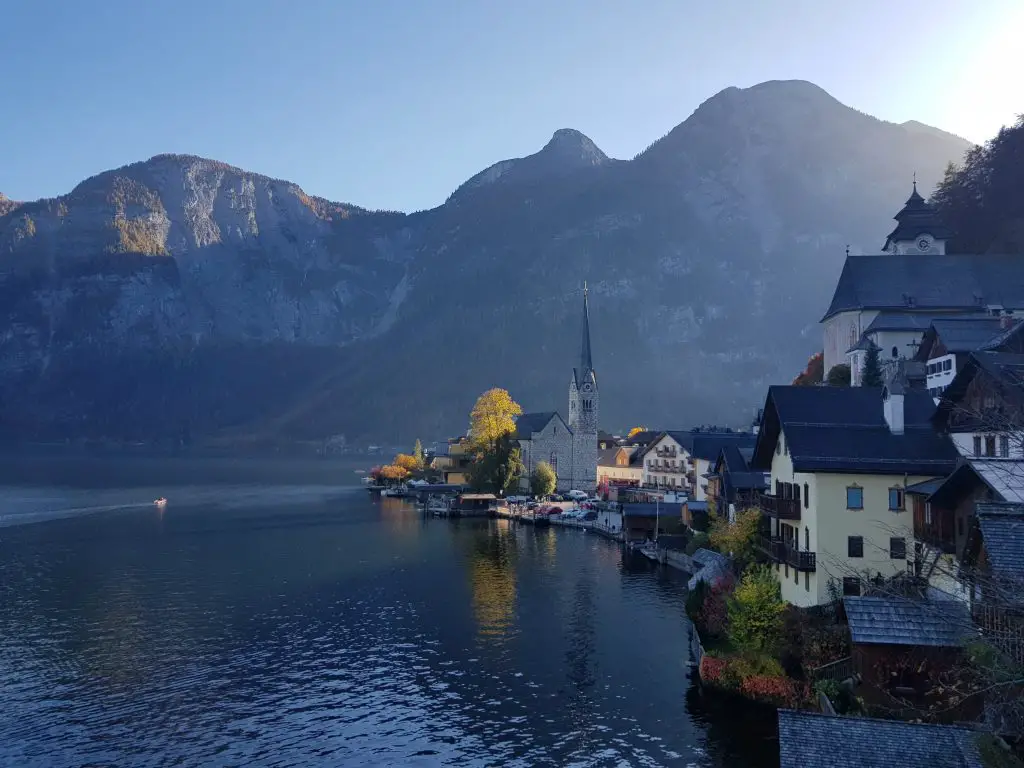
Read also: Is Hallstatt Austria worth visiting or is the Town a tourist TRAP?
Unusual places to visit in the Austrian Alps:
Alps mountain range in Austria is full of stunning places. In the Salzkammergut Mountains, a great activity is to take the rack railway to Schafberg . The railway is the steepest steam cog railway in Austria and has been in operation since 1893. Starting in Wolfgang, the leisurely 35-minute journey covers a 1,190-metre ascent in just 5.85km.
At the summit top which is 1783metres, you can enjoy 360-degree panoramas covering the beautiful lakes below and the Alps that stretch out as far as the eye can see.
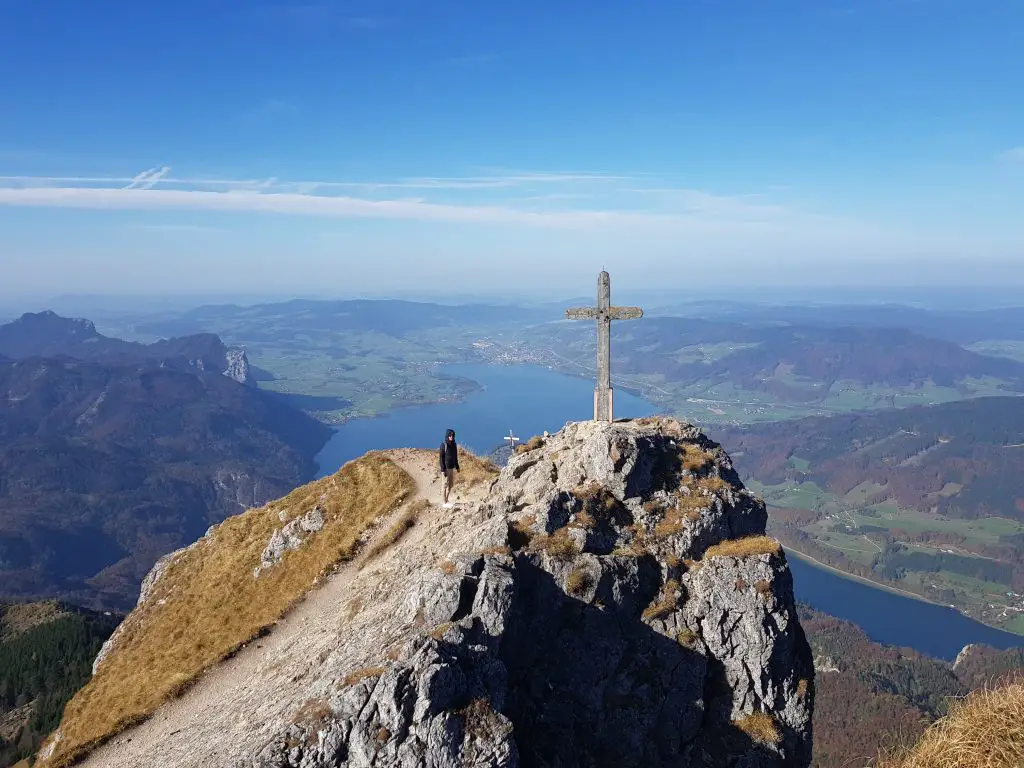
Read also: How to get to Schafberg mountain Austria? Europe’s travel at its prettiest!
Stairway to nothingness Dachstein
One of the top attractions Austria and best places in the Alps! If you have a strong nerve, then the stairway to nothingness is a great way to challenge your bravery and enjoy some unforgettable views in the process. The stairway to nothingness is a just 14 narrow steps down to a glass platform where you are suspended high in the valley of the mountains. It really is one of the most unique places in Europe !
The platform is vertigo-inducing, but it does offer stunning views of the mountains and Dachstein glacier below on a clear day. In clouds, it really does feel like it is a stairway into the unknown!
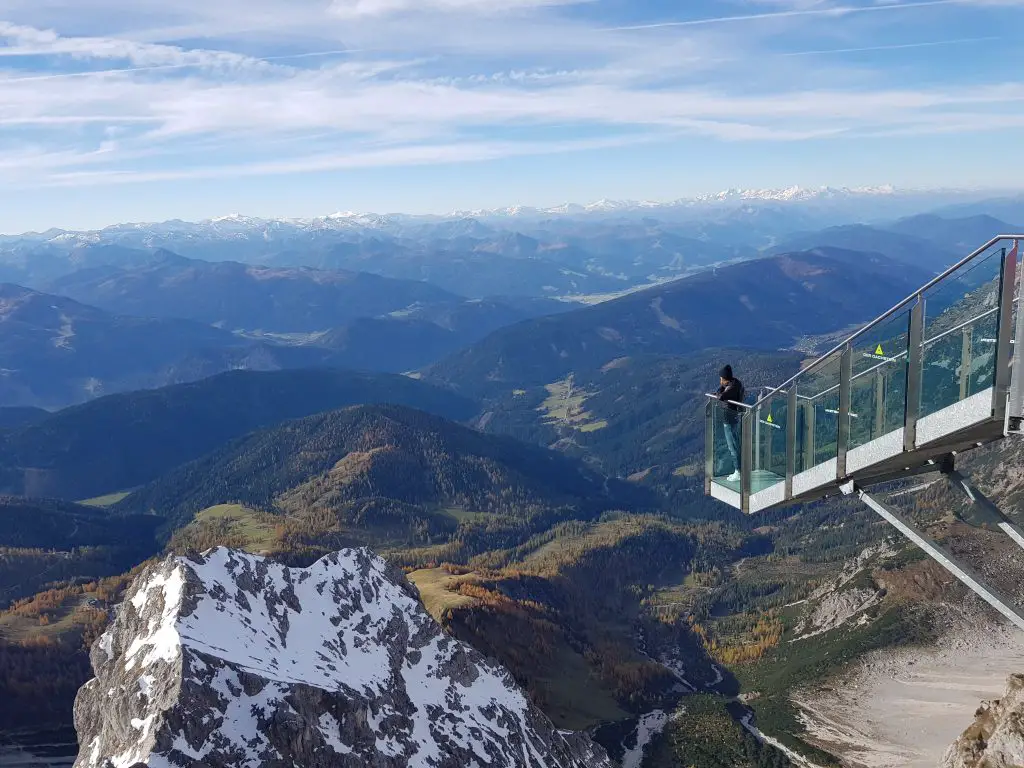
Read also: Unique places to visit in Europe for true American Cowboys!
Kebema Panoramabrücke
The Kebema Panoramabrücke is an incredible suspension bridge that offers truly spectacular views. The bridge sits high above Lake Schlegeis and makes for beautiful photographs.
There is a lovely, but short hike to get to the bridge which makes the views even more worthwhile. For Instagram, it is a must-visit!
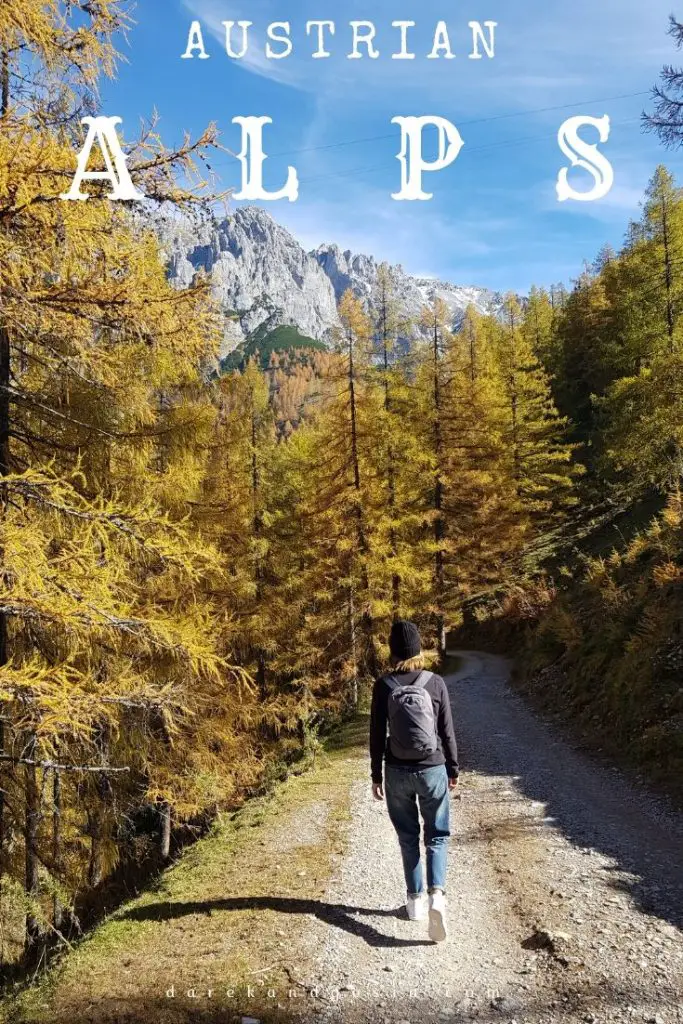
Articles you may like:
- Cheddar Gorge caves vs. Cheddar Gorge cliff-top walk
- Visiting Stonehenge – TOP Tips for 1st-time visitors
- 3 days Ring of Kerry itinerary – Is driving tour worth it?
- Best Beaches in Europe – TOP Beach Holiday Destinations!
Further reading
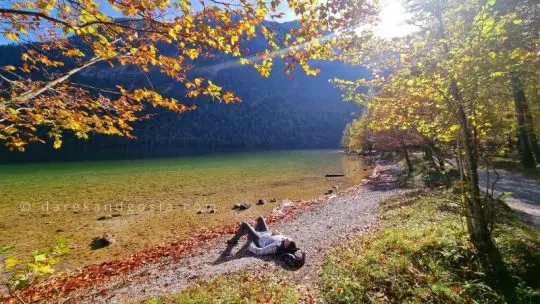
17 Places in the Bavarian Alps That Even Gosia Couldn’t Love
Take a holiday in Bavaria and you’ll regret how magnificent it is. Discover landscapes that ruin all other views and flavours that turn you into a food snob. Read on to know why this German gem sets an unfairly high bar for every other...
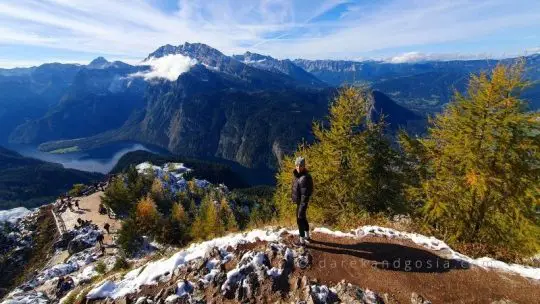
Give Jenner Aussichtsplattform a Miss: It’s Simply Too Lovely
Tag along with Darek and Gosia as they dissect Jenner’s observation deck – the spot so ludicrously lovely, it’s the valedictorian of viewpoints. What’s the catch? Do your other travel photos even stand a chance? Find out in...

Swiss, Austrian & German Alps
Snow-capped mountains piercing the sky, Alpine lakes lapping against sun-drenched shores, and a range of outdoor activities to get your heart pumping; it’s no wonder the Alps are among the most popular travel destinations on the planet. Stretching over 750 miles and spanning eight countries, the iconic mountain range displays nature at its best. In summer, Alpine valleys blossom with a verdant array of flora that encircles traditional villages and emerald lakes. In the colder months, waterfalls freeze, lakes frost over, and blankets of snow cover mountainsides, forming a winter wonderland befitting any fairytale.
- Copy Link copied

Photo by Daniel Muller
When’s the best time to go to Swiss, Austrian & German Alps?
The Alps boast activities throughout the year for a whole spectrum of travelers, from mountain thrill-seekers to families on a relaxing break. Winter lures skiers, snowboarders, and shoppers seeking unique gifts at the various Christmas markets. Towns like St. Moritz and Zermatt are full of glitz and glamour, while St. Anton and Verbier appeal to those looking to shred up the piste and then dip into a thumping après-ski scene. In the summer months, climbers tackle a plethora of novice ascents and challenging, multi-day hikes, while cyclists head to the mountainous foothills, where trails wind around shimmering lakes, into forests, and alongside fields of deer, ibex, and other Alpine wildlife. Of course, cities like Salzburg, Innsbruck, Lucerne, and Munich have year-round appeal thanks to their range of cultural offerings.
How to get around Swiss, Austrian & German Alps
Thanks to well-maintained roads and a punctual train system, traveling through the Alps is actually quite easy. Driving through the mountain range can be somewhat of an adventure—especially on the awe-inspiring grand passes in Germany, Austria, and Switzerland—but border crossings require minimal fuss. Just know that you’ll need to show your passport at certain checkpoints, and that each country may have their own highway toll regulations and vehicle licenses to purchase upon entry. Those wishing to explore the region by train can plot their route through Eurail, which offers access to trains all around Europe.
Can’t miss things to do in Swiss, Austrian & German Alps
The Alps boast some of the most sublime lakes in the world, including Lake Constance, which spans Germany, Switzerland, and Austria. Along its 167 miles of shoreline, visitors can find both magical castles and charming towns. Of all the Alpine mountains, the Matterhorn stands above the rest thanks to its almost-symmetrical pointed peak that only the most daring attempt to climb. Other must-see places include the picturesque town of Hallstatt, the Grossglockner High Alpine Road (the highest surfaced mountain pass road in Austria), and the Eisriesenwelt, which is the largest ice cave in the world.
Food and drink to try in Swiss, Austrian & German Alps
While many of Europe’s finest chefs have opened high-end, modern restaurants in the Alps, the region’s traditional cuisine revolves around a few staple dishes. In Switzerland, it’s all about bubbling fondue and dripping wheels of raclette cheese enjoyed in snow-covered Alpine lodges. Austrian fare focuses on hearty meat-and-potato dishes, with Tiroler gröstl (a meat, potatoes, and onion recipe) being a particular favorite, while Germany prefers Weisswurst (thick white sausages) and oversized pretzels. An ancient farming region, the Alps still lead the world in sustainable, small-scale agriculture and organic farming practices, turning out some of the best meats and cheeses in the world. In terms of drinks, beer is a staple, particularly in Bavaria and Salzburg, where the craft brewery movement is thriving. Also popular, however, is Austrian schnaps, a type of distilled fruit brandy produced in the Tyrol region.
Culture in Swiss, Austrian & German Alps
Unsurprisingly, Alpine life very much centers around outdoor adventures. In Switzerland, families spend summer months exploring the mountains, camping by lakes, or sipping locally produced wine until darkness descends in quaint villages. The German and Austrian Alps have a close cultural bond, sharing a strong dedication to Roman Catholicism and a pride for their farms and fairytale castles. Of course, Austrians also enjoy their own traditions, including a love for folk music and brass bands. Come winter, all three countries come alive with Christmas markets and celebrations.
For Families
It’s hard to think of a family vacation as varied as an Alps sojourn. Not only can young ones learn to ski and snowboard under the tutelage of expert instructors, they can also get their adrenaline pumping with backcountry runs and snow-park jumps. The varied trails and winding roads offer never-ending challenges for bikers, while nature reserves provide forays into Alpine wildlife. Families can also look forward to an enchanting range of lakes, as well as roaring rivers for rafters, riverboarders, and kayakers.
Local travel tips for Swiss, Austrian & German Alps
In many Alpine villages, Sunday is a day of rest. Several remain almost completely silent for the entire day but, even during the week, late-night noise is a huge no-no. Up in the mountains, Alpine huts have been providing food and shelter to travelers for centuries, adding a friendly element to backcountry explorations. Language is varied throughout the Alps, with different regions speaking local dialects like Bavarian. Switzerland even has four official languages: German, French, Italian, and Romansh.
Local Resources
- www.myswitzerland.com
- www.myswissalps.com
- www.thelocal.de/tag/Bavaria
- www.bavaria.by
- www.austria.info
Guide Editor
Simon Willis is a travel journalist flirting between Europe and South America. As a keen skier and cheese-lover, Simon has spent much of the last decade exploring the Alps, searching for fresh-powder runs and the finest raclette. When keen for a change, he heads to Colombia and Peru, where he has trained to become a cowboy and lived in an Andean Quechua community. His work has appeared in the Washington Post , The Boston Globe , The Guardian , Sky Delta Magazine , and AFAR , among others. You can find him on Twitter at @simonwillis11.
[An * means an affiliate relationship; see footer] City guide | Search the site | April tips
Visiting Vienna
Day trip to the Alps
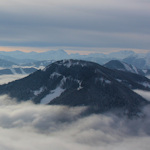
The Alps are long. About 1200 km long. Unfortunately, the mountain range is still not quite long enough, since it stops just short of Vienna.
So you won’t see any snow-capped Alpine giants by staring out of your hotel window. But you can visit the Alps quite easily from Vienna. In fact, it makes a pretty decent day trip. Here’s how…
- Day trips from Vienna
Where are the Alps?
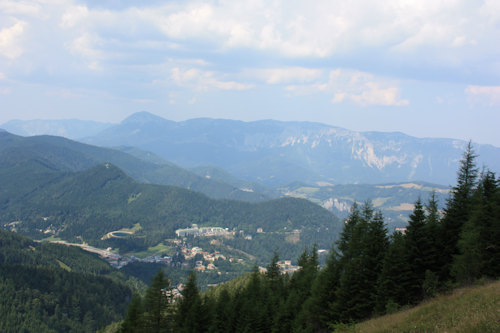
(The hills are alive, apparently)
You tend to think of cities like Salzburg and Innsbruck when anyone mentions the Austrian Alps, but the mountains actually stretch across much of the country from the west, petering out just before they reach Vienna.
I’ve marked the three typical Alpine destinations the Viennese go to for weekends and day trips (Semmering, Rax, and Schneeberg) on the map below. As you can see, they all lie within 80 km of the city center as the crow flies and a little over an hour away if you hire a car *.
(We actually get our water through direct pipelines from these nearby mountainous areas.)
How to get to the Alps from Vienna
Before we continue, a word of warning.
If you’re going into the mountains, be sure to check travel and weather conditions, then adjust your plans and gear accordingly. In particular, ensure you have the right footwear if you’re planning to walk around Alpine terrain. Check with the local tourist offices for advice.
The Schneeberg mountain is the easiest to reach by public transport.
Basically, you catch a train to “Puchberg am Schneeberg” from the Hauptbahnhof (main station) in Vienna. You typically have to change once in Wiener Neustadt, but the whole trip only takes about 90 minutes.
Helpfully, the rail service that takes you up the actual mountain leaves next door to the station.
The Salamander train, named for its colours, carries you up to 1800m above sea level. The top has walking trails as well as a restaurant (!).
The service does not operate all year round; the main season runs from around late April into early November, though you may find special trips available out of season.
Check for current details, timetables, etc. here . With a bit of luck, you can catch an old steam locomotive travelling the same line.
The town Puchberg am Schneeberg is a little over an hour’s drive from the centre of Vienna (traffic notwithstanding). Check their official tourism website for directions, plus up-to-date info on facilities, costs, getting there etc..
This is where Viennese day trippers go skiing.
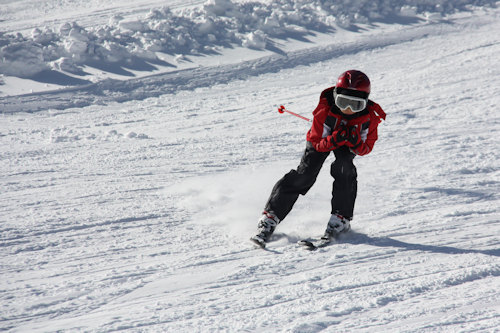
(This needs no caption)
A mini cable car takes you from the town up into the mountains. This service normally runs every day in the winter season (it’s a proper ski resort with lifts and slopes) and high summer, but has a restricted service at other times.
Yep, the top station has a restaurant next to it.
Semmering is on the main S6 road that branches off from the A2 Sudautobahn (southern motorway) out of Vienna, again somewhat over an hour’s drive from the city.
Trains go direct to the resort’s railway station from the Hauptbahnhof. The train journey is actually slightly shorter than for Schneeberg, but it’s a 25-minute walk to the cable car station (or jump in a taxi. Look out for possible shuttle buses too).
Check the official Semmering tourism website for current travel info, facilities, timetables, prices, etc..
A cable car service takes you up to the Rax alpine mountain hiking area at around 1600m above sea level. It operates most days at frequent intervals but sometimes closes for a period (I’m guessing for maintenance). Check current timetables, prices etc. here .
Your target railway station is Payerbach-Reichenau, reachable from Vienna’s Hauptbahnhof station.
The train journey time varies but can be as little as somewhat over an hour. Then you have to get to the cable car station, which is 6+ km away, so you’ll need to catch a bus or taxi, for example.
A car journey direct to the cable car station from Vienna takes around 75 minutes. Check the official Reichenau an der Rax website for local information.
The Viennese hills
Incidentally, Vienna has its own range of hills in the west of the city. The tallest is Hermannskogel at around 542m above sea level. Not quite Alpine levels of natural grandeur, but the forested areas in particular look rather wonderful in autumnal colours or after snow.
Some of the official city hiking paths include these hills. Berg means hill or mountain in German so look for routes that have that word in place names (e.g. routes 1 and 1a to Kahlenberg and Leopoldsberg respectively).
Other useful links
- General tourism site for the Viennese alpine region
- Bergfex travel and weather portal for the Austrian Alps
- Austrian National Railways for journey planning and tickets
Welcome to the Holiday Information Service
Our holiday experts are here to assist you with your holiday planning. Send us a message and we will get back you as soon as we can.
Please fill in fields marked with *
Give us a call Monday to Friday from 8am to noon. Outside of our office hours please drop us an email and we'll be happy to answer your questions.
Telephone: 00800 400 200 00 Österreich Werbung Vordere Zollamtsstraße 13 A-1030 Wien Wien AT
*toll-free; calls from mobile networks may incur charges
We would like to show you content from external sources here. Unfortunately, you have not given us permission to do so. As soon as you load the content, you agree to the use of cookies for statistical and marketing purposes. You can change or withdraw your consent at any time via the ( data protection statement ). Load content See on Launch campaign Lebensgefühl Österreich - Subject for Austria Info Austrian National Tourist Office / Marko Mestrovic media_content.tooltip.skipped
We would like to show you content from external sources here. Unfortunately, you have not given us permission to do so. As soon as you load the content, you agree to the use of cookies for statistical and marketing purposes. You can change or withdraw your consent at any time via the ( data protection statement ). Load content See on Launchkampagne Lebensgefühl Österreich Austrian National Tourist Office / Marko Mestrovic media_content.tooltip.skipped
Austria – Lebensgefühl. Experience the Joy of Life in The Heart of Europe
Feel the ease, the serenity, the love for great food and art and culture, the charming wit, the welcoming atmosphere – feel the Austrian Lebensgefühl
Discover the Entire Country
Discover austria.
Explore Austria at its best with these concise itineraries. Whether it's iconic landmarks or hidden gems, culinary delights or art and culture, discover how to make the most out of your stay.
Vienna in 3 Days
Salzburg in 48 hours, innsbruck in 3 days, graz in 3 days, our hotel reccomendations, austria hotel collection.
Looking for a charming family-run hotel, a luxury spa resort, or a cosy private apartment? Here is our curated list featuring great hotels in Austria's cities and on the countryside.
A Summer in Austria - Your Daily Dose of 'Lebensgefühl'
Nature, mountains and lakes, cultural treasures and thousands of moments of indulgence are the setting for a very special attitude you'll experience during a summer holiday in Austria: A light-hearted feeling, that comes to life beautifully when connecting to the locals.
Lebensgefühl Austria - hiking with the family Austrian National Tourist Office / Marko Mestrovic media_content.tooltip.skipped
A Holiday in Austria puts a Smile on your Face
An experience, an encounter, sometimes just a moment - and the new somehow feels familiar. In Austria, this atmosphere is literally in the air: A sensation that, in nature, feels light and free, full of fun and joie de vivre. A feeling that, while connecting with the people who live here, feels genuine.
Mountains, water, energetic places, cultural treasures - that is Austria for you. As well as cooling off in a crystal-clear lake, the gratifying feeling when conquering a summit, and a snack at a mountain hut. Austria is the freedom of an open-air festival, and the cosiness of a wine tavern. All places and moments, that make it easy to clear your head, to be amazed, to feel the vitality. The spark is quickly ignited. Anyone who is a guest here becomes part of this very special attitude to life.
Experience Austria's Nature
These boots are made for walking, the most beautiful swimming lakes, i want to ride my bicycle, we are family, hiking with children.
Exploring mosses, watching butterflies, feeding goats ... Children are curious. Austria's hiking routes are just right for an unforgettable hiking day.
Moments of Cultural Pleasure
Museums and galleries, embrace austria's guilty pleasures, wine culture in austria, culinary pit-stops in austria, time for easter egg hunting, easter in austria.
Experience Austria's unique traditions and visit one (or more!) of our colourful Easter markets.
Which Summer Activity do you Fancy?
Walking and hiking in austria, cycling and biking in austria, lakes and nature in austria, trailrunning: a wonderful family experience, discover city life, city breaks in summer - your cultural 'lebensgefühl'.
City trips in Austrias cultural summer hit right at the heart. Because Austrias cities surprise, make curious – and sometimes even are addictive. #feelAustria
Austria is a country rich with history, beautiful regions, imperial cities and year long activities.
In Harmony with Austria
When you spend your holiday in Austria, you will experience that one moment – the moment that you’ll remember for years to come, the moment you’ll return to in your head when life gets stressful.
Active in the Outdoors
It's the small moments that make us happy: The pride on our best friend's face when finally reaching the summit. Or at night, falling asleep with achy legs but a smile on our face. That's what life in the outdoors is all about.
Wellbeing & Relaxation in Austria's Nature
Nature soothes our minds and bodies. From the healing effect of waterfalls and trees to the beauty of cultural landscapes, mountains, and waters, Austria is filled with natural gems.
Why Forest Bathing Can Make You Healthier and Happier, According to Science
Why spas and thermal baths are so good for us, culinary discovery trip through austria.
Austria owes its culinary identity to both its location in the heart of Europe and its remarkable history. Austria stands for openness to varied influences and a love for refining existing traditions at the highest level.
9 restaurants and mountain huts with a view
Dream career: organic farmer, austrian culture, artists & masterpieces.
Let us dive into Austria’s arts and culture sphere and discover fascinating stories of the masters and personae that led the way.
Hedy Lamarr, Hollywood Goddess and Lady Bluetooth
Gustav klimt loved art, women and lake attersee, our hotel recommendations, find a city hotel, find an alpine stay, share feedback for a chance to win a special holiday experience.
We value your feedback! Take part in our brief survey to be in with the chance of winning one of five very special holiday experiences in Austria. Click here to take part.
It goes without saying that your data is processed with complete anonymity. Read the terms and conditions here.
Insiders' Tips
Austria’s top sights, top 5 austrian dishes you need to try, austria’s prettiest places, according to austrians, austria's quirkiest city tours, events in austria, practical travel information, about austria, brexit and travelling to austria, how to get to and around austria, what are you interested in, family fun in austria, round trips in austria, cities and culture in austria, skiing and winter in austria, austrian cultural stories, famous austrians.
From Mozart and Sisi to Hedy Lamarr – Austria's sons and daughters have left their mark across music, art, science, politics, and sport. Find out which famous personalities originate from or lived in Austria and follow in their footsteps.
Passport & Visa for Austria
Vienna pass: your personal key to the city, travel experiences designed by experts, austrian – the charming way to fly.
Enjoy Austrian hospitality and multi-awarded service already on board, with Austrian Airlines from 130 cities around the world direct to Vienna and other Austrian cities.
Explore Austria By Train
Travelling through Austria by train is reliable, comfortable, and convenient. Relax, sit back, and enjoy your vacation, the Austrian Railways takes you to Austria’s most beautiful places.
Have a Taste of Austria
[{ "@context": "http://schema.org/", "@type": "imageobject", "url": "/static/img/icon/recipe.png", "contenturl": "/static/img/icon/recipe.png", "caption": "favourite austrian recipes", "isfamilyfriendly": true }] favourite austrian recipes.
Craving a taste of Austria? Why not don your apron and recreate your favourite regional specialities at home? Here is a list of some of Austria's most delicious all-time classics.

The Ultimate 2 Week Road Trip Itinerary in the Alps
The mystery and beauty of the Alps has long captivated travelers with its snow-capped peaks, aquamarine lakes and charming hamlets. If there was ever a perfect road trip destination, I think it would be the Alps. The Alps are one of the ultimate European travel experiences! Even now that I live in Germany , it still feels like a dream to be in the Alps. You never get sick of this magical place.
There are several countries that span the Alps, including Austria, France and Germany, but the most famous of the Alpine countries is of course Switzerland. It goes without saying that Switzerland is stunning and one of my favorite destinations in Europe, but, there are plenty of places to explore in the Alps outside of Switzerland that surprised me (and saved me some Euros!) during our 2 week road trip in the Alps.
While you can’t see all of the Alps in just 2 weeks, you’ll be able to see a lot of these beautiful mountains. In this blog post, I help you plan the perfect 14 day roadtrip through the Alps, making sure that you make the most of this incredible part of Europe. You’ll hardly be disappointed by the places you miss because the places you will go to are going to blow your mind. The Alps are truly stunning and you really can’t go wrong with any destinations in these European mountains!
What You'll Find In This Post
How to Spend 2 Weeks in the Alps
Overview of this road trip itinerary.
This 2 week road trip itinerary in the Alps will be a circuit route starting and ending in Munich. This road trip includes stops in 4 different countries -- Austria, Switzerland, Liechtenstein and Germany. In total, there will be about 19 hours of driving split across 10 days. The longest stretch of driving is approximately 4.5 hours, but an average of 2 hours per day.
By starting and ending at the same point (Munich), you can reduce the cost of your rental car by about 200 euros, and it makes the logistics of the arrival and departure less stressful since you can book a round trip flight. If you preferred to book one-way flights, you could easily modify this itinerary to start in Munich and end in Zurich or Geneva by moving up the last three days to the middle of the itinerary.
Day 1 + 2: Salzburg
For the first day of your Alps road trip, a short two hour drive from Munich to Salzburg is a calming way to warm up your driving skills and get comfortable on the European highways. This drive is straightforward and the terrain is easy, plus you’ll get an impression of the immaculate road conditions on the German autobahn. Nestled in the foothills of the Alps, Salzburg offers a great blend of history, culture and of course, Sound of Music fame. My mom is obsessed with this movie, so I knew I couldn’t pass up a stop here. I dive into all the nitty gritty details about planning two days in Salzburg .
The city itself is a UNESCO World Heritage Site, thanks to its famous landmarks like the birthplace of Mozart, the Hohensalzburg Fortress, and the well-preserved baroque architecture. Salzburg is compact and easy to explore by foot, so make sure to book a hotel with easy parking options. I recommend staying for at least 1 night, because many visitors only come as a day trip. The city has a completely different vibe at night. We did two nights in Salzburg and felt like it was just right!

Day 3 + 4: Innsbruck
Famous for its mountain panoramas and alpine adventure activities, Innsbruck is a great place to stay for a few days while traveling in the Alps, thanks to its advantageous location in the center of the Tyrol region of Austria. You can easily use it as a jumping off point for mountain biking, skiing or other mountain adventures, or you could simply enjoy 48 hours exploring all the great things the city of Innsbruck has to offer.
The quaint old town of Innsbruck is easily walkable in an hour or two if you are interested in sightseeing, with options to see the Golden Roof , the Baroque facade of the Heblinghaus or the stunning interior of the Cathedral of St James . The city has a long history with the Olympics, so make sure to take a visit up to the towering Bergisel Ski Jump which overlooks the city. Inside, you can enjoy coffee or lunch with a view! For more stunning views, take your elevation even higher with a ride to the top of Nordkette Mountain . Sometimes called the Jewel of the Alps, you can ride a funicular and cable car up to Hafelekar Station for mind-blowing views of the Alps.
I was on the fence about visiting the Swarovski Kristalwelten Museum (Crystal World) outside of Innsbruck, but it turned out to be such a great museum and I would 100% recommend going. Similar to other experiential museums that have popped up in recent years, the Swarovski Kristalwelten features a series of rooms created by different artists. I had no idea the caliber of artists that would be featured here--Alexander McQueen, Yayoi Kusama, and Manish Arora to name a few!
Each room captures the artist's interpretation of Swarovski crystal as an artistic medium, and there are some incredible installations! It seems that most people who visit Swarovski Kristalwelten go straight to the gift shop, so when we visited the museum, we had it completely alone! Don’t miss the mind-blowing beautiful crystal clouds out in the garden.
Innsbruck wasn’t my favorite of the culinary destinations we visited on our tour of the Alps, but it is a good place to sample some traditional Austrian food. Stiftskeller has a good local vibe with a nice selection of beer and yummy (and filling) pub food. The stylish Ottoburg is another good option with a charming Alpine interior and friendly staff. One thing you don’t want to miss before leaving Austria is strudel, and Innsbruck has some delicious options! Kröll Strudel Cafe offers a wide assortment of delicious strudel flavors to eat in or take away.

Day 5: Luxury Alp Hotel
While in the Alps, it would be a shame not to splurge on at least one luxury experience -- this is basically the region of the world where luxury hotels were invented! There are copious amounts of stunning Alpine hotels offering a range of luxury experiences in Austria, Switzerland and Germany. Spa and wellness resorts are popular in this region of Europe, making for a relaxing and restorative experience on your 2 week itinerary in the Alps.
If you happen to be visiting during a slower season or book a hotel in the middle of the week, you might be surprised by some of the deals you can find. We were traveling in the Alps around my 30th birthday, and I planned for our splurge day on my birthday as a present to myself, using up nearly all of my rewards points to book a room at the picturesque Nidum Casual Luxury Hotel outside of Innsbruck. It was the perfect way to ring in a new decade of life and felt totally luxurious! For more luxury alpine options, Pretty Hotels has a lovely list of mountain getaways many of which are in the Alps as well as Design Hotels round up of the most design-forward hotels in Austria.
Day 6: St Moritz (or Zermatt)
Driving into Switzerland offers some mind blowing scenery. From the tunnels through the mountain to crystalline lakes, this morning's drive will wow you. I could easily spend one week in Switzerland , but your budget might now allow you to stay too long. With this roadtrip, we're keeping the time in Switzerland fairly brief. When you picture a luxury Swiss Alps scene, you are basically picturing St. Moritz. This glamorous mountain town has been hosting the winter holidays of European elites for decades, and this place just oozes wealth. In a rich country like Switzerland, that's saying something.
If hanging out with Europe's wealthiest isn’t your vibe, I totally understand. You could easily go to Zermatt instead. Zermatt is home to the famous Matterhorn mountain, and it is a quieter more relaxed destination in Switzerland. The city itself doesn't allow cars, so you'll need to park outside the city and take the train in. I've written several posts about visiting Zermatt, including where to find the best restaurants in Zermatt .
But let's continue with the St. Mortiz plan. Never one to turn down a good sauna and spa day, the Ovaverva public pool and bathhouse is an ideal way to spend a morning in St. Moritz. This sleek and modern spa has everything -- saunas, steam rooms, hot tubs, outdoor heated pool -- all with stunning Alpine views. Like many other saunas and spa in this region, no bathing suits are allowed in the mixed-gender saunas so be prepared.
Similar to Innsbruck, St. Moritz has been a host of the Winter Olympics making it a prime snow-sports city with plenty of opportunities to go skiing or snowshoeing in the winter, or hiking and mountain-biking in the summer. The unique thing you can do here in the winter is go for a bobsled ride ! This adrenaline pumping activity will set you back about 300 Swiss francs a piece, but it is likely to be an experience you’ll never forget -- if you can survive the ride! For a less adventurous take, consider a hike on a glacier.
St. Moritz is also an excellent place for some shopping (if you can afford it!). Don’t miss a peek into the delightfully stylish Faoro which doubles as a shop and a cafe. Cashmere is the name of the game at Lamm , which has both modern and traditional sweater designs for men and women.
To save yourself (a little) cash, make a DIY cheese plate at Pur Alps who also supply amazing jams and crackers. For a more sophisticated snack, pop into the Kulm Country Club which has incredible interior design, mixing vintage and modern aesthetics impeccably. If you want to sample my favorite swiss chocolate brand, sample and buy one of the many barks or truffles at Läderach .
Day 7 + 8: Jungfrau (Interlakken) Region
The Jungfrau region is one of the prettiest in all of the Alps, home to gorgeous alpine lakes, majestic mountains, and high-altitude waterfalls. If you take the slightly longer 4 hour drive (vs 3.25 hrs) from St Moritz to Interlakken via route 13 and route 2, you will be treated to some of the most incredible Swiss Alps scenery imaginable. Through tunnels and small mountain towns, you’ll have vista after mind-blowing vista. It is well worth the extra 45 minutes in the car!
Interlakken, which literally means in between two lakes, is a centrally located stop for exploring central Switzerland for a few days. I would say the city itself leaves a lot to be desired, but it makes for a great jumping off point for exploring the Jungfrau region. There are some tasty restaurants in the town, as well as a nice riverfront, but not much else. If you prefer to have a more quaint Alp stay, you might want to consider nearby Grindelwald or Lauterbrunnen .

There are SO many ways to get amazing views in the Jungfrau region. One of the most famous things to do in this region of Switzerland is to visit one of the high mountain peaks, either Jungfraujoch (the top of Europe) or Schilthorn Observation Deck (James Bond fame). The views from both are of course spectacular, but the high price point means that you’ll probably want to select just one of them. We opted to do the Schilthorn peak. Unfortunately it was completely overcast and cloudy the day we went, so we decided not to ride up because there would be almost no opportunity to view anything.
On our way back from Schilthorn station to Interlakken, we stopped in the charming small town of Lauterbrunnen. Increasingly famous on Instagram, Lauterbrunnen is a quintessential Swiss town with one defining feature -- a waterfall shooting off a rock face into a sheer free fall. It’s very beautiful and you can see it from the town center. We also stopped at Trummelbach Falls , a tucked away waterfall gorge that is well worth the hour-long visit. You can get very close to the waterfalls, and the thunderous noise inside the gorge is cool to experience.
Prefer to see the Alps and lakes from the air? Interlakken is THE place to go paragliding in Switzerland, and there are almost daily departures for people looking to paraglide. My parents did this back in 2016 and had a fantastic experience! You might also consider a visit to the Two Lakes Bridge for a great perspective on Interlakken’s unique alpine position. Another option for pristine Alp viewing is the First Cliff Walk , which you can start in Grindelwald. Eat and Travel with Us has a great write up about how to do this!
Day 9 + 10: Lucerne
Given the mountain views that you’ve just come from, I would recommend spending your two days in Lucerne simply enjoying this beautiful city. The views from Mount Pilatus are popular, but not nearly as lovely as the stops in Interlakken and St. Moritz.
I genuinely loved my time in Lucerne because it is a scenic and quaint city that feels perfectly Swiss to me. The most iconic attraction in Lucerne is the Chapel Bridge , a 1300’s wooden bridge with painted interior panels telling the history and lore of Switzerland. The old town has been well-preserved and it is nice to window-shop while taking in the beautiful architecture. Next, walk along the old city walls and climb the watch towers for nice views of the city and lake Lucerne. I really enjoyed walking along the waterfront at night, when all the churches and old buildings are lit up.
Lucerne is also a much more foodie city than some of the other stops on this list, so take advantage! We had a very nice (and moderately priced) lunch at Restaurant Mill’Feuille along the river in Old Town. For sunset drinks, it is hard to beat the rooftop terrace at the Montana Hotel . If there was one meal on this itinerary that I would recommend making a reservation for, it would be at Zur Werkstatt in Lucerne . We were lucky enough to sneak in as the last table that night without a reservation, but normally they are booked days ahead of time. Our dinner at Zur Werkstatt was a fun, creative and DELICIOUS meal during our 2 week trip through the Alps which we still remember fondly!

Day 11: Vaduz, Liechtenstein
As one of the tiny micronations countries in Europe, Liechtenstein isn’t on most people’s “must-see” lists of Europe, but I wanted to add it to my Alps itinerary to cross off country number 54 for me. What Liechtenstein might not have in size, it makes up for in beauty with its stunning location nestled in the Alps between Austria and Switzerland. Plus, the numbers of visitors to Liechtenstein versus its neighbors is minimal, and you’ll feel a nice reprieve from tourist crowds.
You can easily see the major highlights of Vaduz in 24 hours, but there are ski resorts and mountain towns nearby if you wanted to spend an extra night or two. Park your car near the center of Vaduz, as you’ll be spending most of your day walking around. Start with a quick walk through the city center, where you can pop into a few museums such as the Stamp Museum or the Liechtenstein museum . At the end of the main street, keep walking towards the picturesque Red House .

Have you ever wanted to sample wine made by a royal family? In Liechtenstein you can at the Hofkellerei des Fürsten von Liechtenstein (and they are surprisingly good)! A wine tasting will set you back about 15 CHF, but you could also pair it with lunch for a slight discount.
Castles are your final stop for your 24 hours in Liechtenstein. Drive up to the Vaduz Castle , which is still owned and inhabited by members of the royal family. You can’t go inside, but the photo op and view is nice. More picturesque in my opinion is the Gutenberg Castle , about 15 minutes away from Vaduz in Balzers. Perched precariously on top of a rocky outcropping in the middle of the city, Gutenberg Castle dates about to the 1200s!
For dinner, enjoy the rustic ambiance at Adler Restaurant where you can sample a refined Käsknöpfle, the national dish of Liechtenstein. Similar to a cheese spaetzle or macaroni and cheese, this pasta dish mixes cheese and fried onions with a side of applesauce. If you want something fancier, Restaurant Marée is an experimental Michelin-starred restaurant with stunning views from its mountainside dining room.
Day 12 + 13: Bavaria
As you round out your 2 week road trip in the Alps, you’ll start heading back towards Germany. If you aren't ready for this road trip to end yet, consider adding on a few extra days as you enter back into Germany. Bavaria is one of the most popular places to travel in Germany, thanks to it's well known culture and beautiful attractions. I live in Germany now, and you can find tons of my Germany-specific travel suggestions on my other blog, Ausländer.
Thankfully you don't need extra days to enjoy some of Bavaria's most famous attractions. Such as Neuschwanstein Castle! Famous for its princess-like exterior, Neuschwanstein is rumored to have inspired Walt Disney’s interpretation of the Sleeping Beauty castle. Considered to be one of the most picturesque castles in all of Germany, Neuschwanstein Castle is well-trod by millions of tourists annually. A visit here is an organized experience. You’ll need to book your tickets several days or weeks in advance with a very specific time slot for your visit. Germans have no tolerance for tardiness so you’ll need to plan your arrival time accordingly.
You’ll have the option to book a ticket just for Neuschwanstein or to Hohenschwangau Castle as well. The price difference is marginal, and I actually liked the tour of Hohenschwangau Castle even better, so I would recommend doing the combined tour. In total, the visit between the two castles will take about 4 hours. Neuschwanstein is located at the top of a small mountain which can be accessed on foot via steep paved walking trail, by horse-drawn carriage or by shuttle bus. The bus doesn't run in adverse weather and the hike takes about 25 minutes.

The absolutely heart-warming and adorable town of Mittenwald is one of my favorite small towns in Germany . I would absolutely recommend booking a hotel here for a night or two as you explore the Alpine region of Bavaria. It literally feels like you have walked onto a fairytale movie set with its painted facade buildings and hobbit-like hovels. There isn't necessarily anything "to do" in Mittenwald other than simply enjoying the cute streets and appreciating the Alpine scenery. It's a good home base for exploring this corner of Bavaria on your last few days of this epic 2 week roadtrip through the Alps.
For a small town, Mittenwald has some surprisingly great restaurants. Try some local Bavarian cuisine at Gaststaette am Kurpark restaurant and wash it down with beer from Brauereigaststätte Postkeller . You should also get the pretzel soup there because it is fucking delightful. If you’re looking for something a little fancier, the tiny town of Mittenwald is even home to Michelin star eatery -- Das Marktrestaurant .
Day 14: Return to Munich
If you find yourself with a few extra hours before heading back home (or onto other destinations) I would strongly recommend a visit to the Dachau Concentration Camp museum and memorial. It is only about 20 minutes from the MUC airport, and of all the Jewish remembrance sites I’ve been to thus far (I haven’t been to Auschwitz), it is the most informative and powerful. I understand that dark tourism this isn’t the most cheerful experience to end your time in the Alps, but it is a very important part of German history and in my opinion, a must-visit place.
What to Know About Driving in the Alps
When is the best time to go.
The Alps are a year-round destination with lovely things to offer in all four seasons, so you’ll want to determine which time is best for you depending on what type of activities you’re looking to do. If you’re a skier, then winter is obviously the ideal time. If you’re more into hiking, then summer would be better. If you want to enjoy fall colors, then autumn is best. We went in the middle of spring (last week of April and first week of May) and found the weather to be almost perfect with cool temperatures and low crowd numbers.
What Type of Car is Best?
We managed to do the drive in a regular sedan without all-wheel drive. Although we were safe and overall it went fine, I think a four-wheel drive car would have been preferable. We got snow one day on our drive to Neuschwanstein and it was a little dicey. Plus, a little more horsepower would have made some of the mountain passes a bit easier. A few of the hills and highways get steep and our car felt like it was at max capacity. This advice is especially true if you are driving the Alps in the winter. You’ll need something that can handle slick or snowy conditions with ease.
Road Conditions
Compared to what you are used to from the United States, the highway conditions in the Alps are spotless and immaculate. We were SO impressed but I guess it makes sense when you have people driving fancy sports cars at 100+ miles per hour. You need your roads to be in tip-top shape to prevent accidents! The signs along the highways here are easy to understand, and we had cell-reception for directions nearly the whole time.
One thing that you need to keep an eye on is your rear view mirror, especially in Germany. The German autobahn infamously does not have a speed limit in Bavaria, and cars will come whizzing by at 120-140 miles per hour. You could look in your mirror one second and see a car several hundred yards away, and a few seconds later, they are flashing their headlights at you on your bumper. Germans are especially fastidious about only using the left lane for passing, so it is best to stick to the right lane unless you are actively passing another car. If you don’t abide this rule, you can expect some honks, nasty looks and flashing headlights.
Toll Roads & Highway Passes
Even though all of the countries on this itinerary are in the Schengen area, there are different laws about tolls and highway passes in each country. If you follow this itinerary, you don’t need to worry about anything in Germany since you’ll have a German car, but you will need to purchase a Vignette (highway toll sticker) for Austria and Switzerland.
This is basically a prepaid toll sticker that gets scanned via RFID at various locations around the country. You need to adhere it to your front windshield in a specific place, which you can find instructions for on the sticker. You can buy these stickers at almost any gas station, especially near the highway, and they range in price and length of validity depending on the country. Some rental car companies will provide the Vignette for an upcharge, so ask about it when you pick up your rental car.
All of the freeways (autobahn), federal highways (Bundesstraße) and expressways (Schnellstraßen) are cashless so this sticker is the only way you’ll be able to clear the toll booths. You can also get a pricey ticket from a police officer for not having one, so it is strongly advised to buy them before crossing any borders.
Pin these images to easily find this post again!

Do you have questions about driving in the Alps or planning a European roadtrip? Comment below!
Share this story
FIND SIMILAR POSTS

The Ultimate 10 to 14 Day Iceland Road Trip Itinerary

How to Plan 2 Idyllic Weeks in Portugal

How to Spend 2 Perfect Weeks in Peru & Bolivia
Cancel reply.
Your email address will not be published. Required fields are marked *
Save my name, email, and website in this browser for the next time I comment.
By using this form you agree with the storage and handling of your data by this website. *

Our Wanders
Hiking In The Austrian Alps: 6 Great Family-Friendly Trails

Hiking in the Austrian Alps with kids? Great idea! Well, we love mountains, you know that. But hiking in high mountains is challenging. They’re harsh. Impressive but whimsical. Wonderful and cruel. The weather is unpredictable, even in the summer. Trails are often long and demanding. You need to be fit and prepared. Even more so if you hike with your kid or carry your baby. But Austria is actually the best place we’ve found in Central Europe to take your kids to the high mountains.
It offers astonishing high mountain trails with easy access and wide, well-established paths, some of which can even be done with a stroller. Yes, we’ve seen moms taking the ski lift with their babies and then pushing the stroller around a pretty alpine lake.
In this post we collected some of the best family hikes in Austria. We’ve completed these trails with our baby, just like other families did so with strollers, toddlers or older kids. These hiking trails are family-friendly and offer amazing insight into the wonders of the Austrian Alps at the same time.
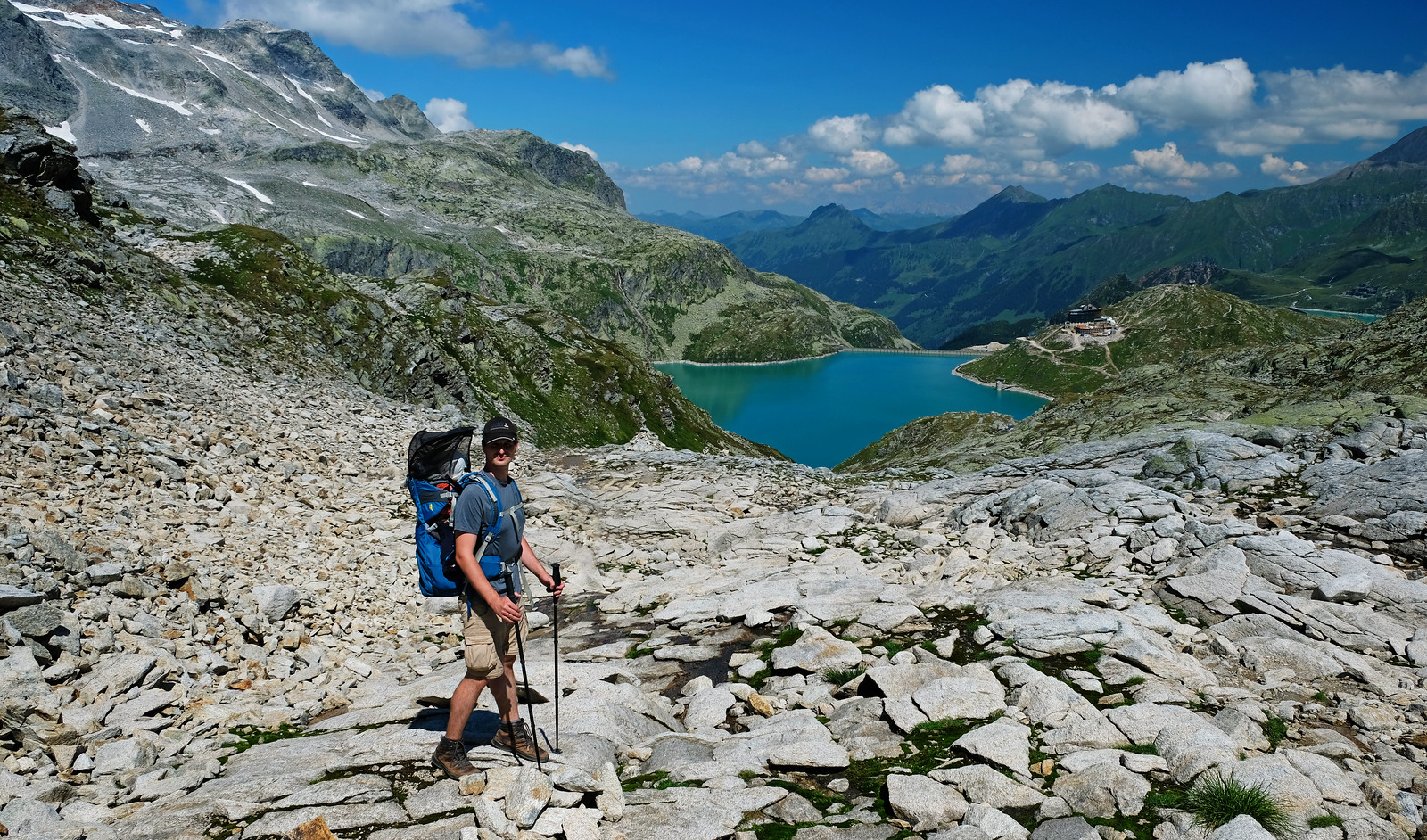
Advantages of choosing the Austrian Alps with kids
You’re not out in the wild.
The Austrian Alps are full of ski resorts that become hiking centers in the summer. The infrastructure is there – ski lifts, mountain huts and restaurants – and they make good use of it. Ski lifts and cabins take hikers up to higher elevations, gaining them 1000-1500 meters. Mountain huts and restaurants are frequent along many trails, so grabbing some food and drinks (or using a proper toilet for that matter) is never a problem.
Are you with a kid who can’t conquer 1000+ meters elevation change? Are you carrying a kid and so you can’t easily conquer 1000+ meters elevation change? That was our case with 11 months old Tomi, and we were happy to use those ski lifts and cabins to start our hikes above the forest line. We could have never hiked up to 2500 meters otherwise.

And it’s a great opportunity not just for us but for other families with small kids, elderly people, pregnant women or whoever else that’s not in a condition to conquer 1000+ meters elevation change on foot.
And because there’s (almost) always a mountain hut or restaurant close by, no worries if you need to change your baby’s diapers or give him something to eat when a thunderstorm just hits you. Or if you need a sheltered place when that thunderstorm hits you. Or the thunderstorm might be over, but everything is wet, it’s still drizzling, and you can’t sit down on a rock to breastfeed.
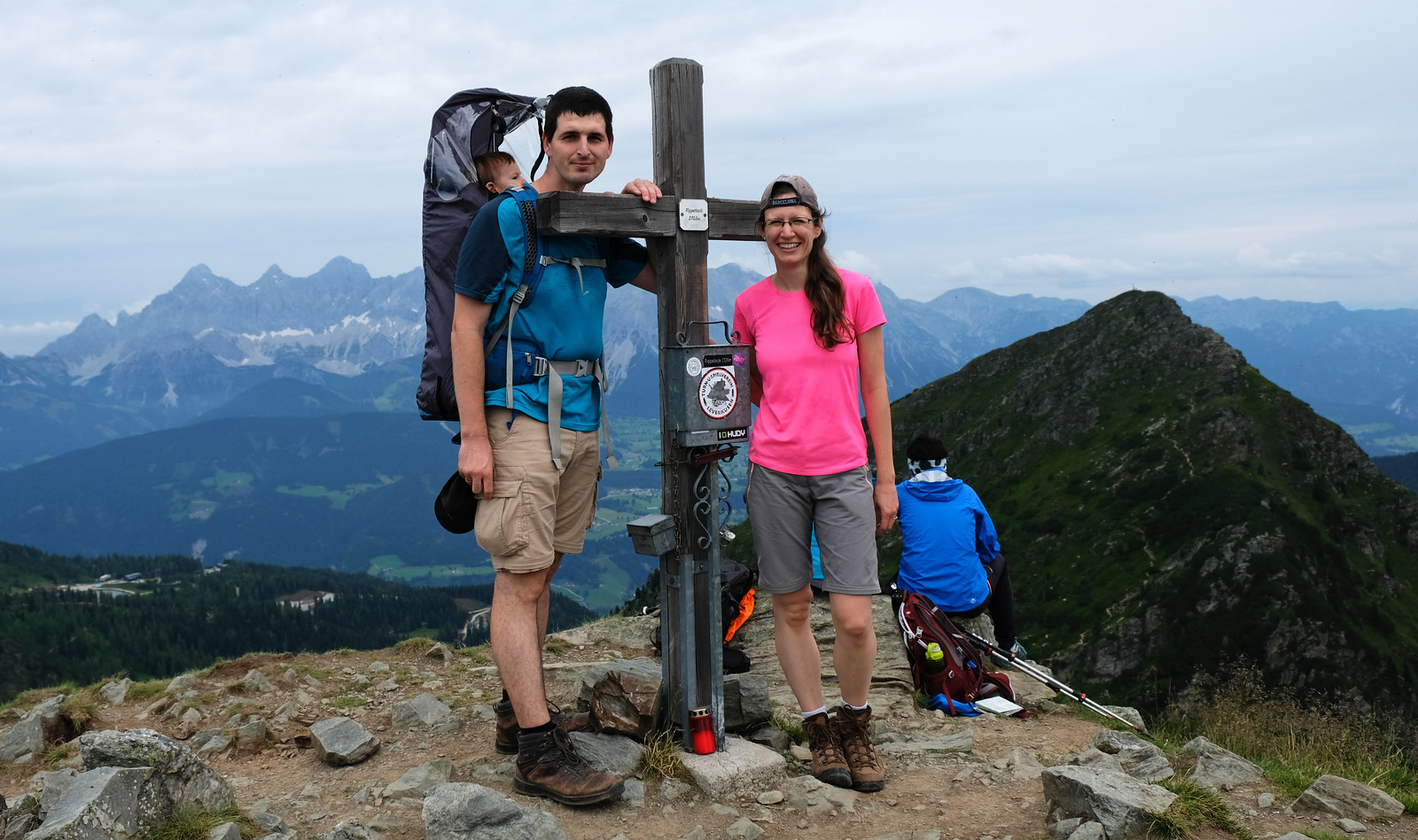
Well, I’m sure that any parent can imagine a zillion situations when it’s better to have a roof above their head than standing in the pouring rain. (Okay, it’s true for any person, actually. But as strong and invulnerable adults, hah, we were used to hiking and eating and surviving hours of pouring rain in the mountains. We didn’t enjoy it, but we managed to get by. We didn’t expect that from our baby – yet. 😛 )
Lots of wide, evenly ascending trails

While hiking in Austria and exploring several regions, we noticed that often there’s at least one wide, evenly ascending trail that we consider an easy hiking trail. Some are also suitable for strollers, but they’re certainly family-friendly, great with a baby carrier or with small kids. We’ve even seen elderly people with walking sticks on some of these trails. Isn’t it great that the beauties of the Alps are accessible to everyone?
Entertainment for kids

In addition to great infrastructure and accessibility, ski resorts in the summer offer different types of entertainment and activities for kids. Like playgrounds with grand views. Adventurous bike tracks. Go-kart. Bouncy castles. With grand views, of course.
We were actually happy that our little boy was too young for these, otherwise starting our actual hikes would have been much harder. But that’s part of what you get when you take your family hiking to Austria – and who would really complain?
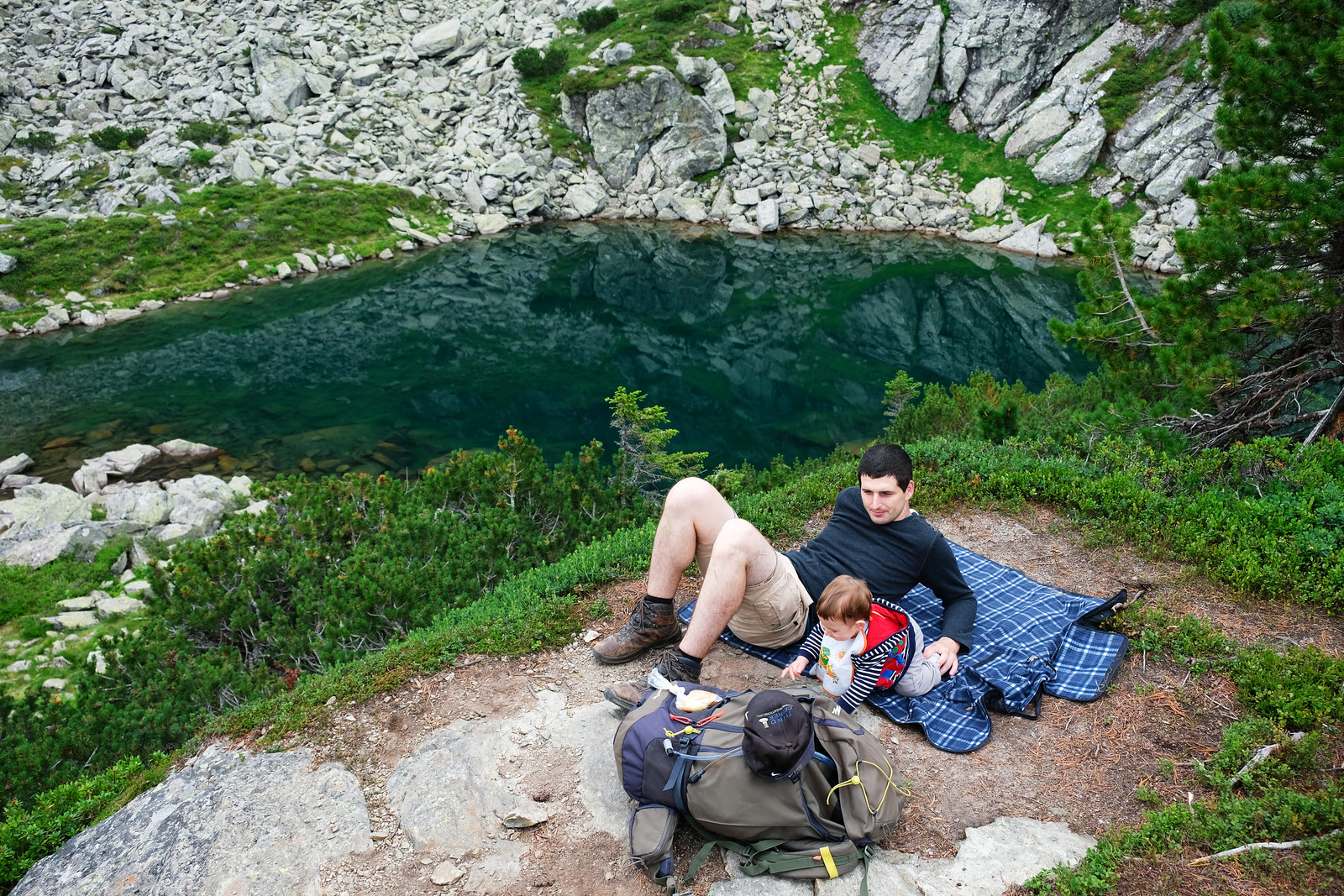
The disadvantage: you’re not out in the wild
But, of course, there’s a price to pay. Most of these easily accessible and easy trails are busy. Very busy on summer weekends when the weather is nice. We didn’t feel like being out in the wild – which is not a surprise, because we were not out in the wild. There were restaurants and ski lifts and people buzzing all around with a glass of beer in hand. We missed the tranquility and peace that we love so much when hiking in the mountains. In exchange we got more comfort and rewarding views that we didn’t need to work hard for.
And finally, there’s always the option to hike further and higher. Once we continued on the more strenuous trails, we met fewer people – which is, again, not a surprise. The verdict? A cliche: you simply can’t have everything, either you choose comfort or wilderness. Or find a balance. The Austrian Alps are great with kids (and without kids, too, by the way), and you can find that balance.
Which are the best hikes in Austria with kids?
The 6 lakes of tauplitz, tauplitzalm, styria.
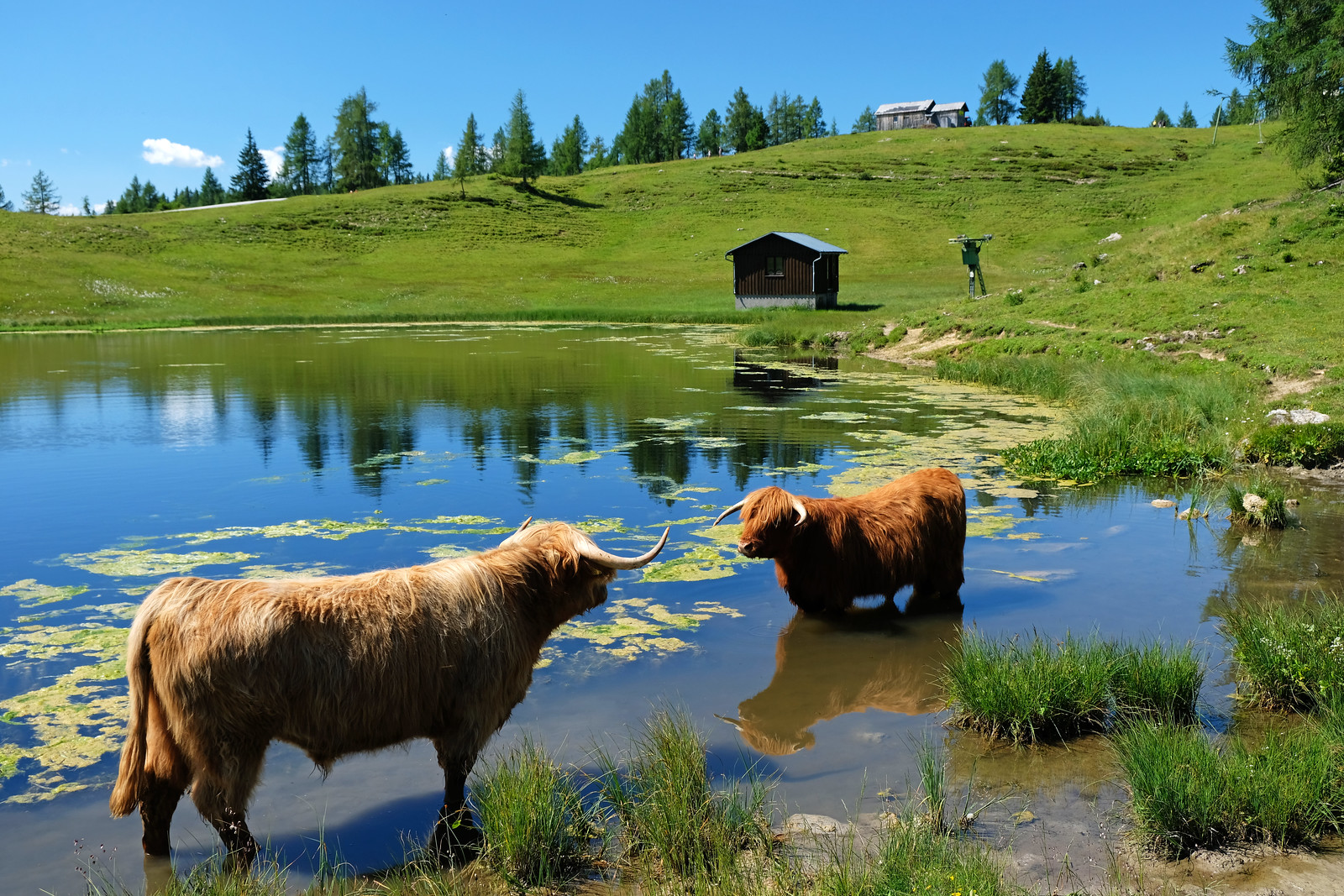
Probably the most magical family-friendly hiking trail in Styria is the 6(!) Tauplitz lakes loop. The full loop is relatively long (I mean to do it with small kids) and somewhat more strenuous at places, but you can easily shorten it and choose to include only some of the lakes.
How to get to the trailhead?
The trailhead is Bergstation Tauplitzalm, the upper station of the Tauplitz ski lift. You can either use the ski lift or drive there on Tauplitzalm-Alpenstrasse, a toll road that starts at the lower terminal. You need to buy the ticket at the gate when entering the road. We preferred the toll road to the ski lift, because it was cheaper (ski lift tickets are issued per person, the ticket for Tauplitzalm-Alpenstrasse is per car), and we were in no hurry to catch the last descent of the ski lift.
Eastern loop from Bergstation Tauplitzalm
From Bergstation Tauplitzalm we started with the eastern part of the loop trail: Tauplitzsee – Steirersee – Schwarzensee. Tauplitzsee is rather a small pond in the midst of a lush green alpine meadow, and it’s very easy to access. Steirersee is further and getting to its shore requires a steep descent, but it was our favorite! It doesn’t only offer magical colors and peak views, but we found a nice beach, too.
Then we ascended again to reach Schwarzensee, another typically beautiful alpine lake, backed up by a giant rock wall. On our way back we took the panorama trail that didn’t take us down to Steirersee but offered fabulous views of it as we passed by. It was narrow and somewhat steep from time to time, but since we carried Tomi, it was not a problem. He had plenty of space to crawl around on the lakeshores.
Western loop from Bergstation Tauplitzalm
If you’d like to shorten the hike, your option is to head back to the trailhead from Tauplitzsee. However, we decided to see the other three lakes, so we continued towards Großsee and started the loop of the three western lakes: Großsee – Märchensee – Krallersee.
Großsee means Big Lake, and it’s the largest of the three, Märchensee is the smallest, but it has the most incredible color, and Krallersee is similar to Tauplitzsee.
Some sections are wide and smooth, you can even use a stroller there, but the full loop can’t be done with a stroller. We put Tomi in our carrier backpack, because he didn’t walk yet, but lots of sections are safe for toddlers and small kids to walk on their own.
Hiking essentials:
- Trailhead : Bergstation Tauplitzalm
- Parking : parking lot near Bergstation Tauplitzalm (at the end of Tauplitzalm-Alpenstrasse)
- Recommended accommodation :
- Length : 13.6 km (5-6 hours) loop
- Difficulty : easy to medium
- Check out the trail map here!
Krimml Waterfalls, Salzburg

It’s one of the best hikes in the Austrian Alps, no matter your age or fitness level. Because it’s breathtaking and accessible.
Thundering Krimml Waterfalls with 380 meters drop over the three stages of falls is one of the most popular natural attractions in Austria. The Waterfall Trail is a wide, well-maintained gravel path, with several viewing platforms on the way. It takes about two hours to reach the end of it: the crossing of the Krimmler Ache stream above the uppermost waterfall.
We made it a loop trail by returning to the visitor parking on Alte Tauernweg. It’s still a relatively easy hiking path, but it’s not a gravel road, and it has fewer waterfall viewpoints than the Waterfall Trail.
Fee is charged both for parking and visiting the Waterfall Trail. (But you get them for free with the Hohe Tauern card.) The lowest waterfall is even wheelchair accessible, and we’ve seen lots of families with strollers on the Waterfall Trail. It ascends though, so it’s harder to push the stroller, but doable. We did it with Tomi in the carrier backpack, just like on other trails.
And it was amazing all the way! Really, it deserves the hype, we’ve seen such thundering waterfalls nowhere else in Europe (okay, except for Iceland, of course).
- Trailhead & parking : Krimml Waterfalls visitor parking (paid parking)
- Length : 7.4 km (3-4 hours) loop
- Difficulty : medium
The trail of 3 glacial lakes at Weisssee Glacier World, Uttendorf, Salzburg

A glacial lake at 2300 meters. That’s where we started our day after the cable car ride from the small town of Enzingerboden. We suspected that a place called Weisssee Glacier World would be stunning, but it was even more stunning!
The easiest and most scenic trail for families is probably the trail of the three glacial lakes. It starts at Weisssee and continues down towards the middle station at Grünsee, passing Tauernmoossee on the way. We found turquoise Weisssee and baby blue Tauernmoossee especially impressive! We walked a bit on the shore of each of the lakes, and it made the trail a bit longer – and nicer, too.
It was all downhill, sometimes it got steep, so be cautious and use the ropes for support. But we were surrounded by giant snow-capped peaks and alpine meadows covered with wildflowers. An alpine idyll, without much effort.
Of course, you can hike up from the middle station to the upper one (or from Enzingerboden to all the way up, for that matter), but that won’t match the physical ability of small kids. Besides, if you want to do hard work for great views, hike further from the upper station. Some of the other trails could be suitable even with kids, like an ascending, but relatively short path to Kalser Törl – and to great views from there!
- Trailhead : Rudolfshütte (upper station of the cable car to Weisssee Glacier World)
- Parking : in front of the cable car station in Enzingerboden (free parking)
- Length : 6.5 km (about 2.5 hours) one-way
Wildkogel Panoramaweg, Wildkogel Arena, Bramberg am Wildkogel, Salzburg

The Wildkogel Arena is a region between the Kitzbühel Alps and Hohe Tauern National Park, and the ski resort turns into a hiking resort in the summer. Several hiking paths start from the upper terminals of the Wildkogel ski lifts at 2100 meters where we already got breathtaking views of the snow-capped peaks of Hohe Tauern.
We chose Wildkogel Panoramaweg which is a 2 hours long loop trail with minimal elevation change and amazing scenery all the way. It took us up to 2224 Wildkogel peak, then continued through the valleys of Geisl-Hochalm and Ganseralm, with a restaurant (and some grazing cows on the alpine meadows, obviously) on the way.

Right by the ski lift terminal there’s a playground made of wood, and some shorter paths can even be done with a stroller (not Wildkogel peak).
- Trailhead : Wildkogel Smaragdbahn lift upper station
- Parking : there are several parking lots in Bramberg am Wildkogel, short walk from the ski lift terminal (free parking)
- Length : 5.3 km (2 hours) loop
- Difficulty : easy
Untersulzbachfall, Neukirchen am Großvenediger, Salzburg
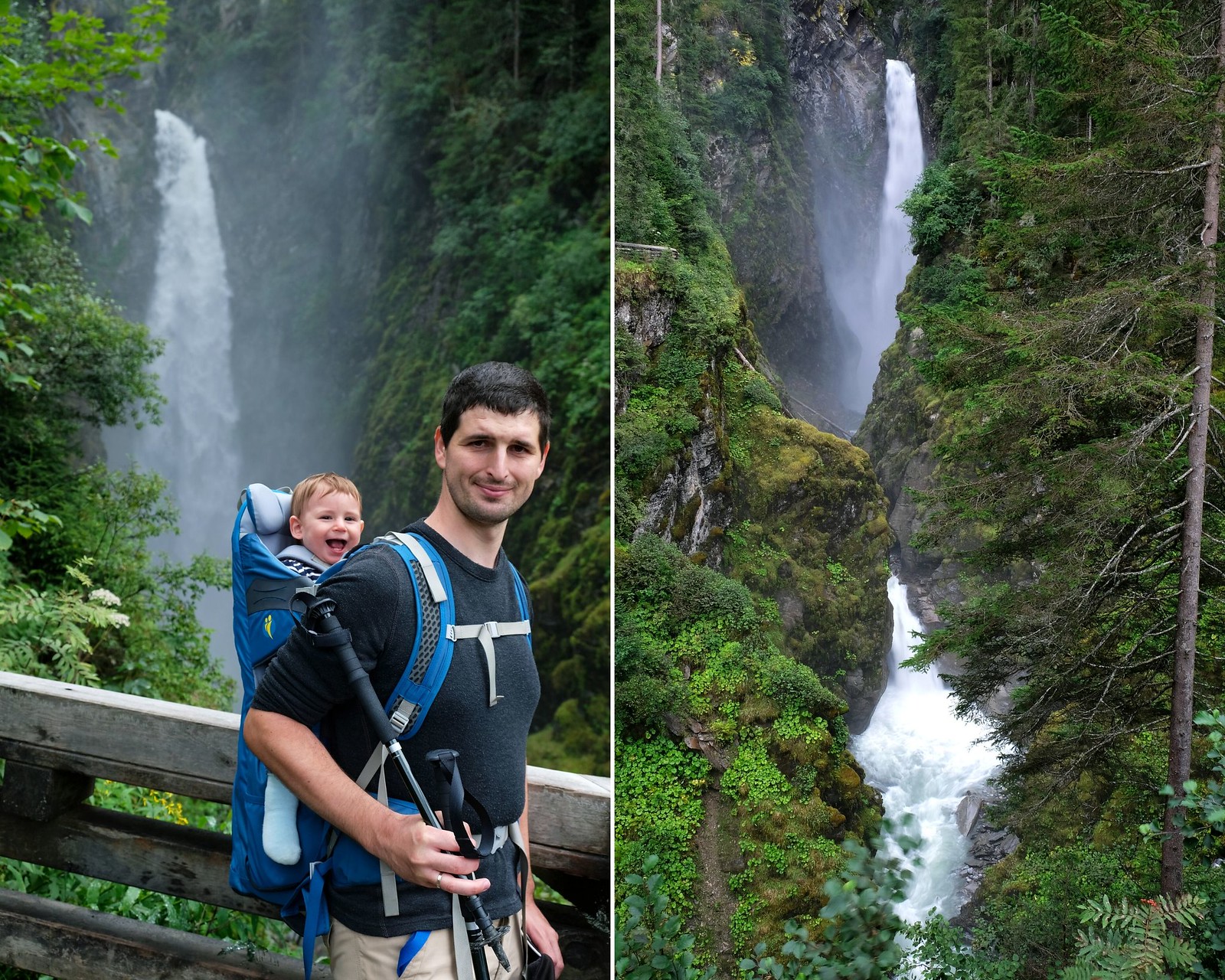
Untersulzbachfall is another lovely kid-friendly hike in the Austrian Alps. It’s very short, has a waterfall and even water access further up.
The loop trail with views of Untersulzbachfall, a 110 meters tall waterfall in lush green Untersulzbach Valley, is very short. It’s not far from either the Wildkogel Arena or the Krimml Waterfalls, so it could be a nice addition to any day spent in the region.
We visited it after the Krimml Waterfalls, and even though it couldn’t compete with those, we liked this trail and its countless scenic viewpoints. We even continued the hike further into Untersulzbach Valley and enjoyed the tranquility of the majestic pine forests of Hohe Tauern. It’s possible to access the cold, clear mountain stream, too.
Even though the trail is quite short, it either ascends or descends by the waterfall, so it’s a medium difficulty trail, and we recommend wearing proper hiking shoes to explore it safely.
- Trailhead & parking : parking area at the end Neukirchen am Großvenediger, towards Untersluzbachtal (free parking)
- Recommended accommodation:
- Length : 3.2 km (1.5 hours) loop
Venedigerweg in Obersulzbachtal, Neukirchen am Grossvenediger, Salzburg
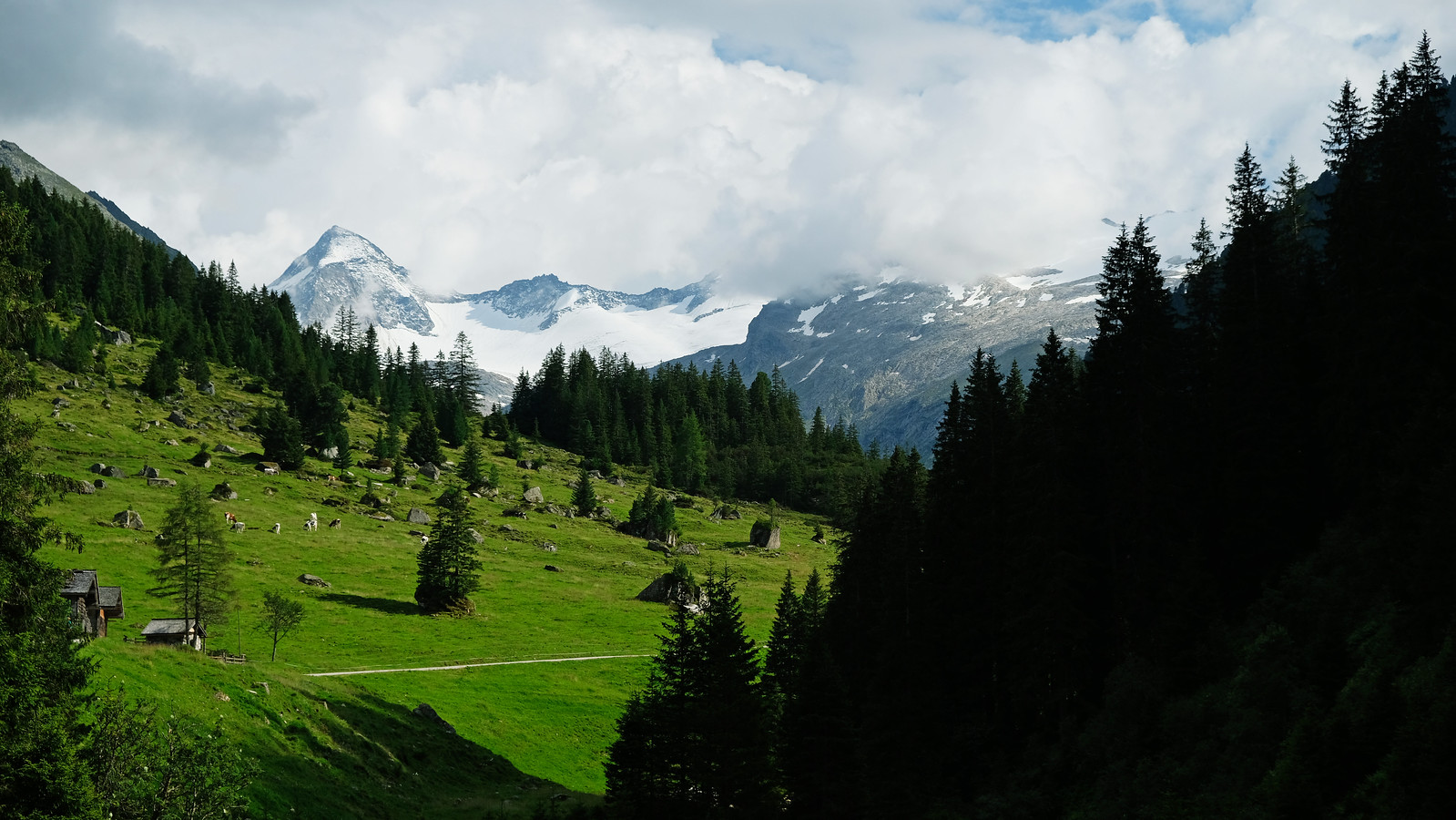
Venedigerweg is also a good hiking trip with kids in the Alps, and you can encourage them with a promise of a fun playground and animal farm at the end.
Obersulzbach Valley – Obersulzbachtal in Austrian – is another valley that belongs to Neukirchen am Grossvenediger. Venedigerweg runs in the valley, and it’s actually a dedicated family path with fun play areas for kids on the way. However, this dramatic glacial valley with its hidden waterfalls will impress adults, too.
Venedigerweg includes the lower area of Obersulzbach Valley. The trail starts with a hanging bridge, not far from the Hopffeldboden paid parking area and ends at Berndlalm, an alpine valley with snow-capped peaks of the Grossvenediger wilderness in the background. (Of course, you can do lots of hiking in that wilderness that offers 25 summits over 3000 meters, but let’s just stay at family-friendly trails in the Alps for now.)
The trail runs along a wild mountain stream, and it offers distant waterfall views and viewing platforms for Seebachfall and Gamseckfall waterfalls. It’s a short detour to the platforms, but it’s well worth it.
There’s a playground, a restaurant and a small animal farm at Berndlalm which is an ideal place to rest before turning back. On our way back we took the path on the other side of the valley. It’s not a family themed trail anymore, but it’s a comfortable, wide path where even cars can drive – though it’s closed to the public and can only be used with permission, so don’t worry about traffic.
A nice addition: Blausee
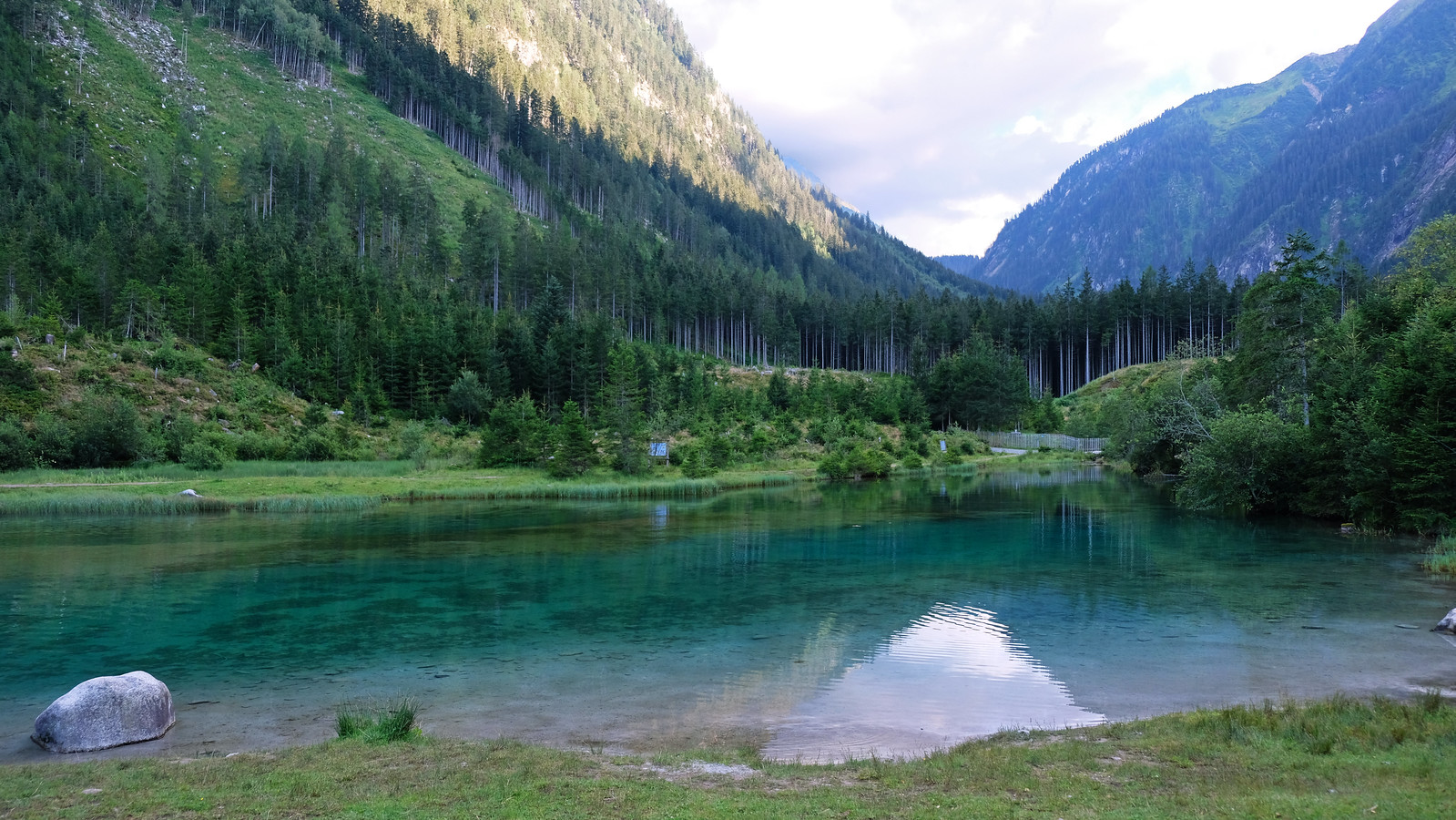
Once we finished the trail and started our drive back, we stopped at the free parking lot at Gasthof Siggen in the beginning of the valley. There’s a small lake called Blausee nearby, and we reached it in about 10 minutes on foot from the parking lot.
As its name indicates it has a magically blue color, especially if the sun shines. We didn’t get sunshine, but we still had a nice picnic on the benches by the lakeshore.
- Trailhead & parking: Hopffeldboden paid parking lot in Obersulzbachtal
- Length : 8 km (3.5 hours) loop
Let’s hear about your favorite family-friendly hikes in Austria?
Disclosure: Please note that affiliate links are used in this post, and at no additional cost to you, we earn a commission if you make a purchase.
Related articles:

Hiking In Gosau Valley, Salzkammergut, Austria

Grossglockner High Alpine Road Scenic Drive In Austria
Which are the best lesser-known hikes in north america, sign up to get your free e-book and join the community:, by beata urmos.
Bea is a travel writer and the co-founder of Our Wanders, an adventurous family travel blog. She’s been traveling for more than 10 years, seeking outdoor adventures, fairy tale castles and unique experiences. She's passionate about sharing all she has learned along the way, and she's an expert in planning trips of any length. She’d love to help you plan your own amazing trip, too.
Leave a comment Cancel reply
Your email address will not be published. Required fields are marked *
Save my name, email, and website in this browser for the next time I comment.
This site uses Akismet to reduce spam. Learn how your comment data is processed .

How to plan a family summer trip to the Swiss Alps
Switzerland’s Jungfrau Region promises dramatic Alpine scenery, flower-flecked meadows and thrills on every summit. And with an extensive network of cable cars and rail routes, it's ideal for a 10-day stress-free family adventure.
Mother Nature pulled out all the stops in the Jungfrau region of the Bernese Alps. From waterfalls and cloud-capped peaks (including the big three: Eiger, Mönch and Jungfrau) to high pastures jangling with cowbells, cliff-hugging villages sprinkled with log chalets and Alpine railways taking you from pine to peak, this is picture-postcard Switzerland at its finest. For families, adventure awaits. Bomb down the mountains on a Trottibike scooter or thunder towards the Eiger on a zip-line. Head up high to play in the summer snow or get close to the water in glacier gorges. From villages to via ferrata, here’s how to plan a 10-day tour that takes it all in.
Days 1-3: Mürren
Begin your trip with one of the area's most spectacular rail and cable journeys, with the town of Interlaken as a starting point. Take the train to Lauterbrunnen and switch onto a gondola to Grütschalp, where a second and arguably more beautiful train ride will whisk you up to Mürren. Perched on a ridge at 1,638 metres, this high-altitude village offers knockout views of the Eiger, Mönch and Jungfrau, and its flower-strewn pastures, spruce forests and dark-timber chalets are the picture of Swiss Alpine beauty.
It's the ideal spot to ease into an active holiday. Hiking trails thread from its flanks in all directions, and a funicular glides up to Allmendhubel , where you can enjoy a meal on the mountain-facing sun terrace while kids romp among giant insects and Alpine blooms in the flower-themed adventure park. Budding botanists will love the nearby flower trail, which features 150 species of mountain flowers, from gentian to edelweiss. Alternatively, adults and older children can ramp up the adrenaline on the nearby Mürren-Gimmelwald via ferrata. A guide will help you learn the ropes, and before long you’ll be exploring a series of chalelnging suspension bridges, zip-lines and tightropes, with sky-high views of the Bernese Alps.

Devote a third day to Schilthorn, which begins with a dramatic cable-car ride above great fangs of rock to the eyrie-like summit of Schilthorn — Piz Gloria. Visited by James Bond in the 1969 film adaptation of On Her Majesty’s Secret Service , this dramatic destination enjoys views across 200 peaks all the way to Mont Blanc and the Black Forest on clear days. Enjoy the helicopter and bobsleigh simulators at Spy World , before heading down to middle station Birg for exhilarating, vertigo-inducing moments on the Skyline Walk and cliff-hugging Thrill Walk (crawl through the tunnel if you dare).
Days 3-7: Grindelwald
With sensational views of the Eiger’s imposing North Face and a lineup of 4,000-metre peaks, it’s no surprise that Grindelwald is one of Switzerland’s most popular destinations for active travellers. The first task is to pick your peak. Swing high above the meadows to 1,391-metre Pfingstegg for a mad downhill dash on the summer toboggan run or zip-line. Or opt for mountain-rimmed Männlichen, where you can enjoy nature-focused fun on the treetop path, explore the vast playground that's home to a giant wooden cow, or head out on the Lieselotte Trail, where children can search for crystals, blow into an alphorn and peek at burrowing marmots through binoculars.

On day two, make for the 2,184-metre summit of First Mountain, which has the edge for thrill-seekers. Clinging to near-vertical cliffs, the First Cliff Walk is an ideal place to begin your day’s activity, with giddy views of the Bernese Alps. From the top, you can whizz towards the Eiger on the First Flyer zip-line at speeds of up to 50mph, before tearing down the slopes back to Grindelwald by mountain cart or chunky Trottibike. Back in the valley, feel nature’s colossal force in Grindelwald’s Glacier Canyon, as you teeter across a walkable ‘spider’s web’ strung between towering rock faces polished by the waters of the Lütschine River. Daredevils can also enjoy the canyon swing , which involves a 90-metre freefall before you rip across the gorge at speeds of 75mph.
However, all of this is just laying the groundwork for a third-day trip up to 3,454-metre Jungfraujoch. From Grindelwald, hop aboard the tri-cable Eiger Express gondola for a riveting ride with views of the Eiger’s mile-high North Face. From the Eiger Glacier station at its top, switch to the Jungfrau Railway. This red train has been chugging up to the summit since 1912 and will transport you up to Europe’s highest railway station in less than 30 minutes. Here, the Sphinx observation terrace offers out-of-this-world views of the 14-mile Aletsch Glacier and the surrounding sea of 4,000-metre peaks. It’s snowy up top all year round, so dress warmly for sledding, tubing and zip-lining in the snow park, or a subzero wander through the glittering, sculpture-strewn tunnels of the Ice Palace.

Days 7-10: Meiringen (Haslital)
From Grindelwald, take a beautiful train ride via Interlaken, or a panoramic bus ride over the Grosse Scheidegg mountain pass to reach Meiringen, a pretty Alpine town in the Haslital Valley that's surrounded by dramatic activity. Top billing goes to the 120-metre-high Reichenbach Falls, which crash over forested cliffs with a roar. This is where writer Arthur Conan Doyle had fictional detective Sherlock Holmes and villainous Dr Moriarty fall over the edge in the 1893 story The Final Problem . For a less intense experience, take the funicular up and hike back down before stopping in at Patisserie Frutal for a Swiss meringue — Meiringen lays claim to fame as the 18th-century birthplace of this sweet treat.
The next day, continue your exploration of Meiringen’s surrounding cliffs and ravines. A quick train ride from town will see you reach the Aare Gorge, which carves a deep, narrow path through limestone tunnels and galleries and past a turquoise torrent of glacial water. Visit later in the day if you can, as the canyon is at its most entrancing when illuminated by summer-evening rays. Its closest rival is the waterfall-splashed Rosenlaui Gorge, where a circular trail leads through primeval forest and past chalk-slate cliffs pounded smooth by the Weissenbach River.
Finally, head north of Meiringen, to Hasliberg. This area is a family favourite, thanks to the three-mile Muggestutz Dwarf trail that runs from Mägisalp to Bidmi, where kids can dry pine cones, take on the ‘eagle swing’ and find cave treasure. Make a day of it and check out the marble run from Bidmi to Reuti, which offers 12 giant marble runs immersed in nature and a firepit for barbecues (wood is provided).

Related Topics
- FAMILY TRAVEL
- EDUCATIONAL TRAVEL
- ADVENTURE TRAVEL
You May Also Like

10 best things to do in Switzerland

Take to the waves: how to plan the ultimate family sailing holiday

Where to eat on the Swiss Riviera this winter

How to plan a trip to Bali, Indonesia

All aboard: explore Switzerland by train

AI can help you plan your next trip—if you know how to ask.

5 of the best Swiss city cycling routes
- Terms of Use
- Privacy Policy
- Your US State Privacy Rights
- Children's Online Privacy Policy
- Interest-Based Ads
- About Nielsen Measurement
- Do Not Sell or Share My Personal Information
- Nat Geo Home
- Attend a Live Event
- Book a Trip
- Inspire Your Kids
- Shop Nat Geo
- Visit the D.C. Museum
- Learn About Our Impact
- Support Our Mission
- Advertise With Us
- Customer Service
- Renew Subscription
- Manage Your Subscription
- Work at Nat Geo
- Sign Up for Our Newsletters
- Contribute to Protect the Planet
Copyright © 1996-2015 National Geographic Society Copyright © 2015-2024 National Geographic Partners, LLC. All rights reserved

IMAGES
VIDEO
COMMENTS
The majestic Austrian Alps stretch across the country, an awe-striking area of Ice Age valleys, verdant heaths and alluvial cones within Europe's largest national park, 700-square-mile Hohe Tauern. Taking in the dramatic cities of Salzburg and Innsbruck and the beautiful province of Tirol, home to spectacular skiing and hiking, as well as Gross ...
Experience the thrill of skiing down the slopes of Dachstein Glacier, one of the most beautiful places in the Austrian Alps. 2. Grossglockner High Alpine Road. Picture this: you're cruising along a winding road, windows down, the fresh alpine air filling your lungs.
Top Attractions In Kaprun. Kitzsteinhorn: The Kitzsteinhorn is a famous skiing mountain in the Eastern Alps. From modern mountain railways to world-class infrastructure, Kitzsteinhorn gives holidaymakers unparalleled Alpine experience year-round. Add to that is the top snow quality from October to early summer.
Start in Vienna | 2 Week Austria Road Trip. Start in Salzburg, or Munich | 1 Week Austria Road Trip. Start in Munich | 10-Day Bavarian Alps & Tyrolean Alps Road Trip . Car Rental . We recommend using the Discovercars.com car rental reservation platform to search for and book car rentals. This easy-to-use booking platform compares car rental ...
Route: Heidelberg (GER) → Stuttgart (GER) → Schwarzwald (GER) → Fribourg (SWI) → Montreux (SWI) → Gstaad (SWI) → Bregenzerwald (AUS) → Kufstein (AUS) → Zell am See (AUS) The Alps of Germany, Austria, and Switzerland are so big, so beautiful, that you really need a plan to make the most of your visit. We have 11 for you.
2-Week Austria Itinerary Summary. Austria Road Trip Route Map. Tips for Road Tripping in Austria. How to Book this Austria Travel Itinerary. Arrival in Vienna. Day 1: Wachau Valley. Days 2-3: Filzmoos and the Dachstein Mountains. Day 4: Grossglockner High Alpine Road. Days 5-6: Mayrhofen and the Zillertal Alps.
The majestic Austrian Alps stretch across the country, an awe-striking area of Ice Age valleys, verdant heaths and alluvial cones within Europe's largest national park, 700-square-mile Hohe Tauern. Taking in the dramatic cities of Salzburg and Innsbruck and the beautiful province of Tirol, home to spectacular skiing and hiking, as well as Gross ...
The Start of your Austrian Alps Trip. Ideally, you'll have plenty of time to visit these seven magnificent places and be amazed by the wonders you'll encounter. Fortunately, distances in Austria aren't particularly long so you can drive around the country, and it won't take you more than six hours ...
Werfen is also home to a huge natural ice cave, Eisriesenwelt, where stalactite-filled passages lead deep into the mountain. Photograph: Shutterstock. 6. Grossglockner High Alpine Road. Completed ...
The majestic Austrian Alps stretch across the country, an awe-striking area of Ice Age valleys, verdant heaths and alluvial cones within Europe's largest national park, 700-square-mile Hohe Tauern. Taking in the dramatic cities of Salzburg and Innsbruck and the beautiful province of Tirol, home to spectacular skiing and hiking, as well as Gross ...
Kayla Levy shares her nine-day trip through Austria, including five days of hut-to-hut hiking in the Alps and two days of touring Vienna. Mountaintop beers, roaming goats, and homemade strudel ...
10 Reasons to Go Hiking in Austria Whether you're exploring one of the national parks, experiencing the beauty of the Alps on a long-distance trail, or heading out on a family day hike - Austria offers unlimited opportunities. 10 reasons to choose Austria for your hiking break
Untersberg is located at a height of approx.1740 kms above sea level. 2023. 5. Salzburg Cathedral. 4,361. Architectural Buildings • Churches & Cathedrals. By 101jumper. First established in 774, a tour of the cathedral reveals the many levels of history beginning with the Roman era…. 2023.
The best way to do a one-week trip in the Austrian Alps is to choose one town, and stay there the entire time. This is so much more relaxing than lugging your bags around to a new place every other day! You can take day trips to other cities, and still have some time to relax and really make that town your home. Not to mention the little Alpine ...
However, a road trip in the summer through the Austrian Alps is an unforgettable experience. The Grossglockner High Alpine Road is a must for the bucket list as it's one of the most scenic road trips in Europe! It offers sensational views and covers 48km with altitudes reaching 2500m. On the route, you'll have information points, viewpoints ...
How to Book This 10-Day Austria-Germany Travel Itinerary. Essential Tips for Traveling in Bavaria and Tyrol. Day 1: Arrive in Munich, Drive to Garmisch-Partenkirchen. Day 2: Höllentalklamm Gorge and Lake Eibsee. Day 3: German Alpine Road & King Ludwig II's Fairy Tale Castles. Day 4: Lake Drachensee.
The Alps boast some of the most sublime lakes in the world, including Lake Constance, which spans Germany, Switzerland, and Austria. Along its 167 miles of shoreline, visitors can find both magical castles and charming towns. Of all the Alpine mountains, the Matterhorn stands above the rest thanks to its almost-symmetrical pointed peak that ...
Day trip to the Alps. The Alps are long. About 1200 km long. Unfortunately, the mountain range is still not quite long enough, since it stops just short of Vienna. ... Bergfex travel and weather portal for the Austrian Alps; Austrian National Railways for journey planning and tickets; Last modified: March 22, 2024. Ad: (Find a light classical ...
A Holiday in Austria puts a Smile on your Face. An experience, an encounter, sometimes just a moment - and the new somehow feels familiar. In Austria, this atmosphere is literally in the air: A sensation that, in nature, feels light and free, full of fun and joie de vivre. A feeling that, while connecting with the people who live here, feels ...
Overview of this Road Trip Itinerary. This 2 week road trip itinerary in the Alps will be a circuit route starting and ending in Munich. This road trip includes stops in 4 different countries -- Austria, Switzerland, Liechtenstein and Germany. In total, there will be about 19 hours of driving split across 10 days.
All rail and coach travel throughout your tour. Eurostar Light Meals. Accommodation. 8 nights' 4-Star hotel accommodation - 6 nights in a family-run hotel in St Johann, nestled in a valley surrounded by impressive alpine mountains. Plus, 1 night in Cologne on the outbound journey and 1 night in Cologne on the inbound journey.
Venedigerweg in Obersulzbachtal, Neukirchen am Grossvenediger, Salzburg. Venedigerweg is also a good hiking trip with kids in the Alps, and you can encourage them with a promise of a fun playground and animal farm at the end. Obersulzbach Valley - Obersulzbachtal in Austrian - is another valley that belongs to Neukirchen am Grossvenediger.
Set in the heart of the Kitzbüheler Alpen mountain range in Austria lies the beautiful Baroque town of St. Johann. Filled with stunning buildings and charming cafes, and a hub for culture, St. Johann is your home base for this 8-day rail tour through the Austrian Alps. The journey begins as you travel from London to Brussels and Cologne and ...
Days 1-3: Mürren. Begin your trip with one of the area's most spectacular rail and cable journeys, with the town of Interlaken as a starting point. Take the train to Lauterbrunnen and switch onto ...